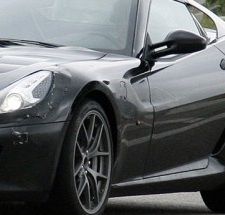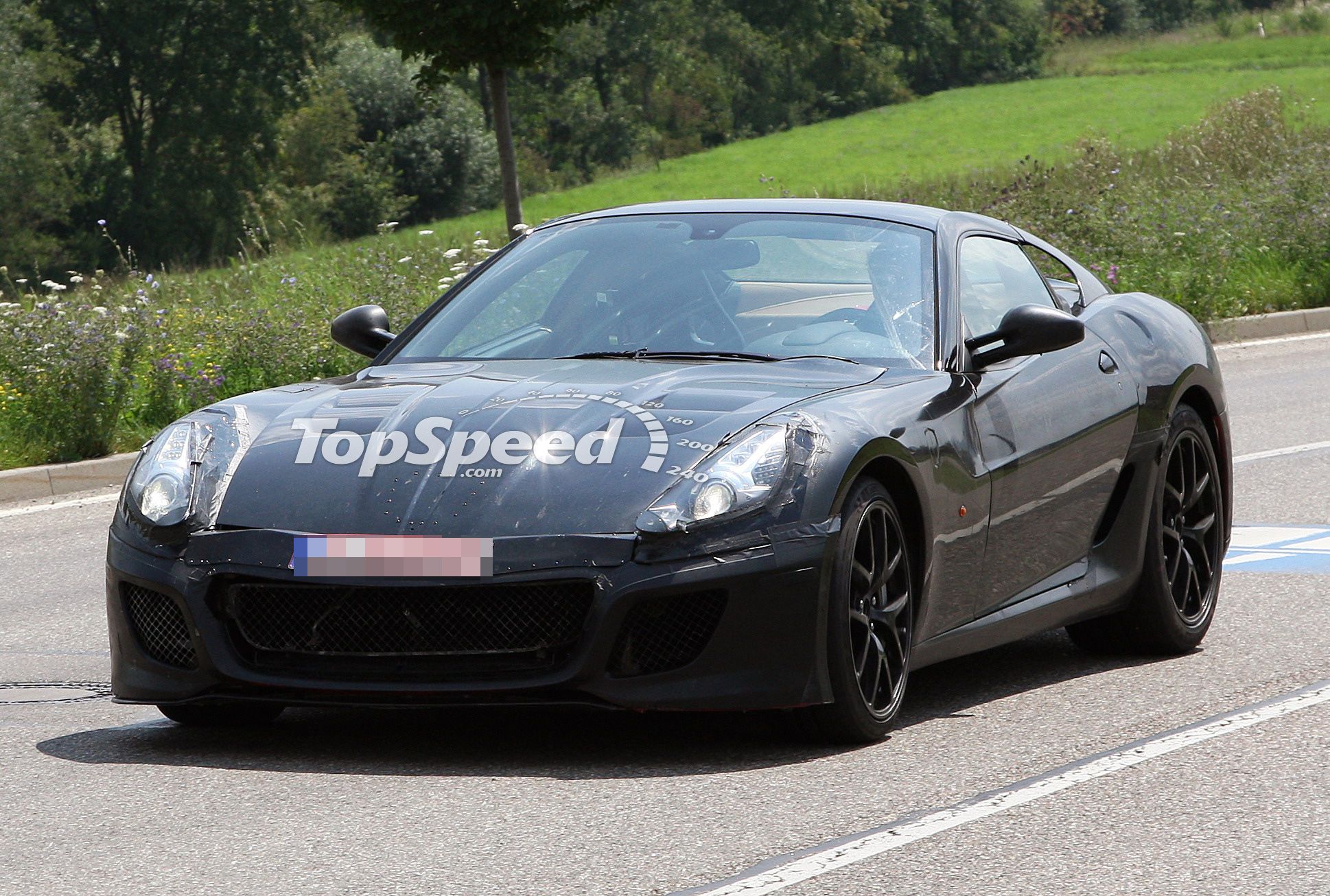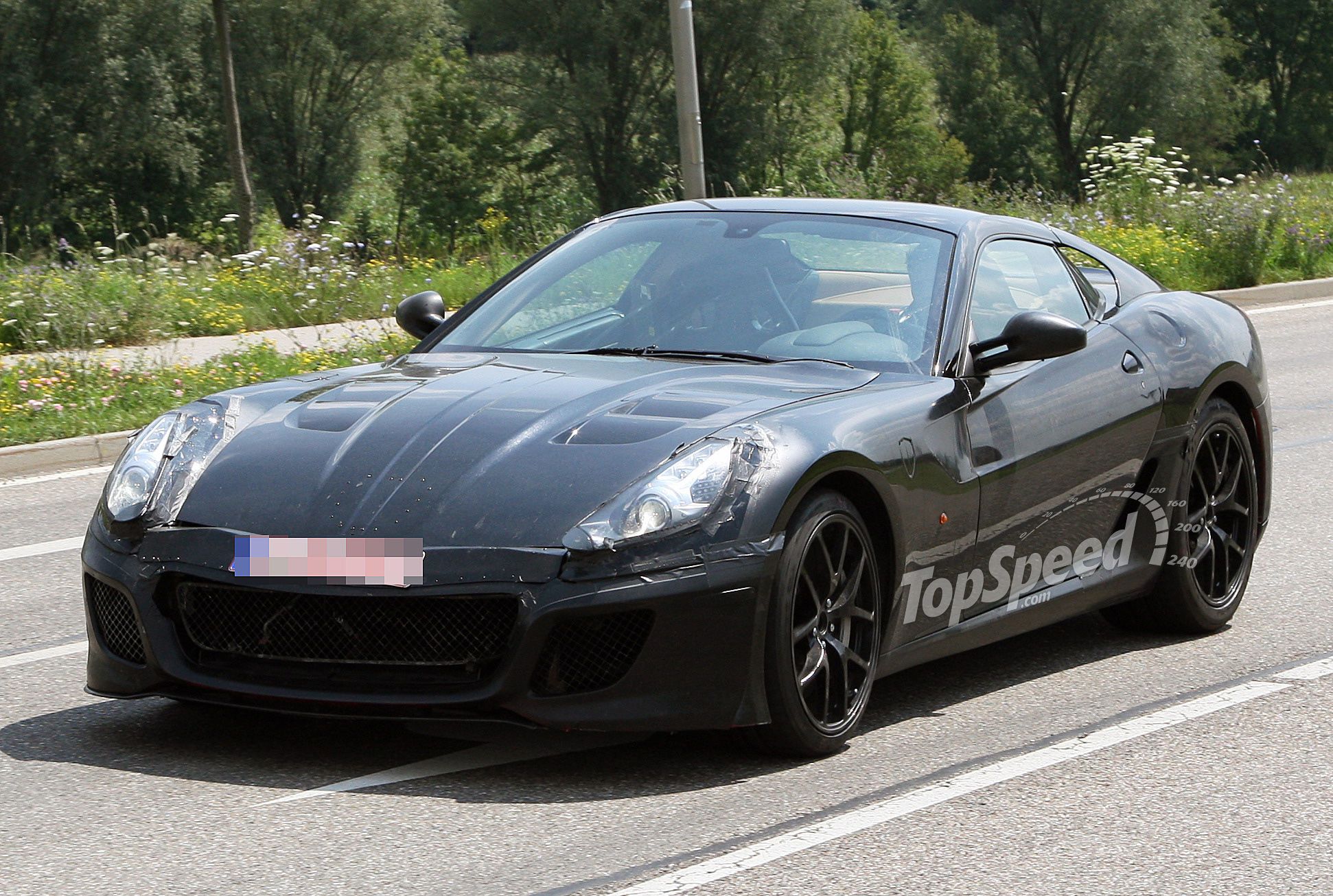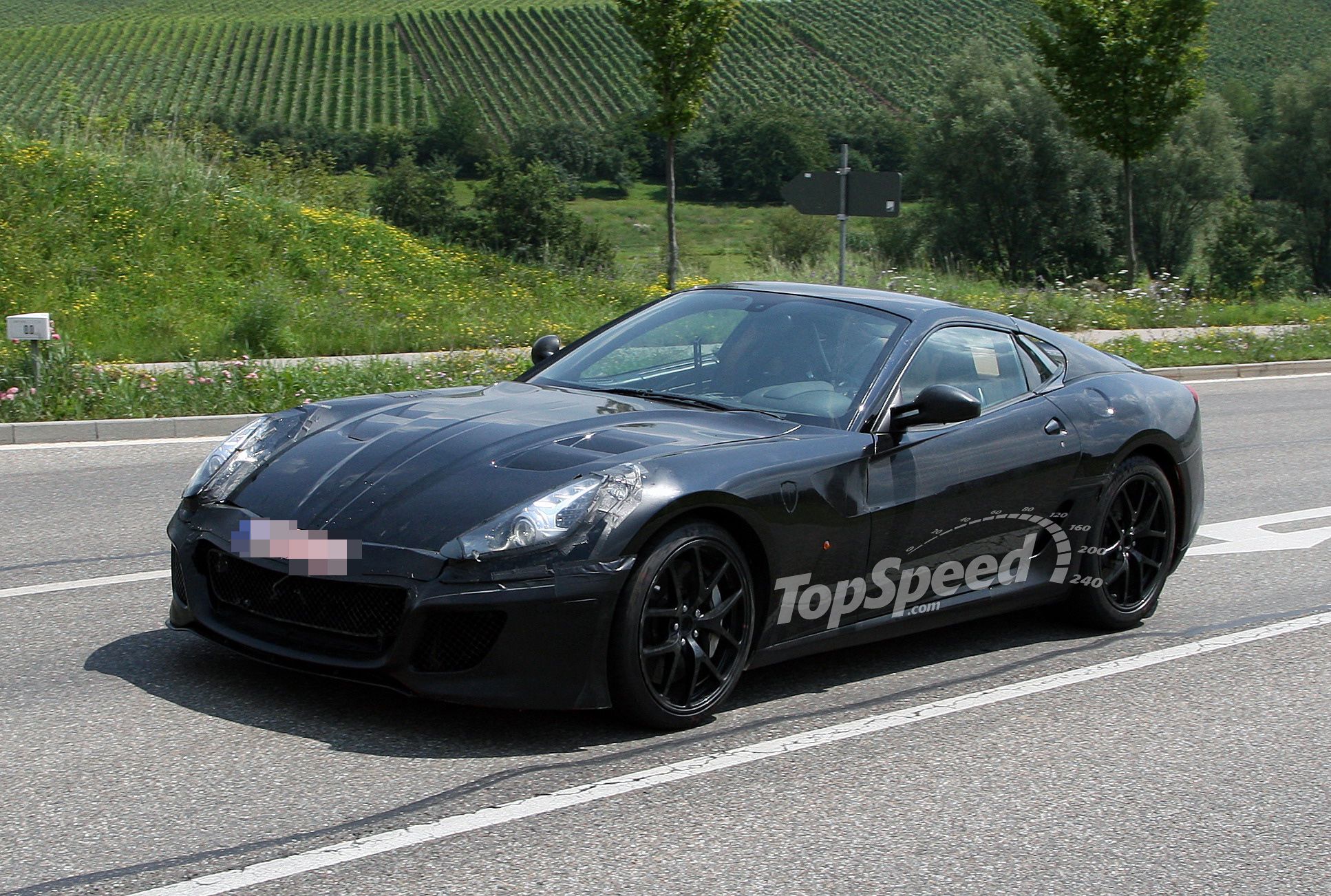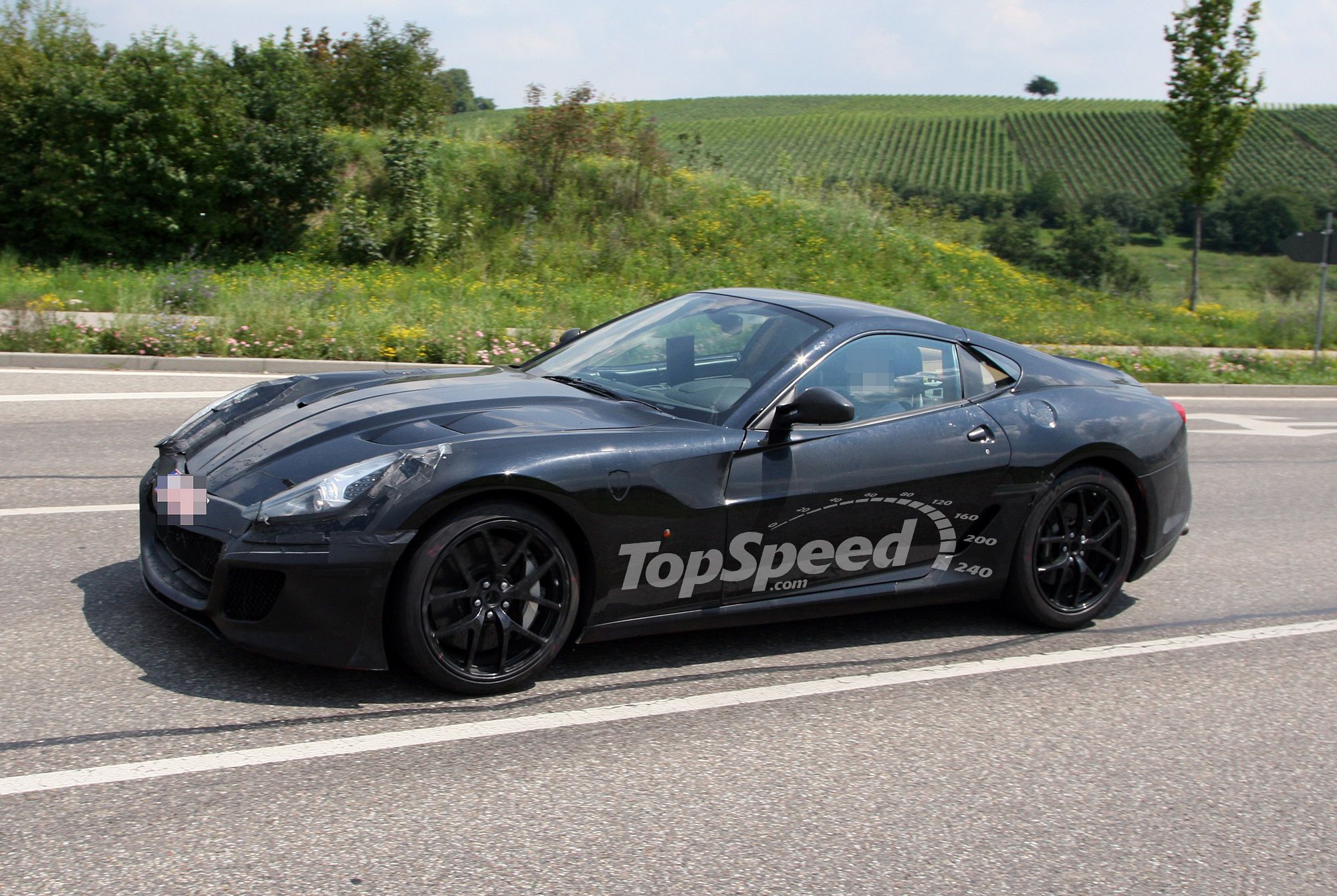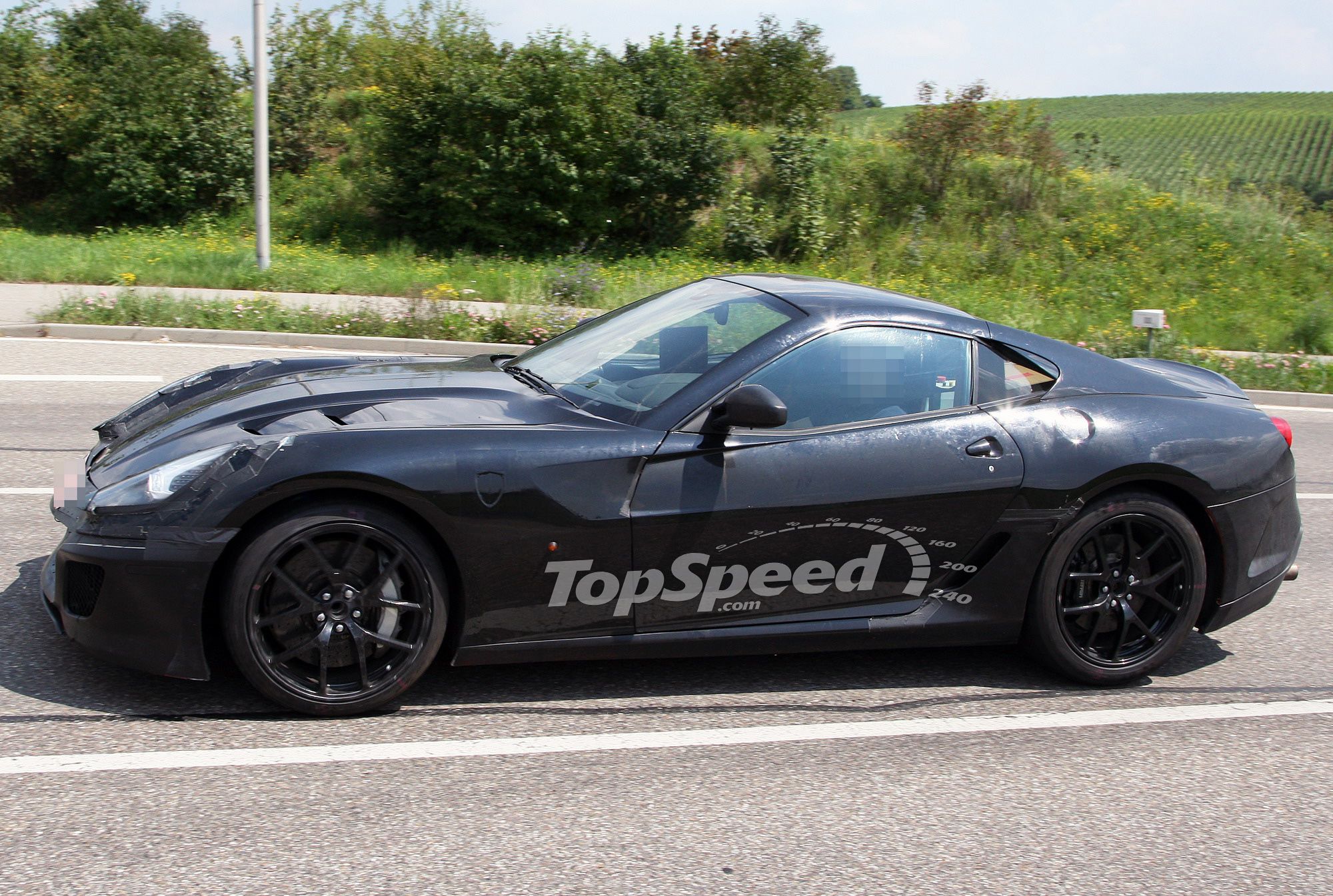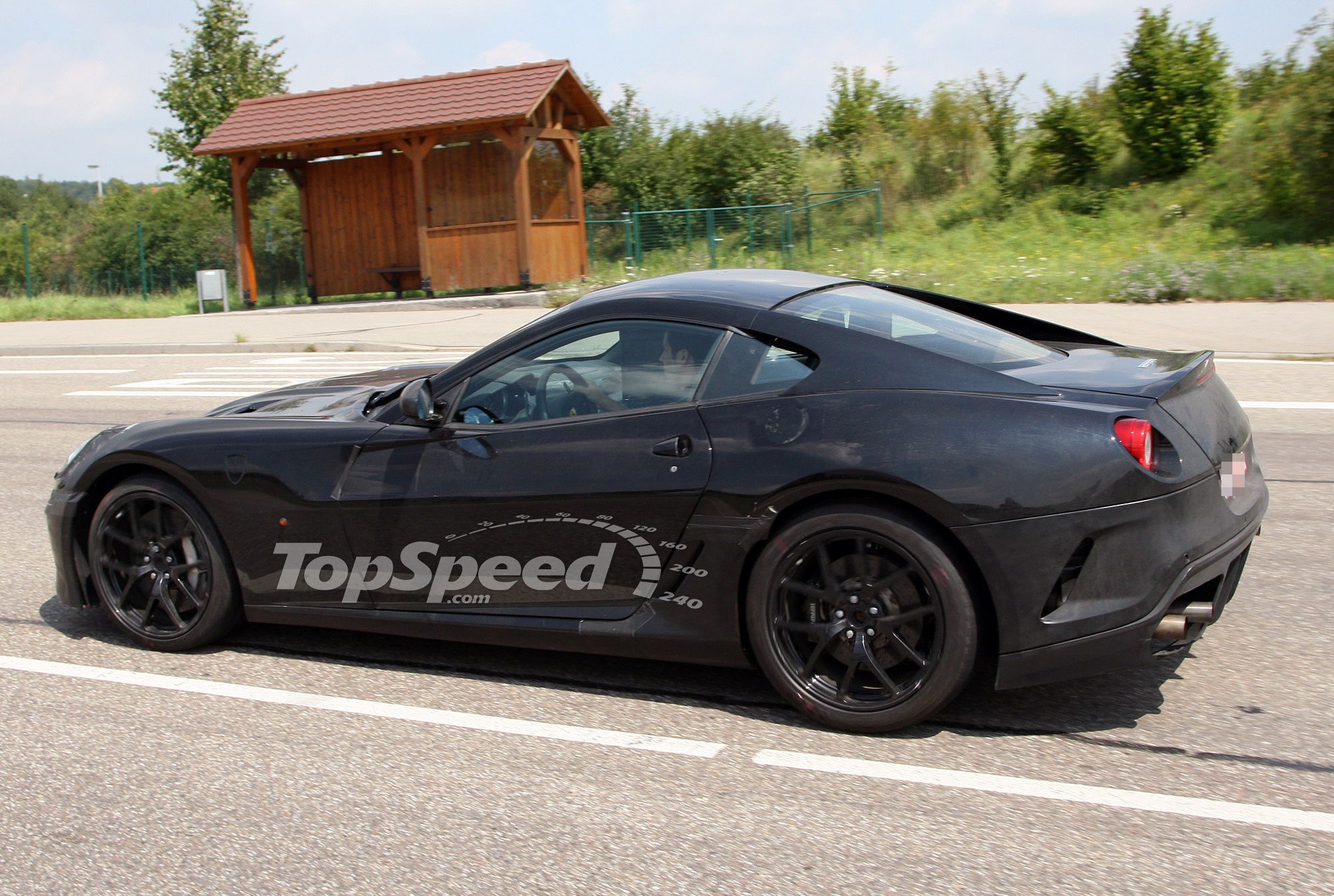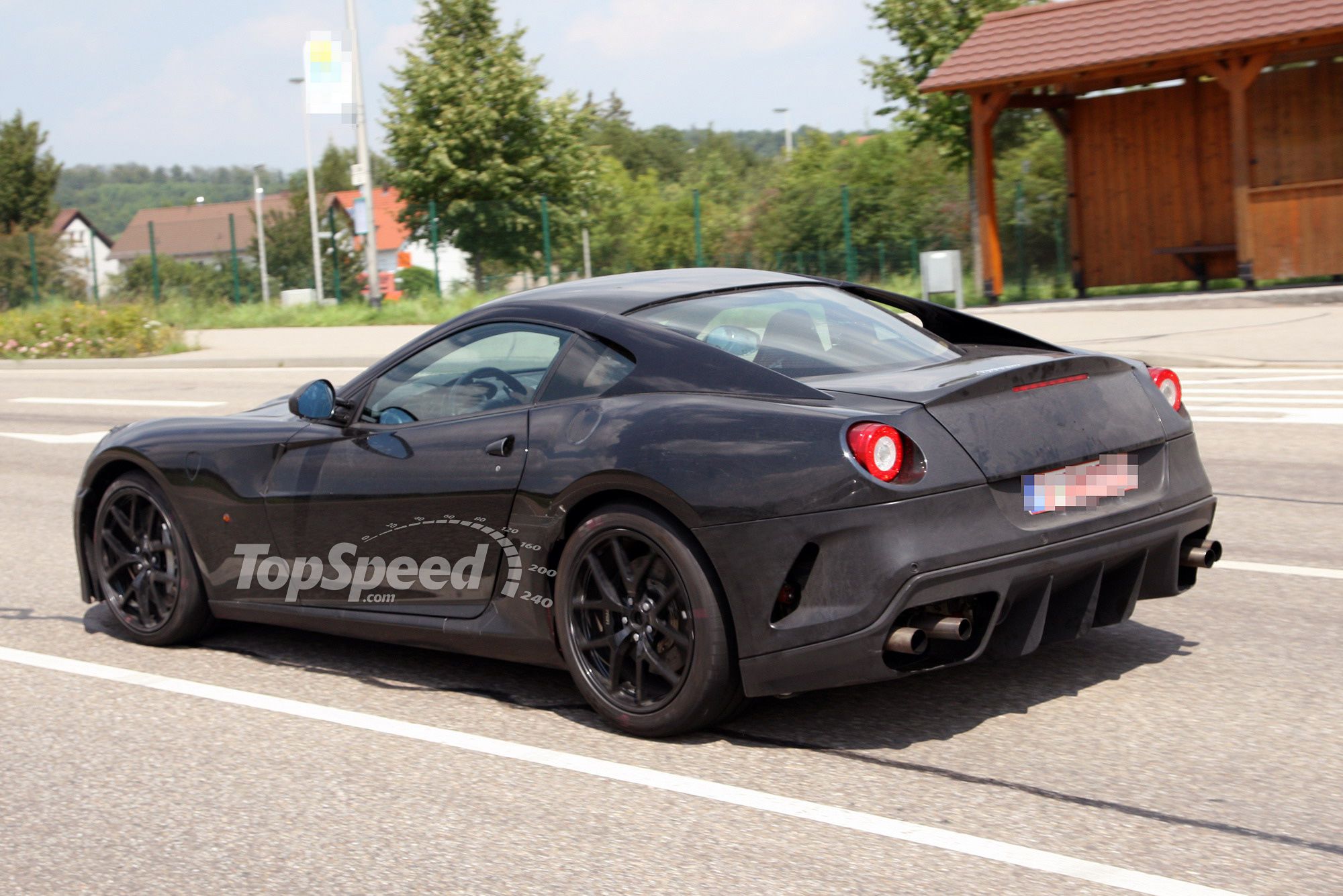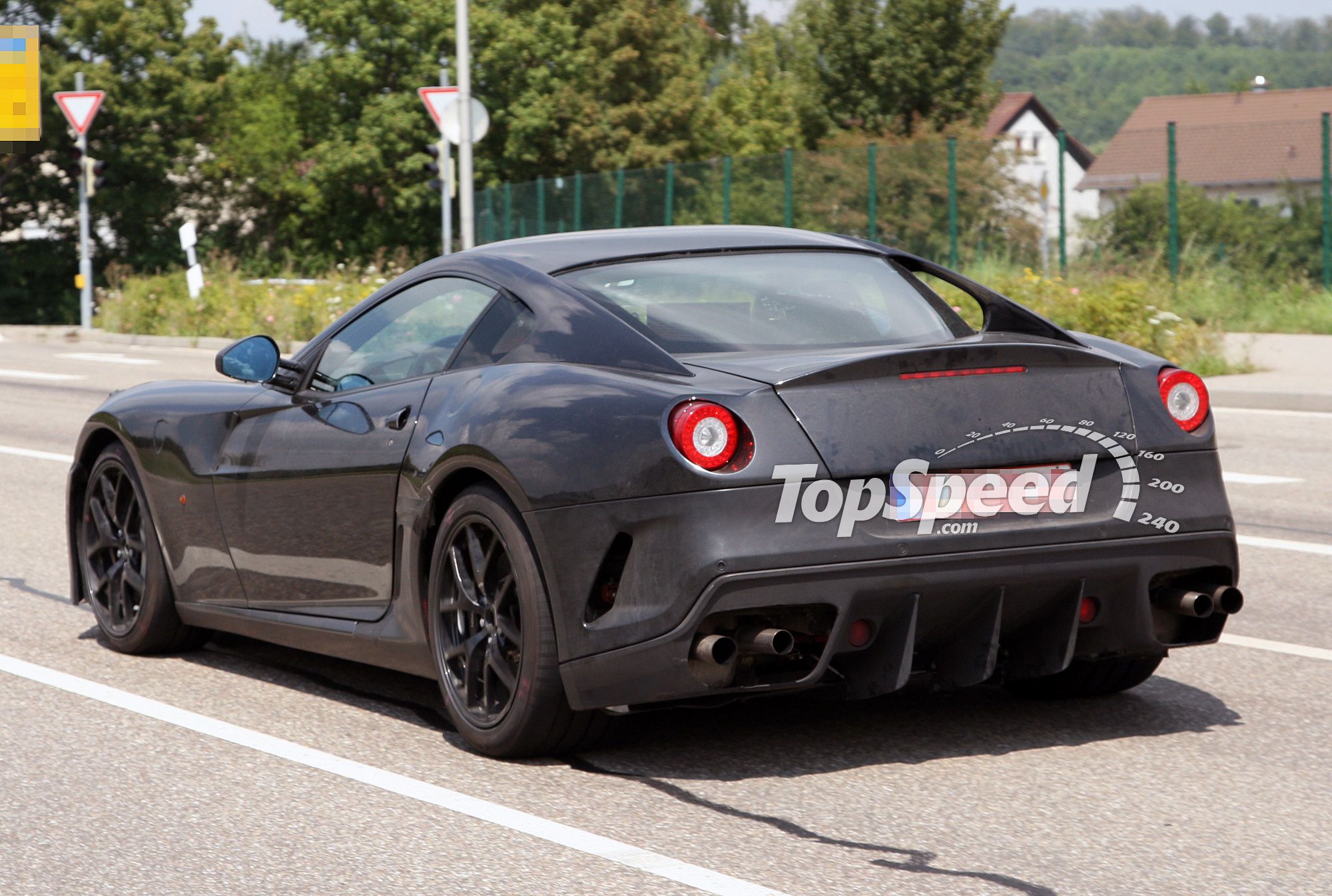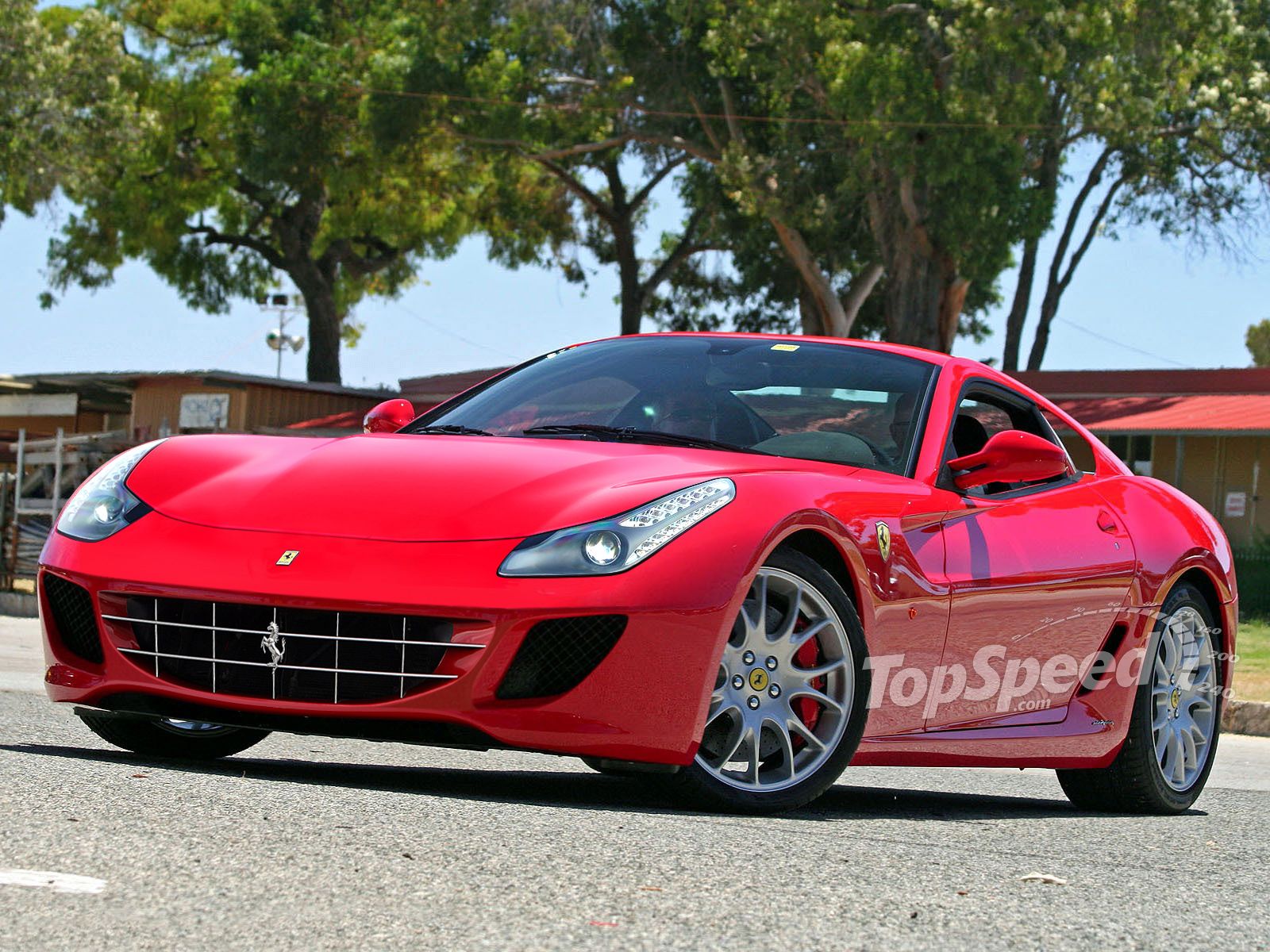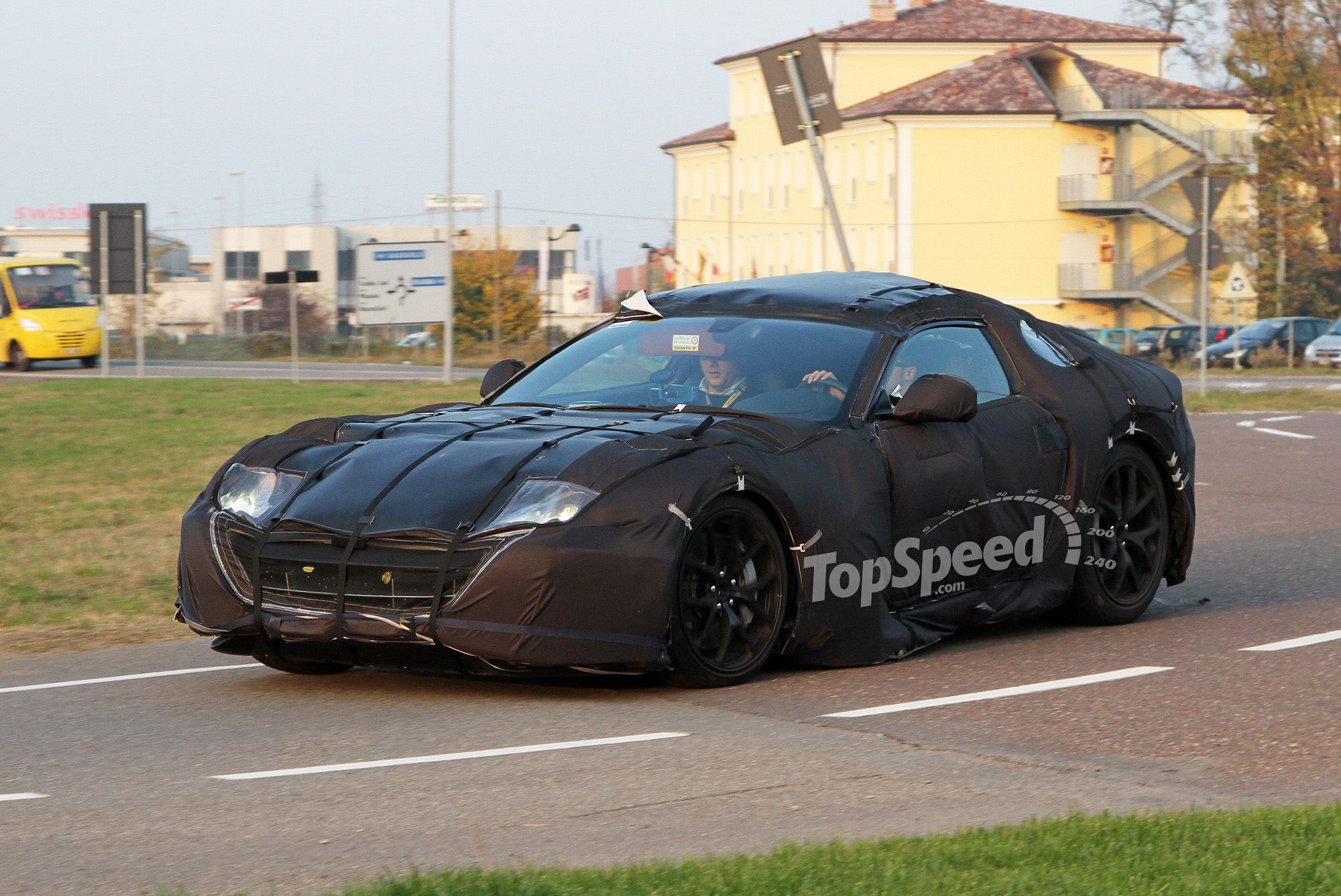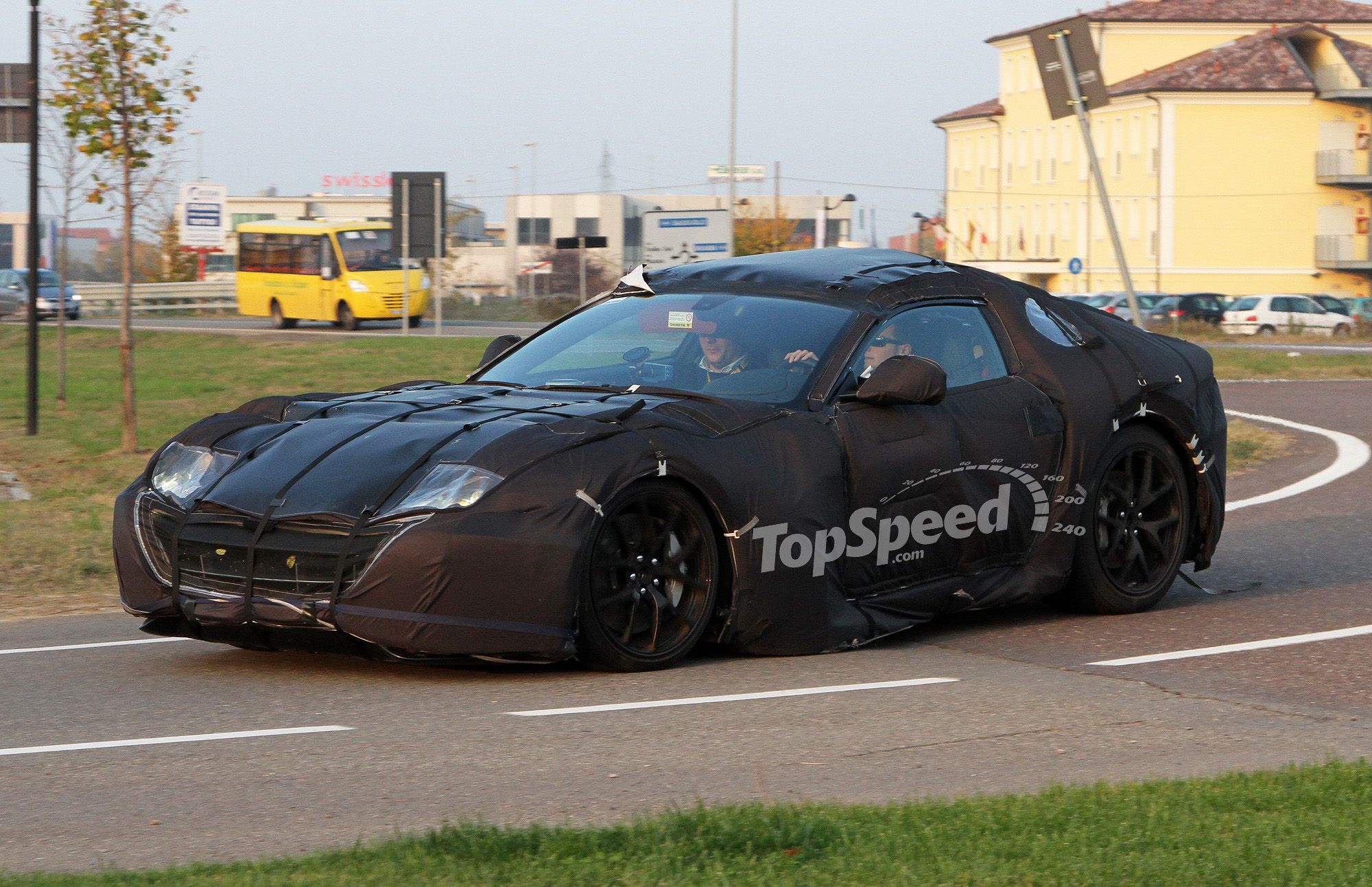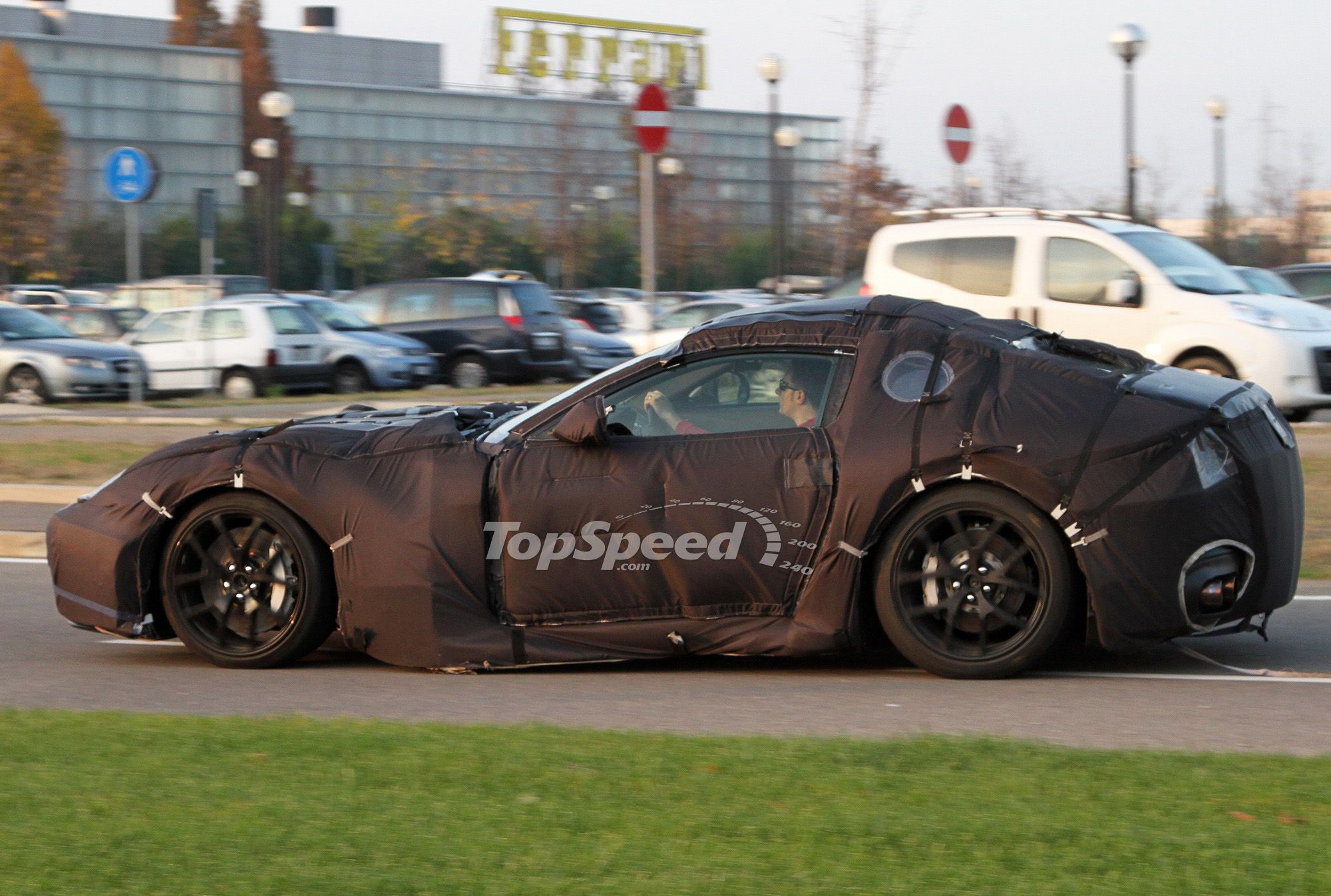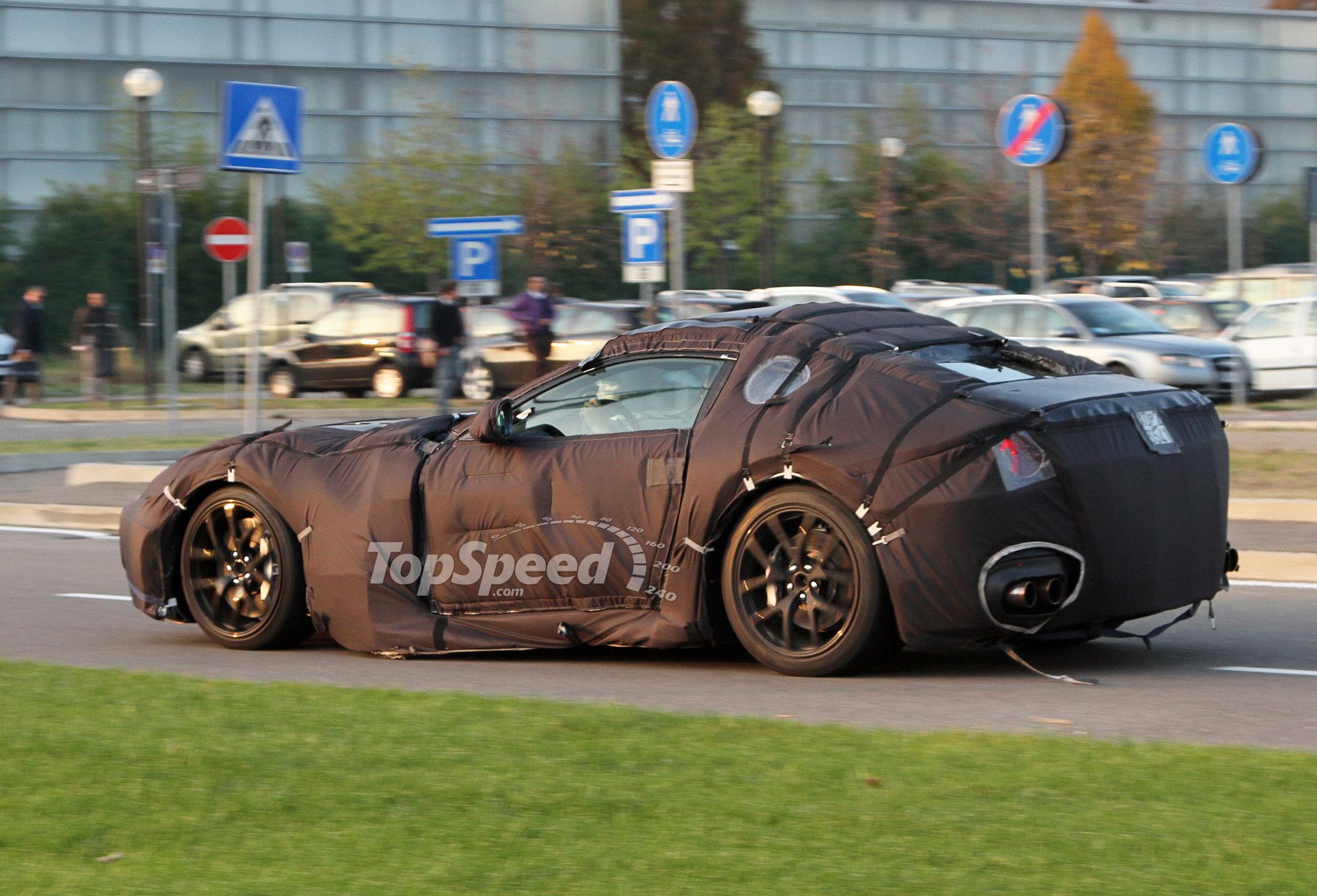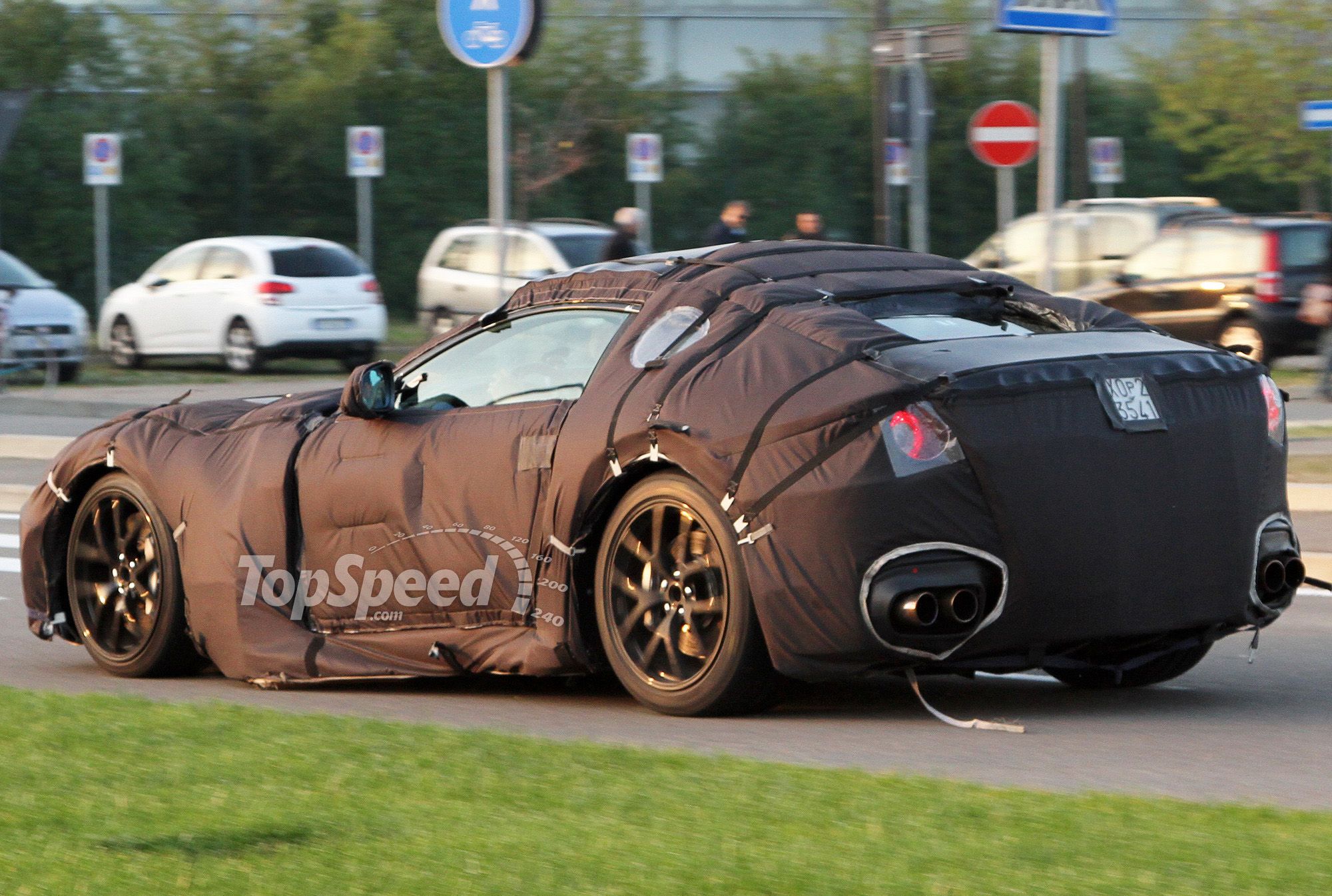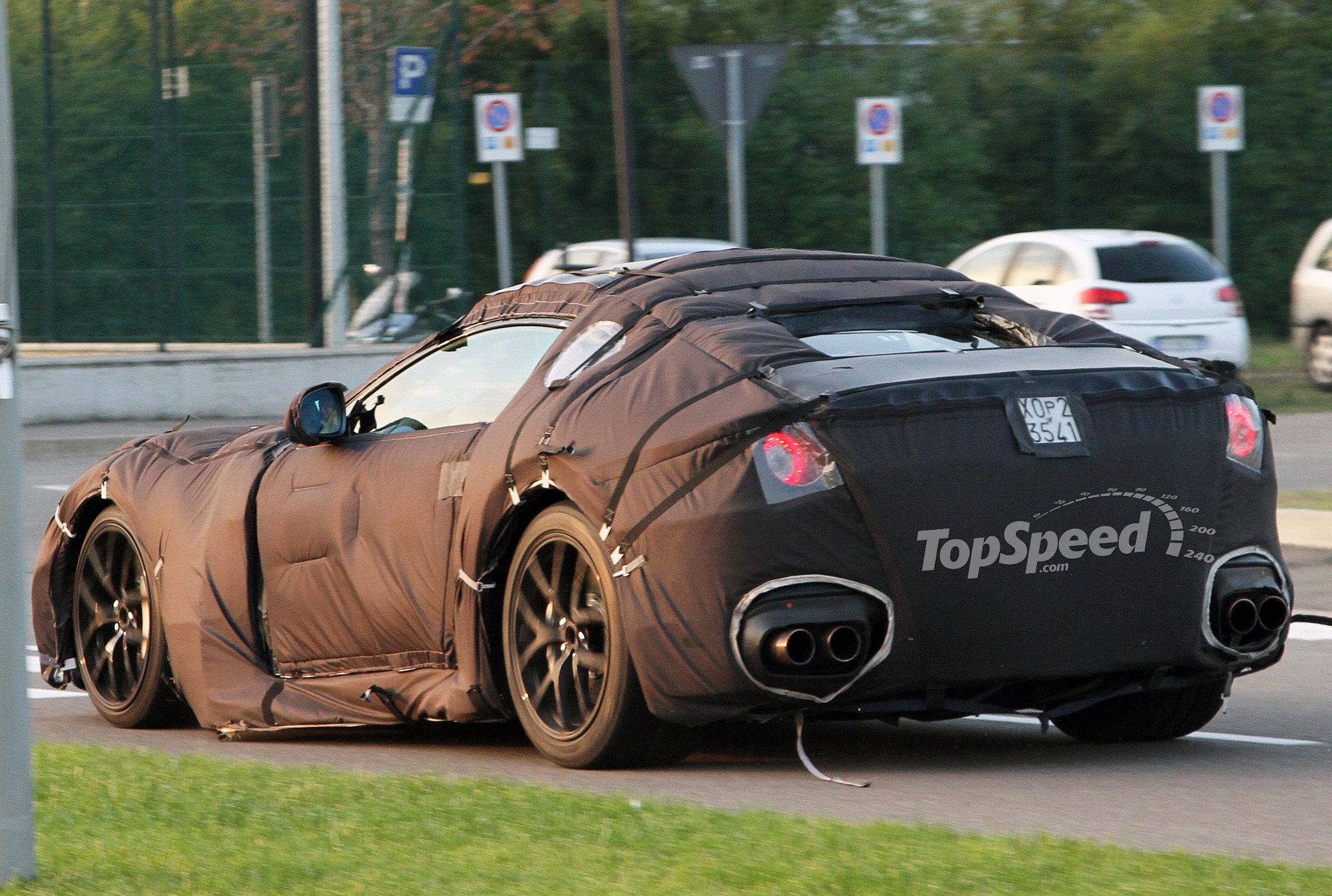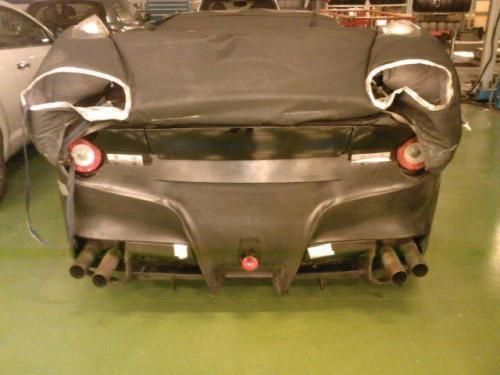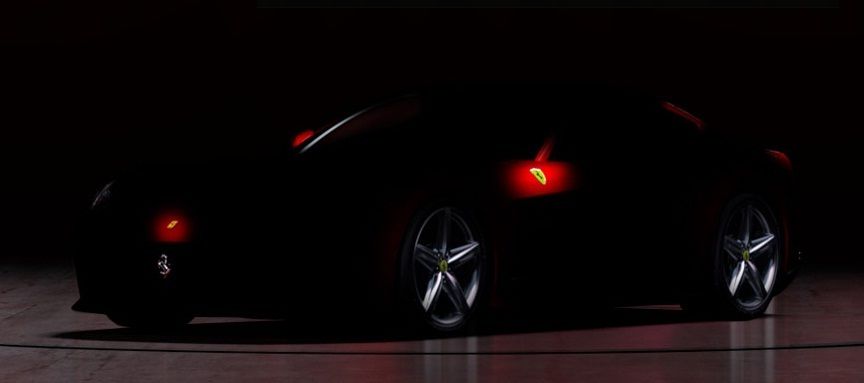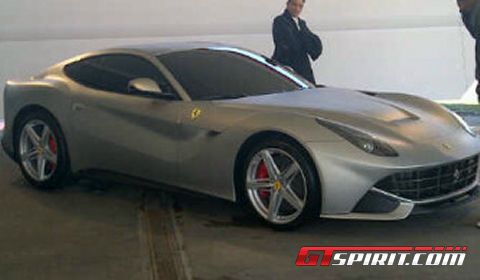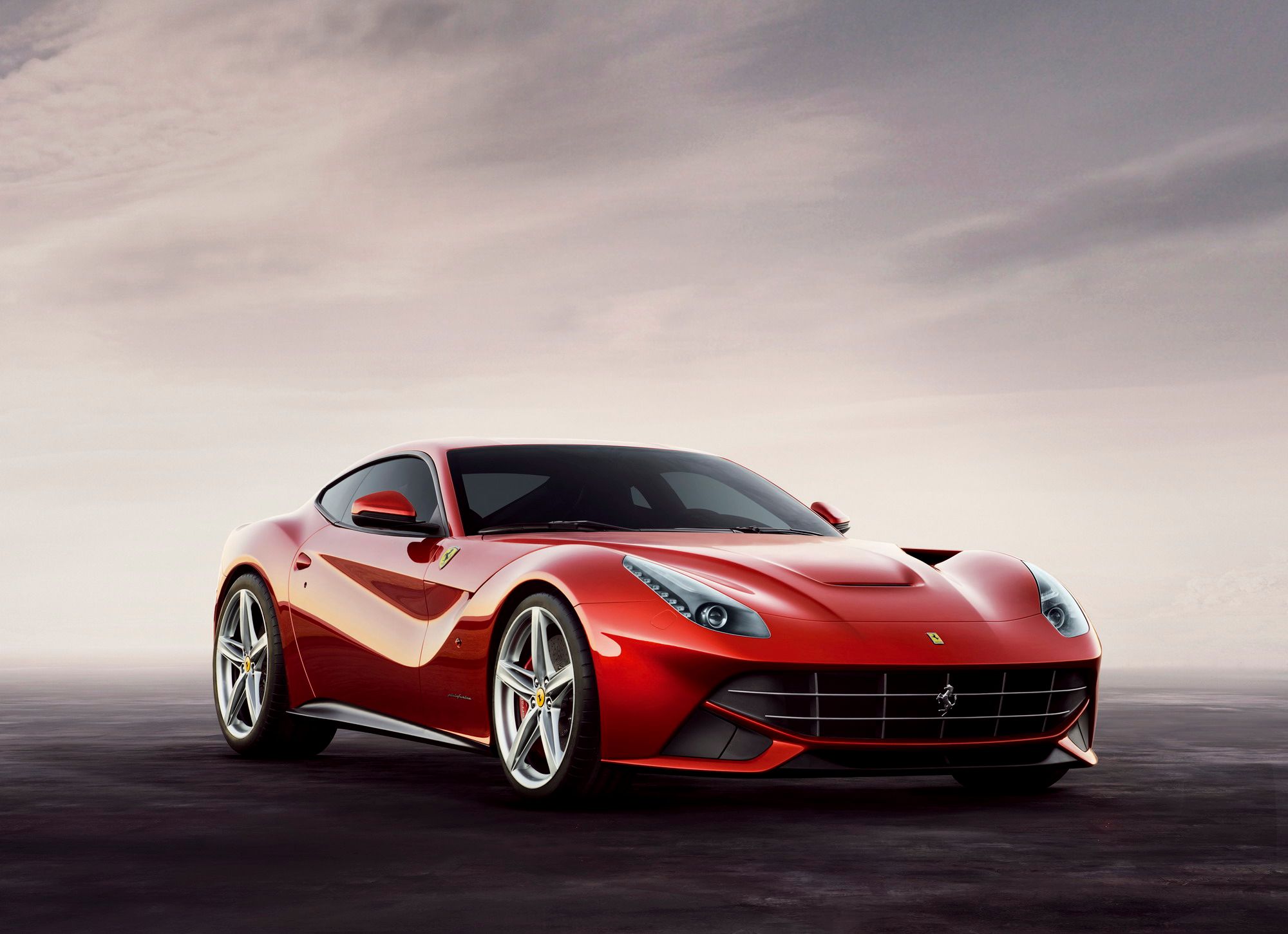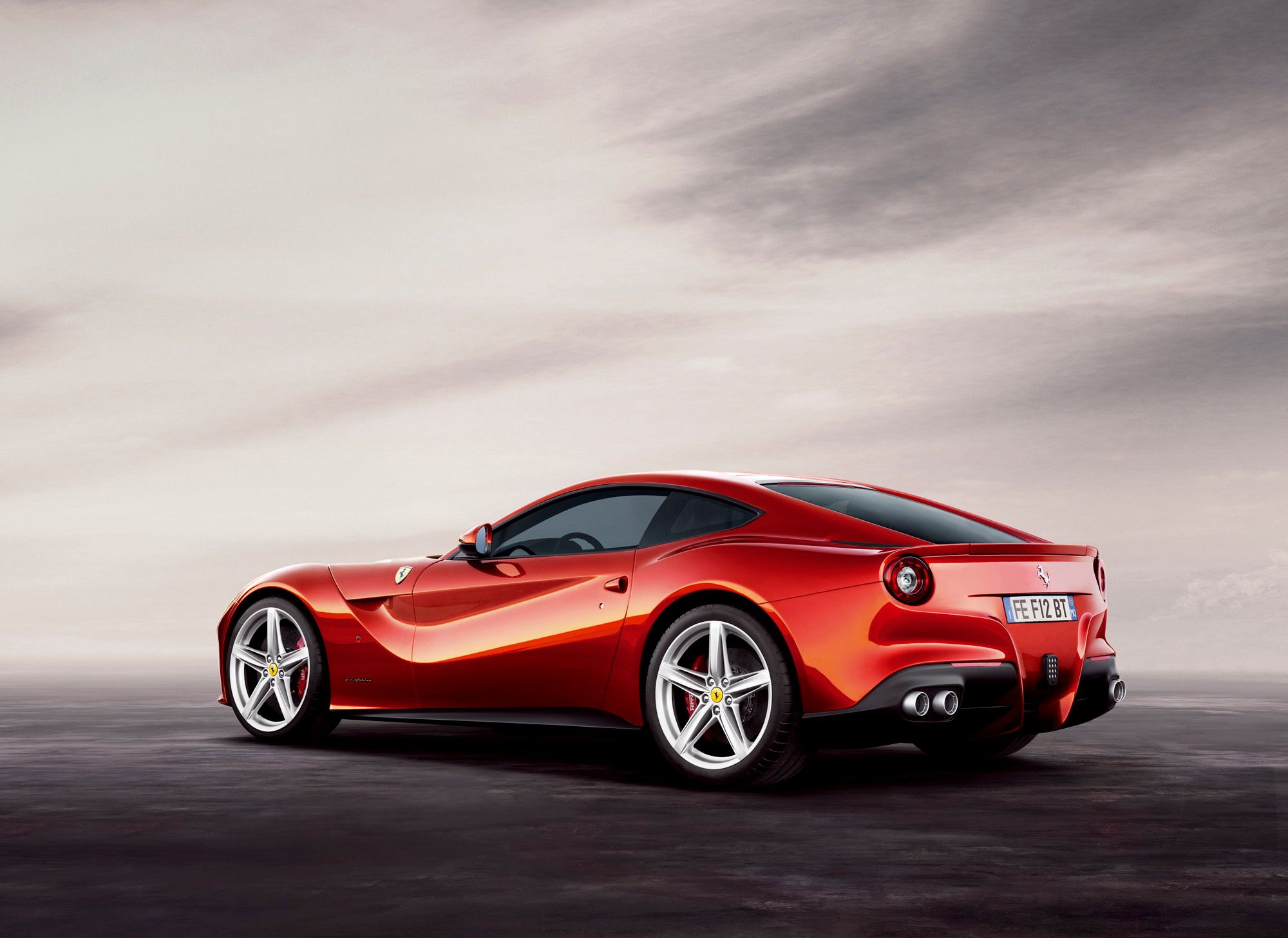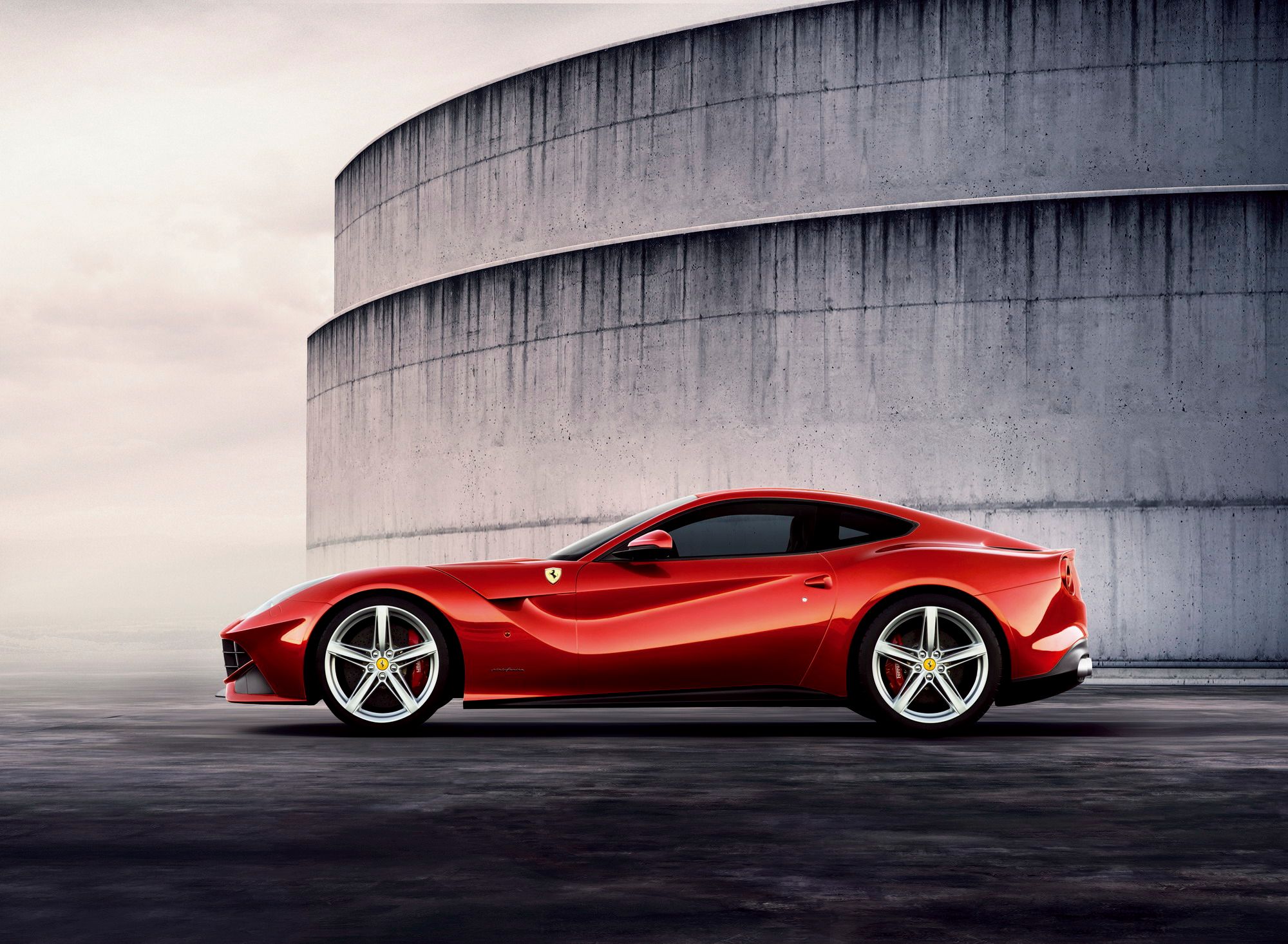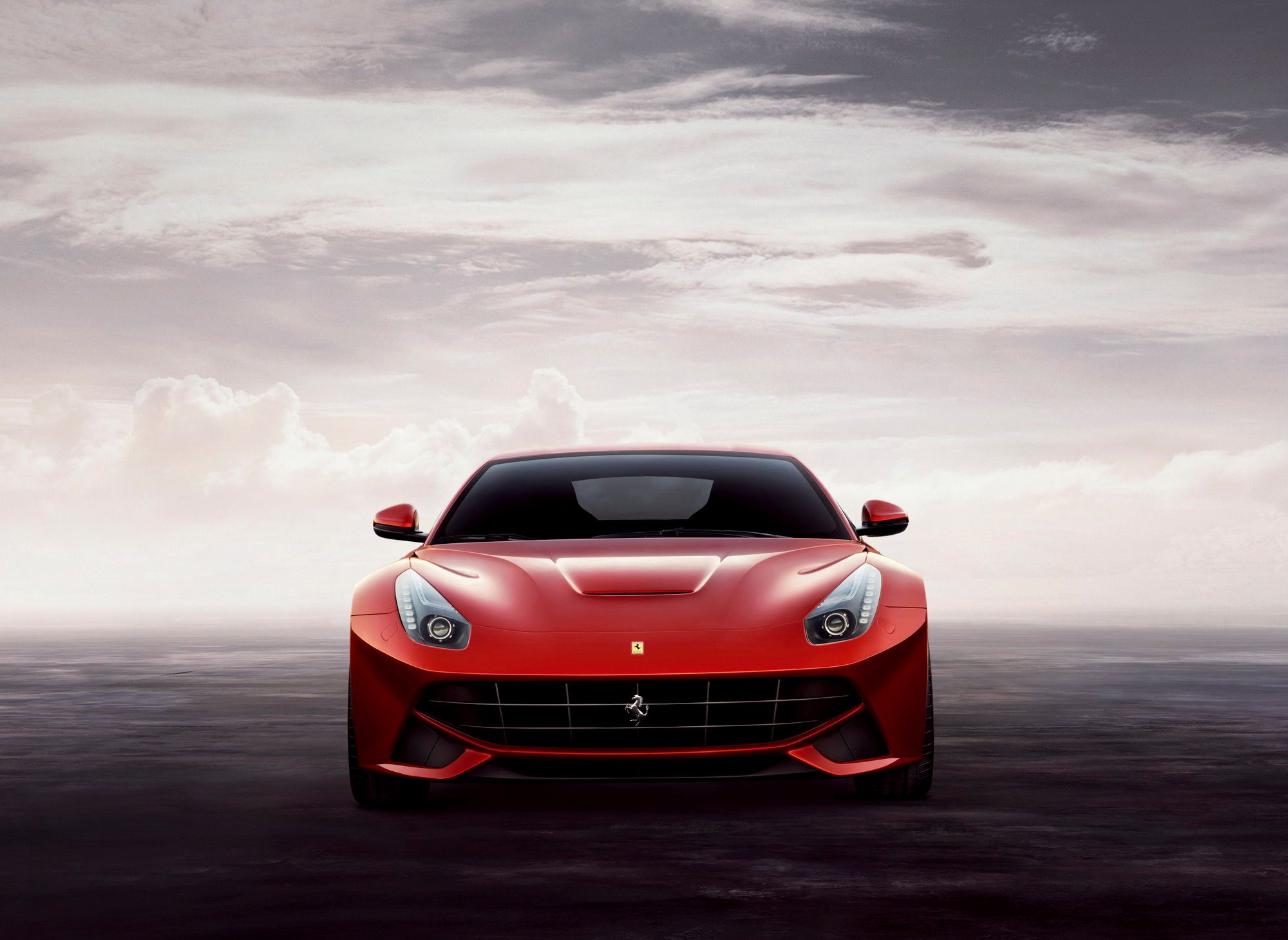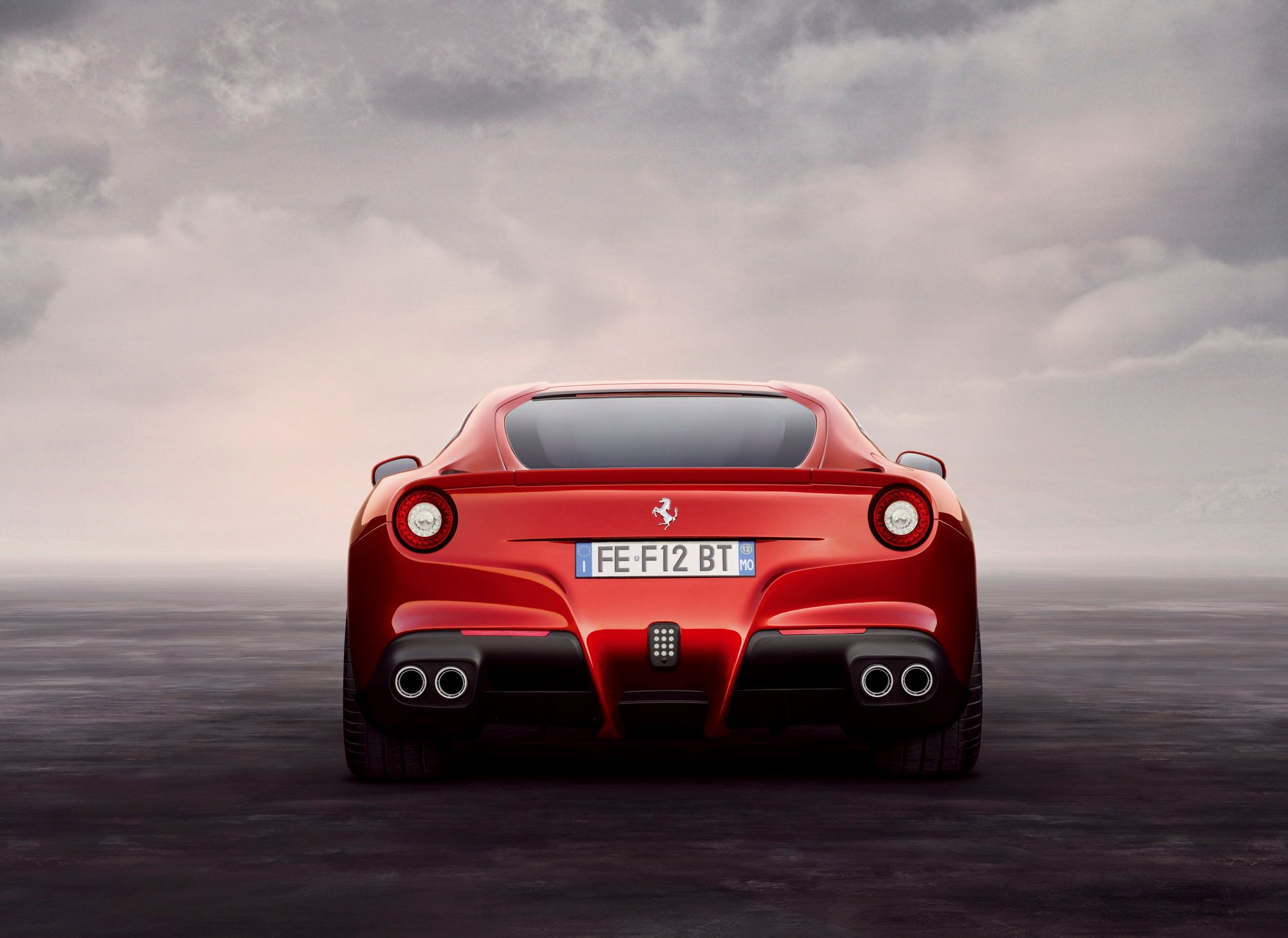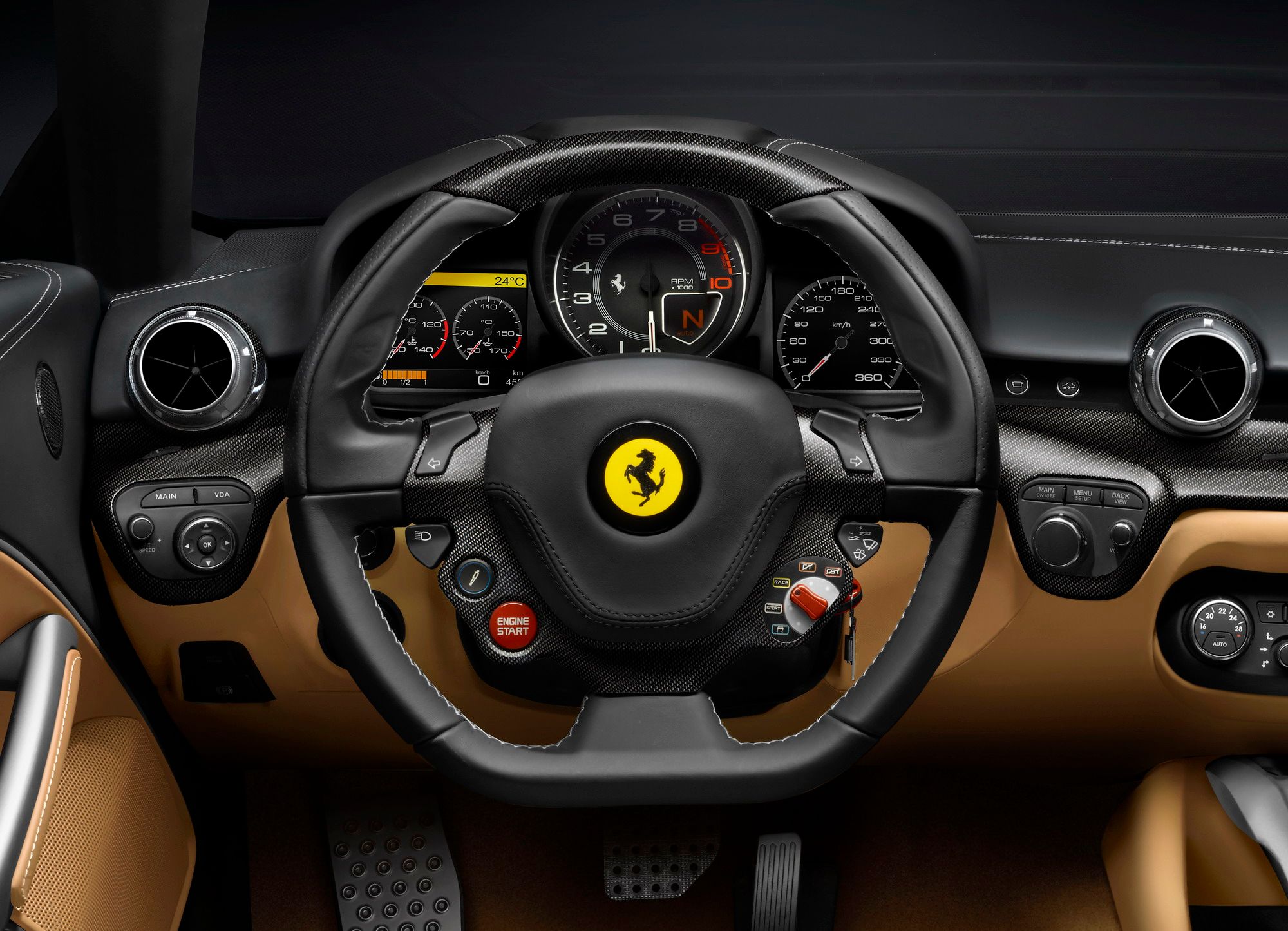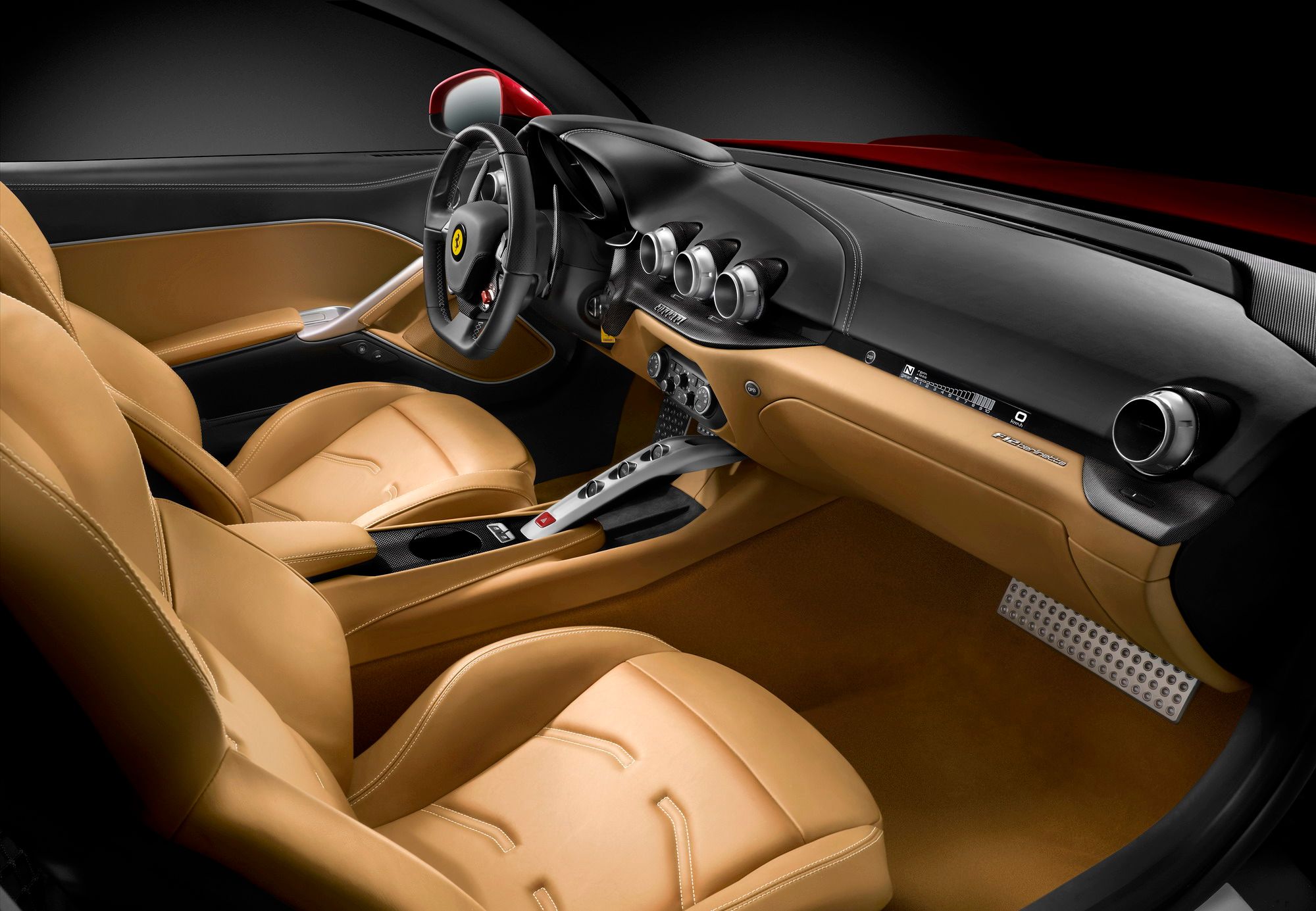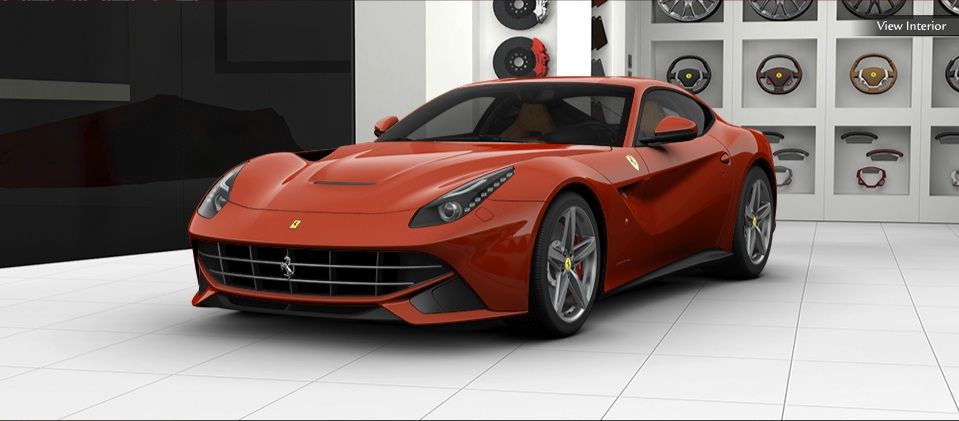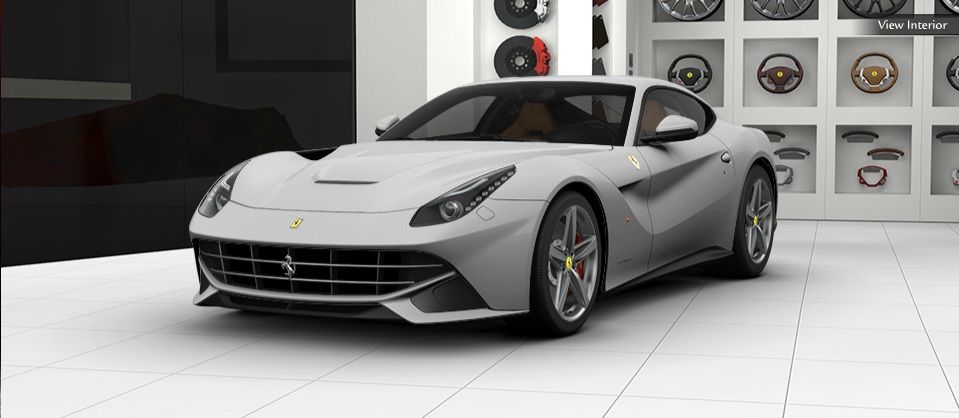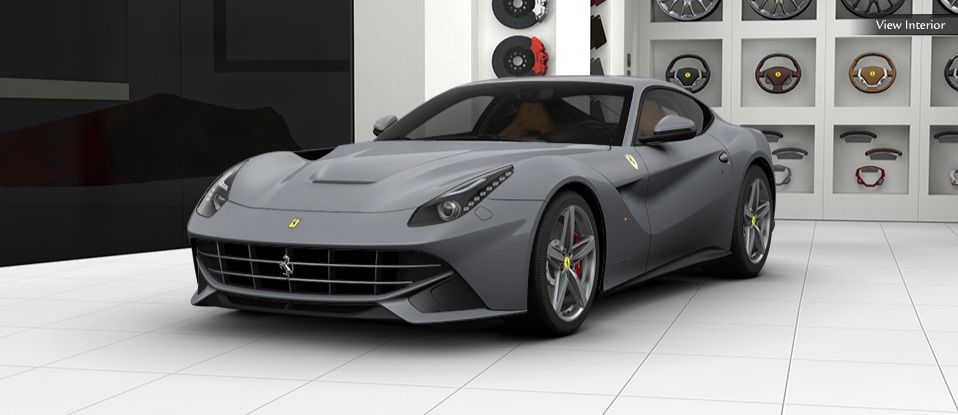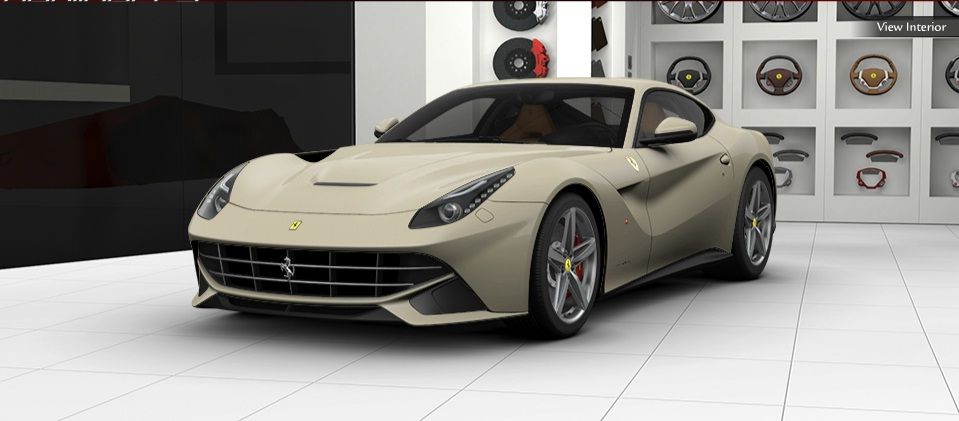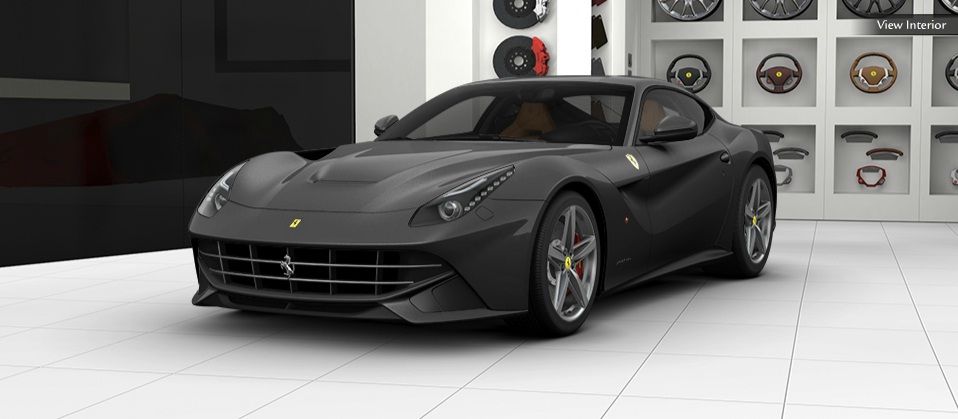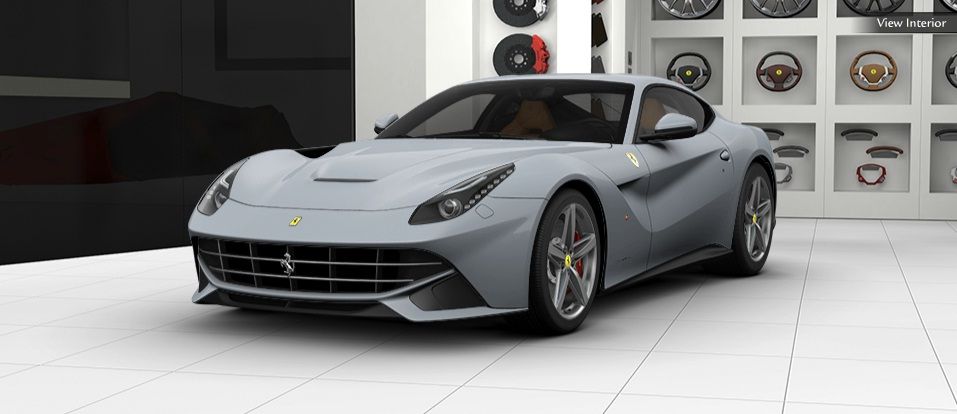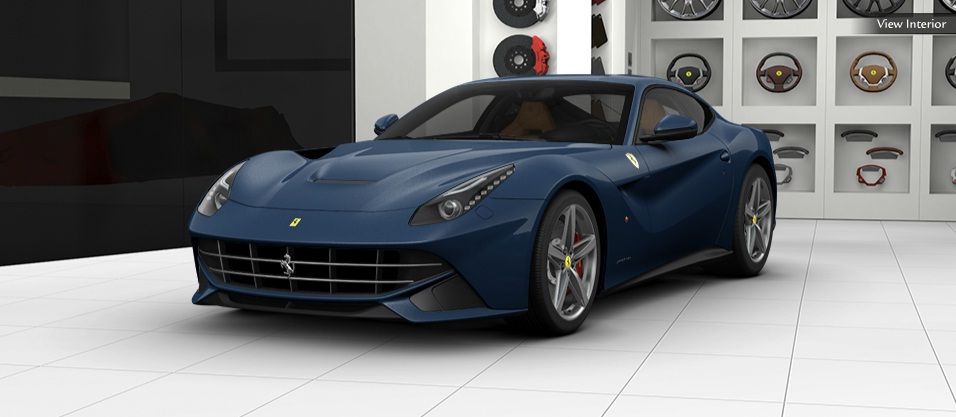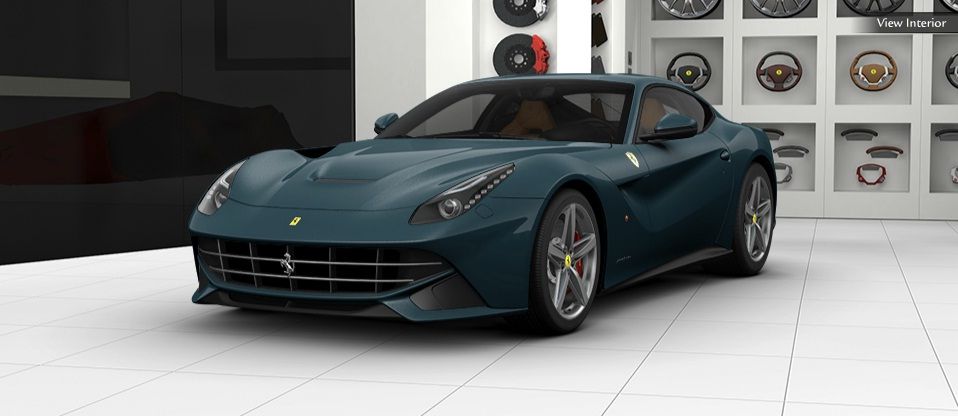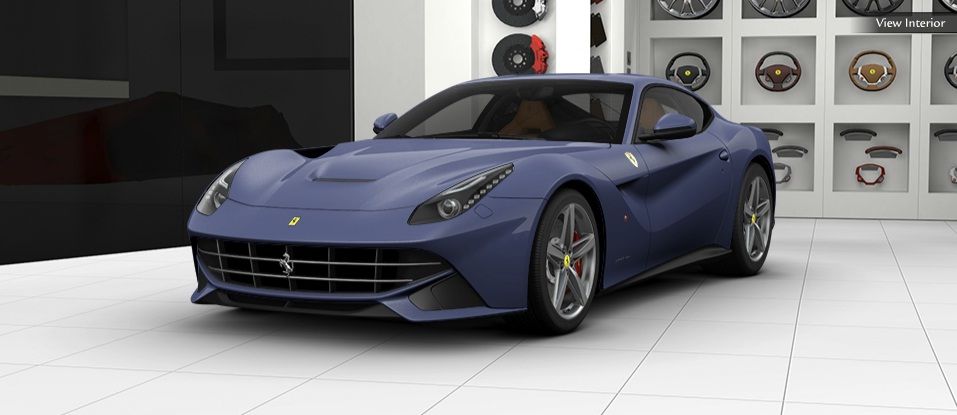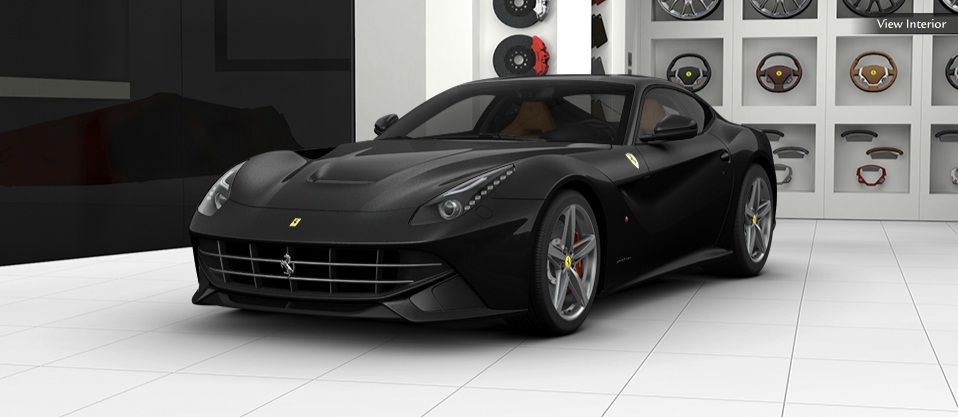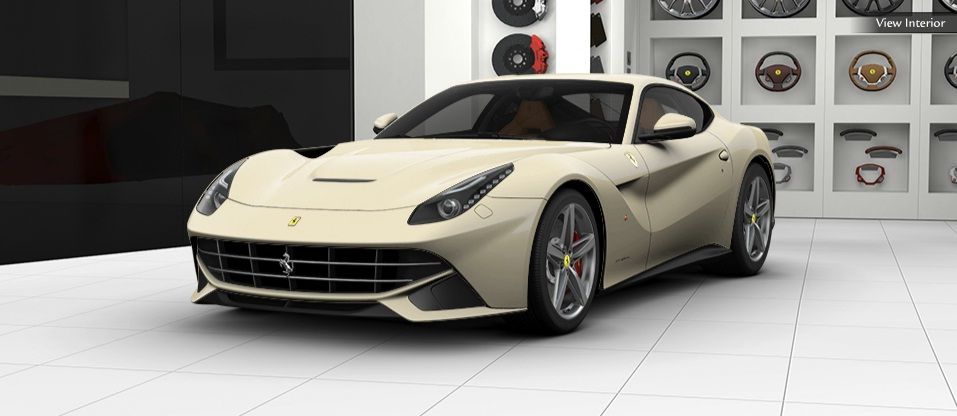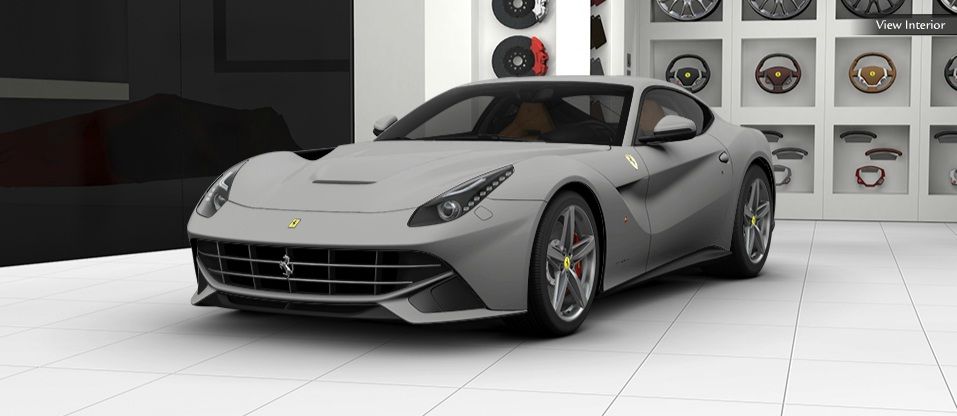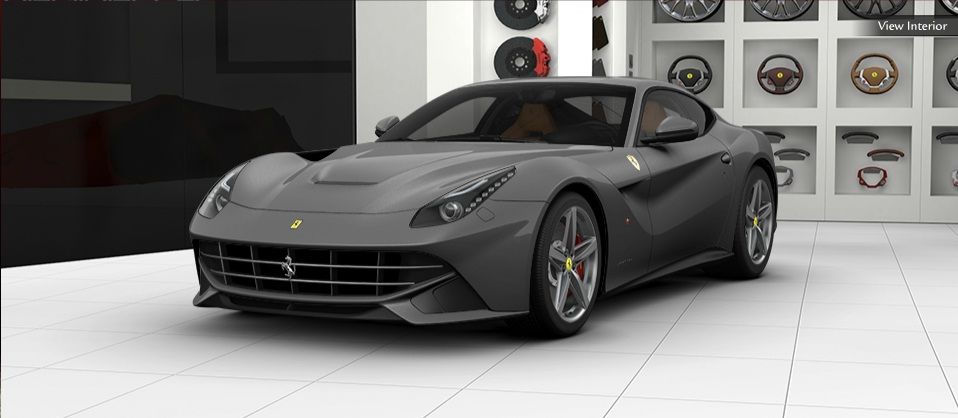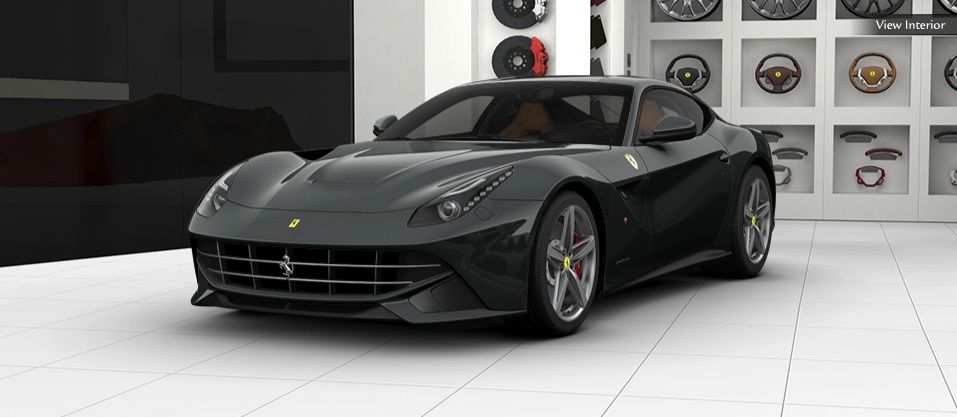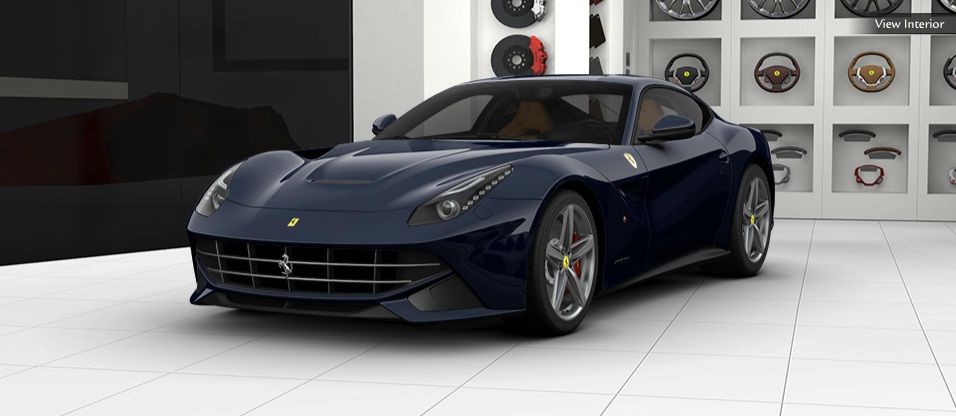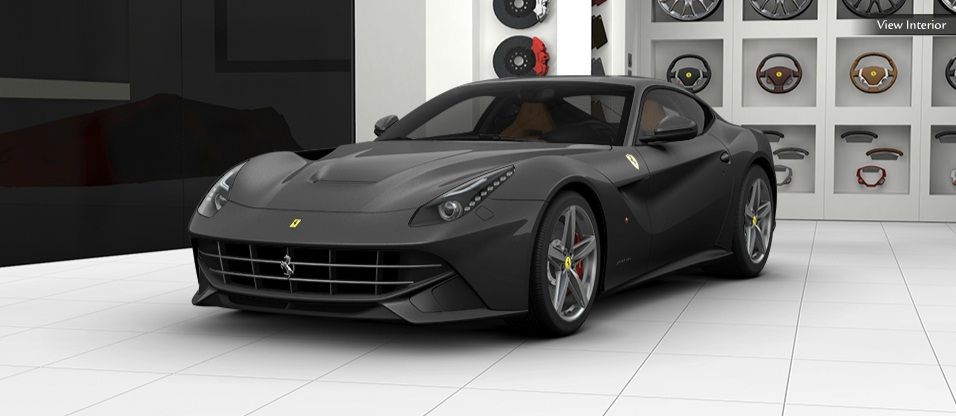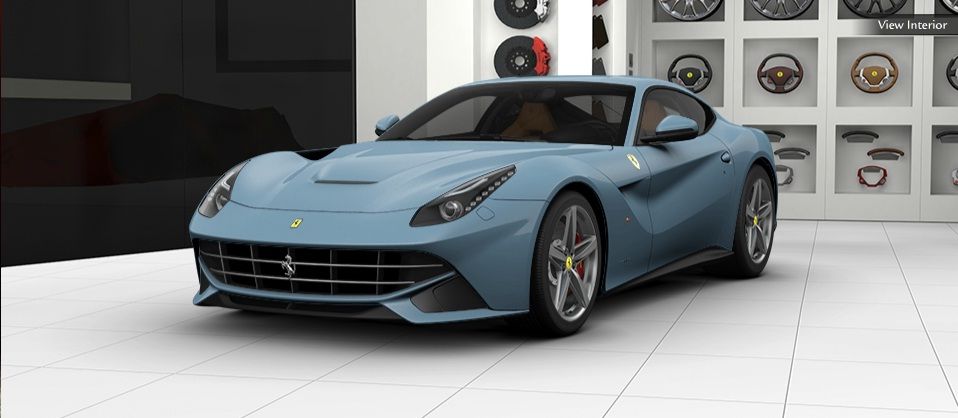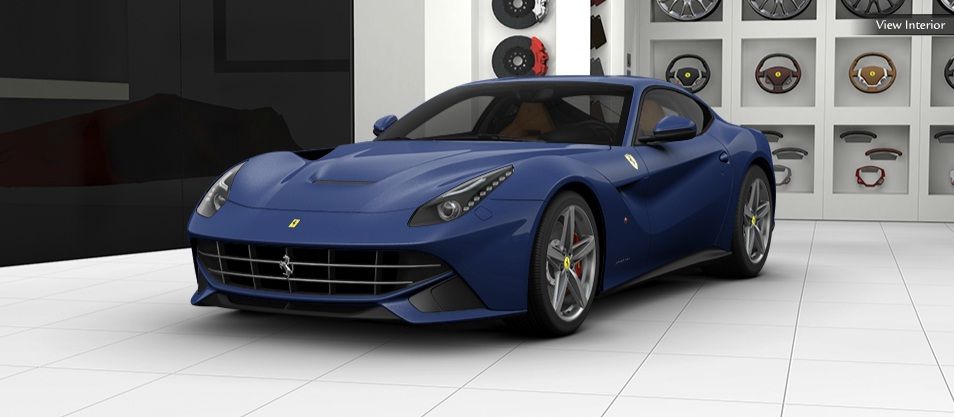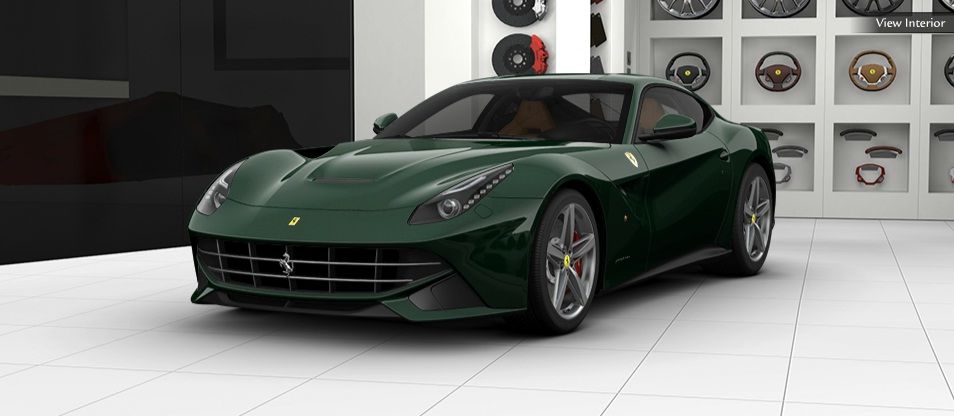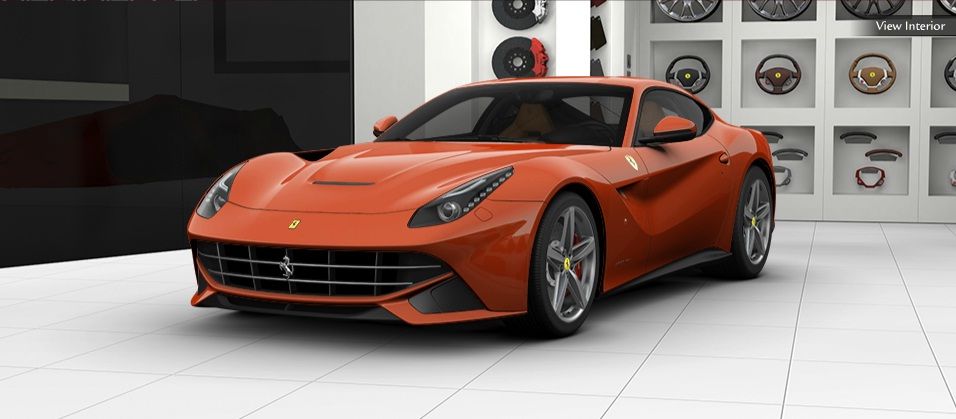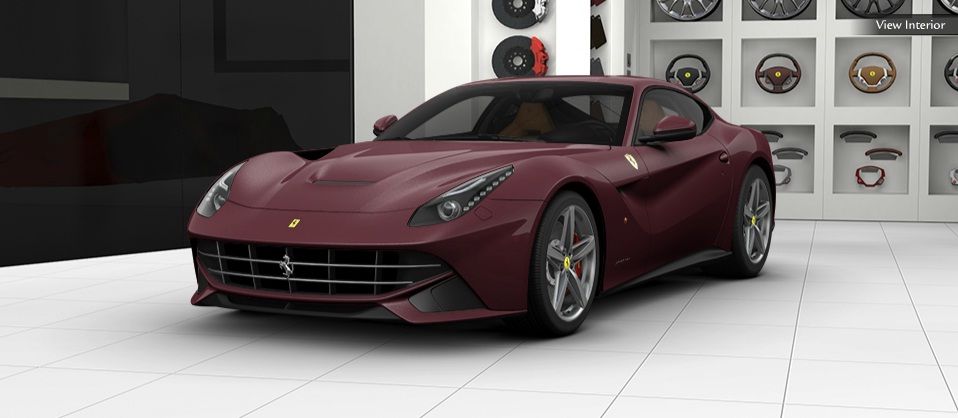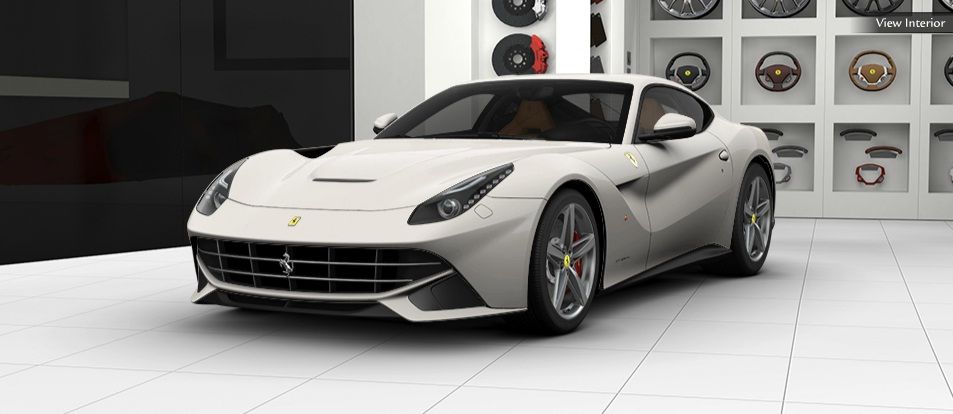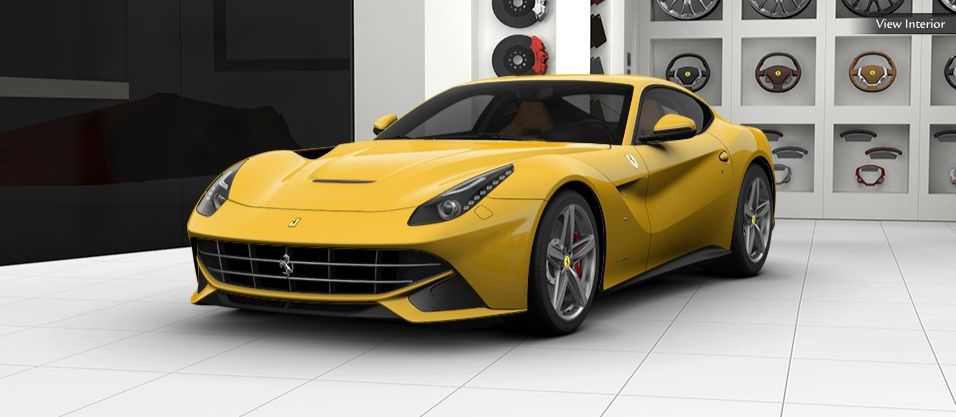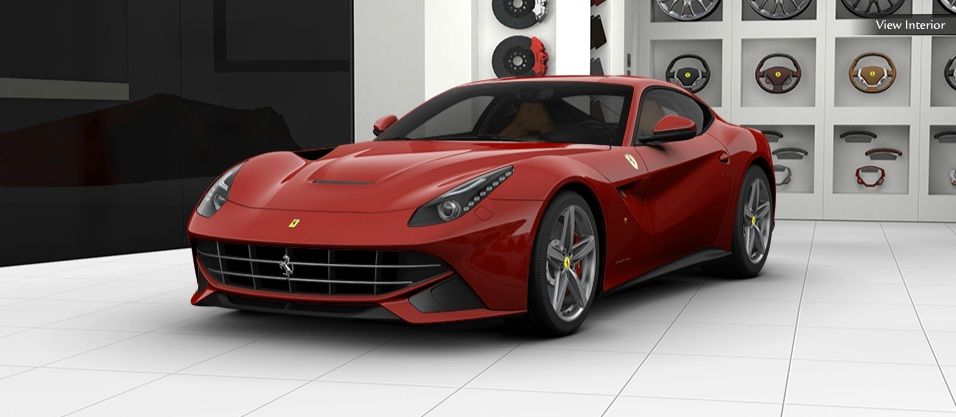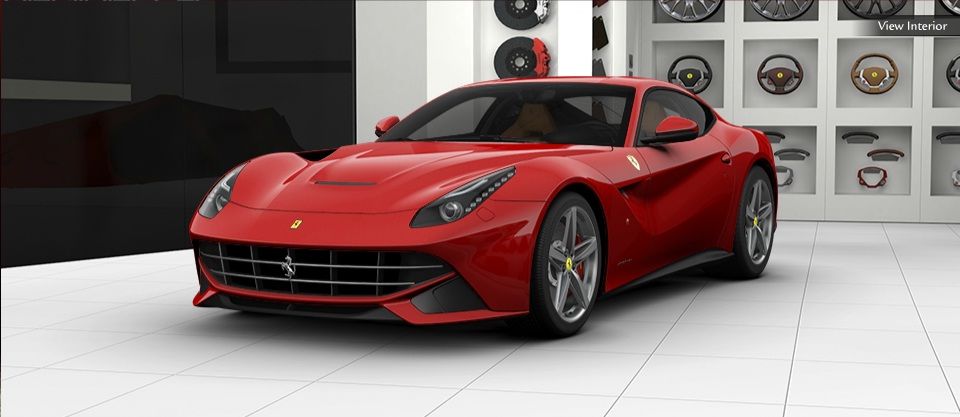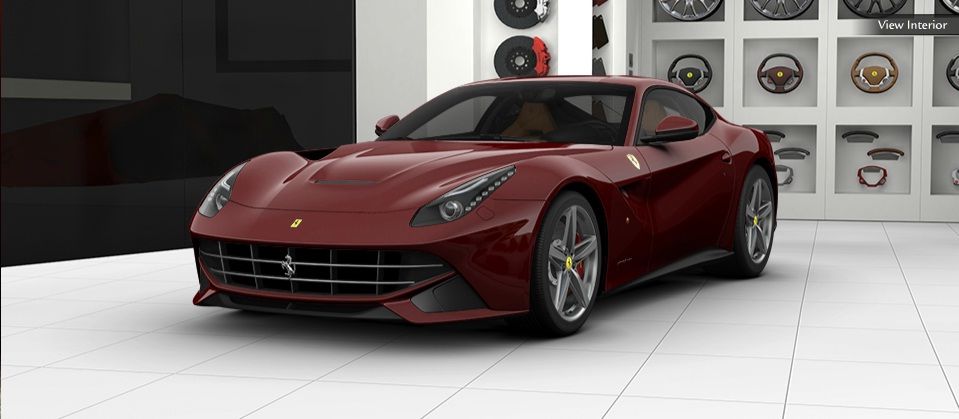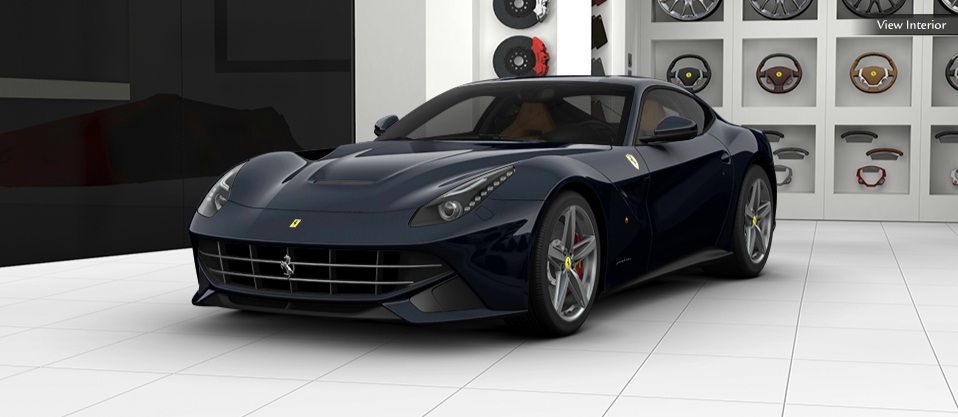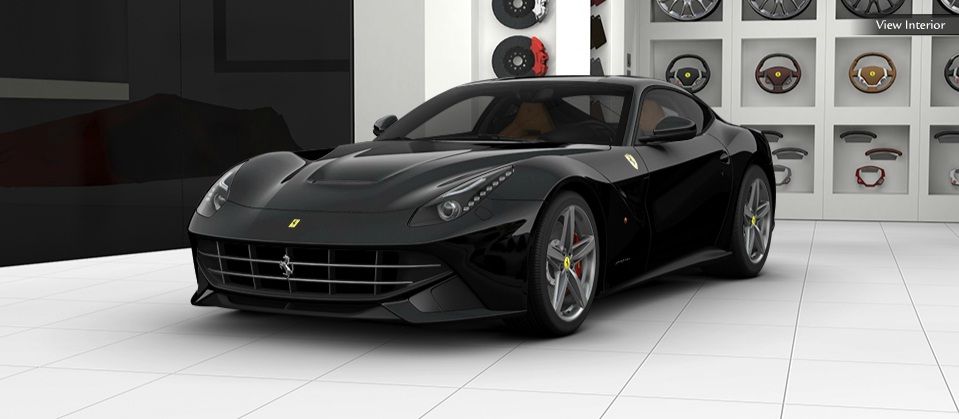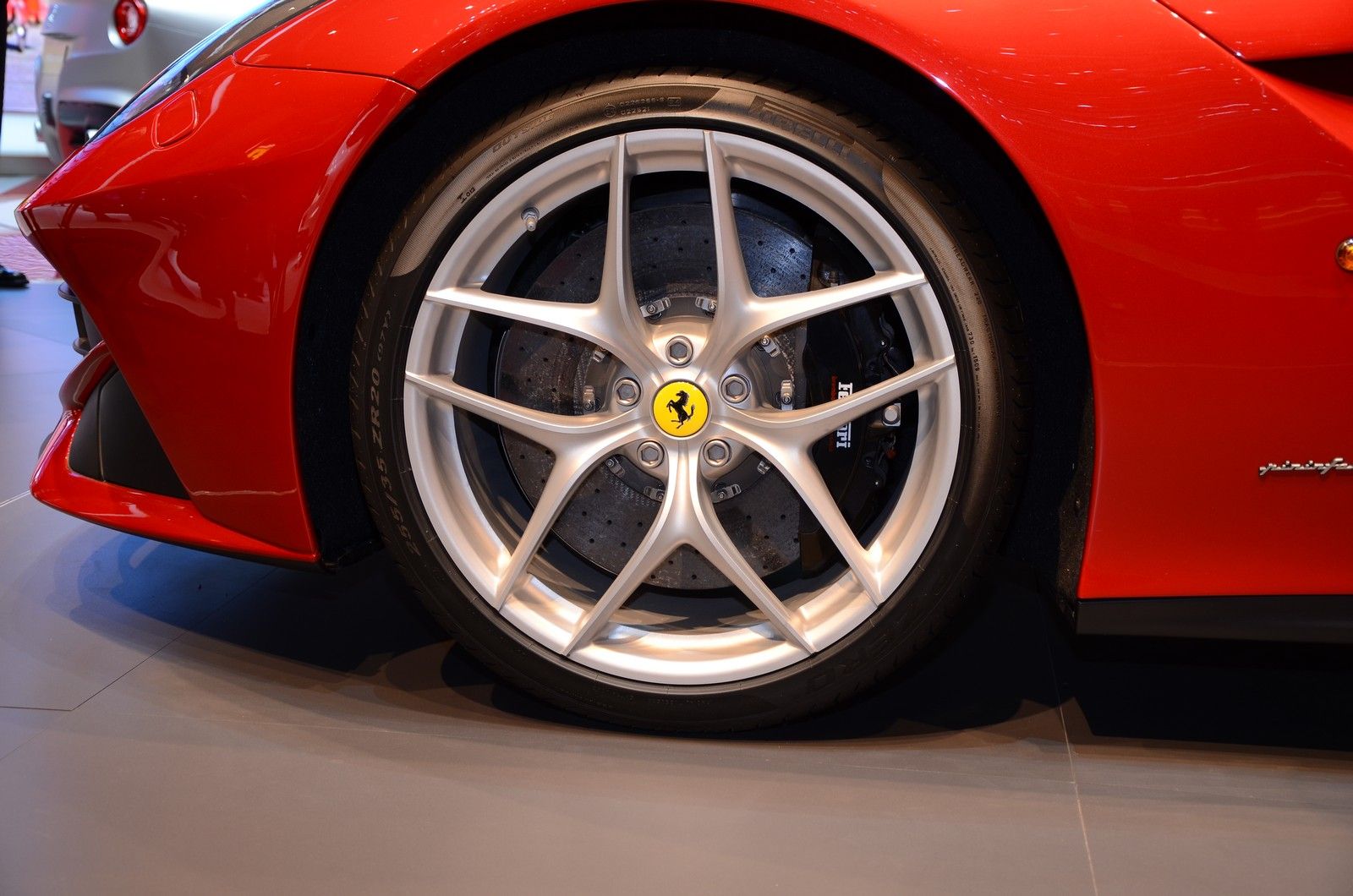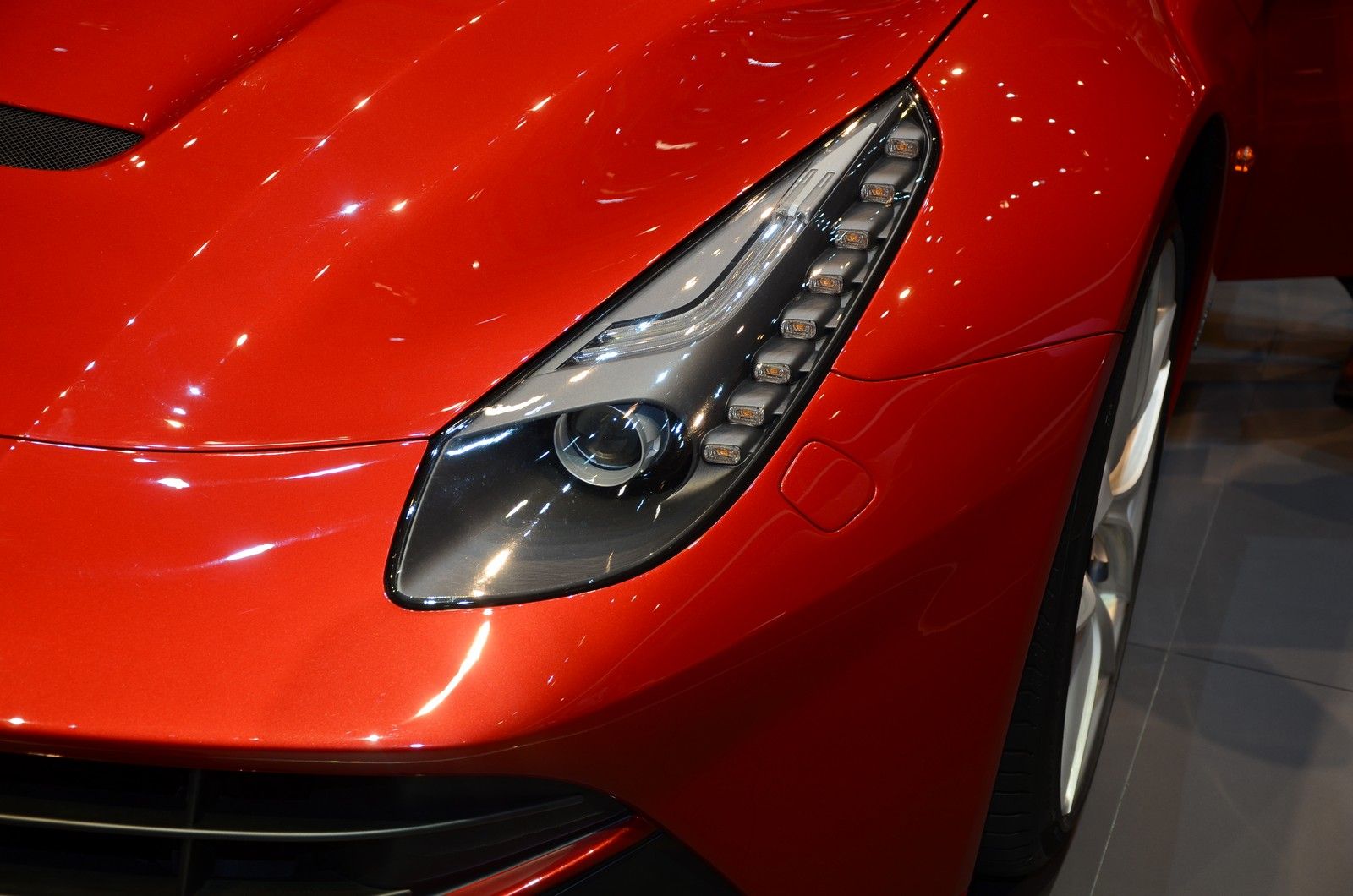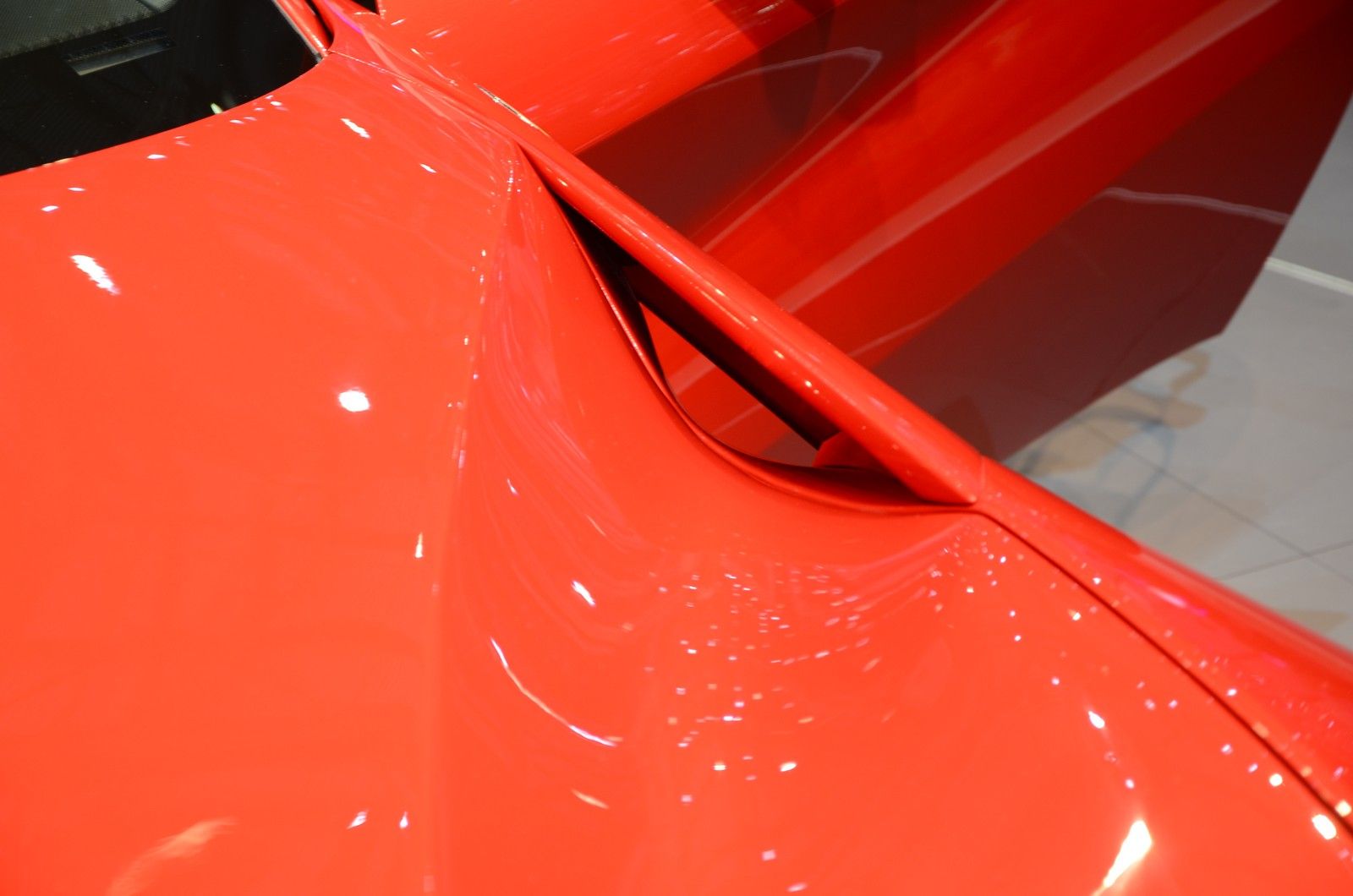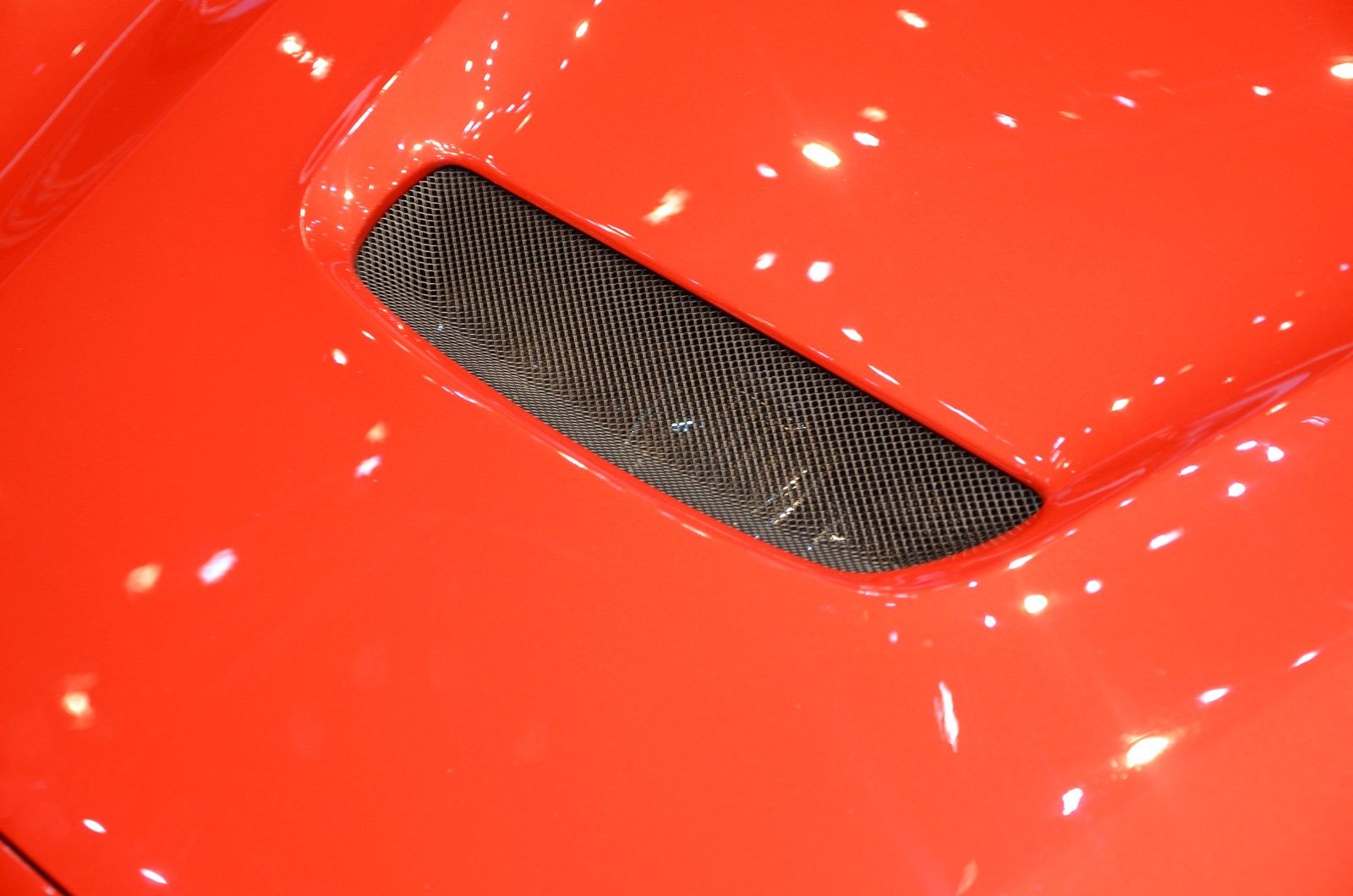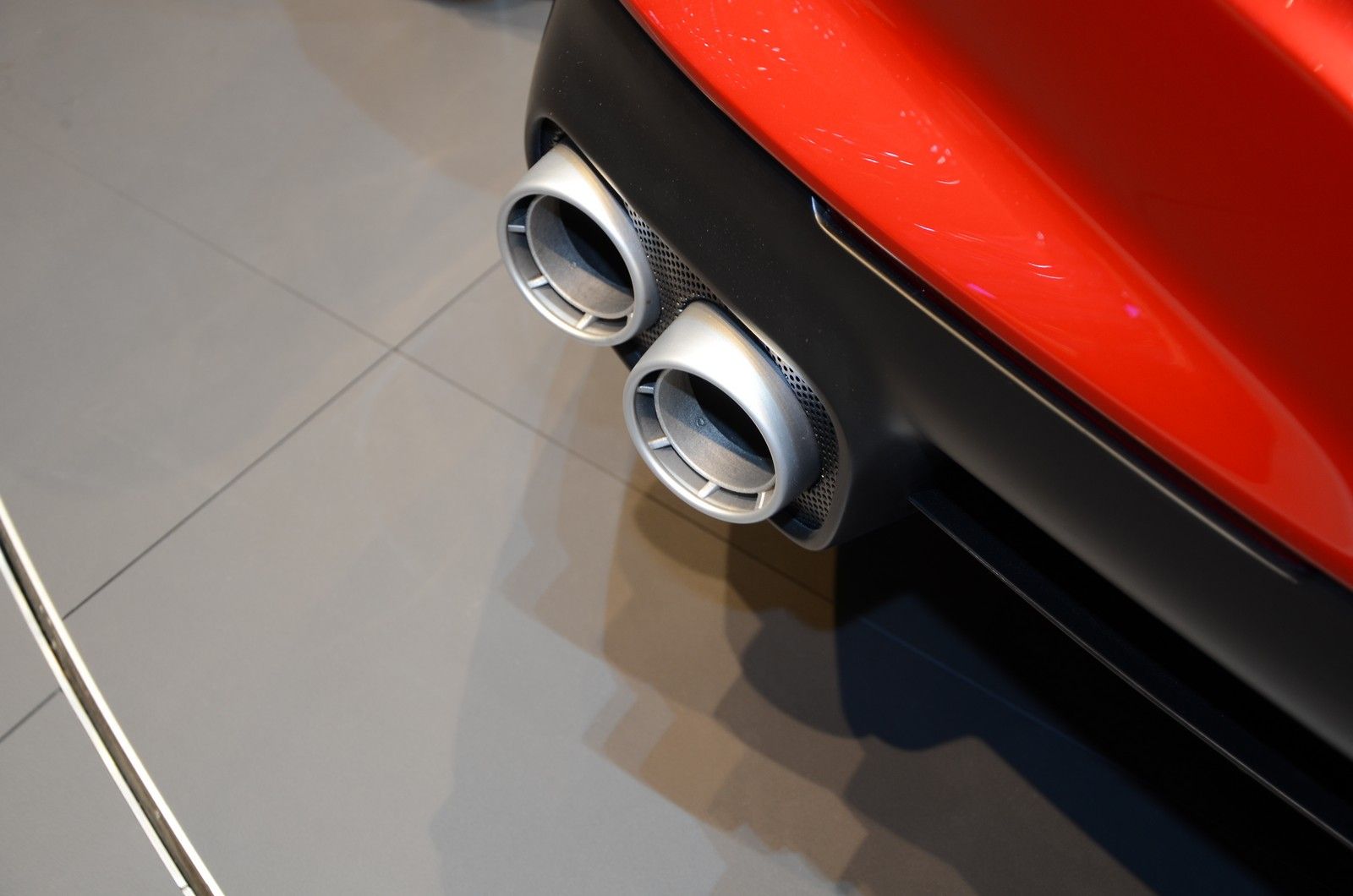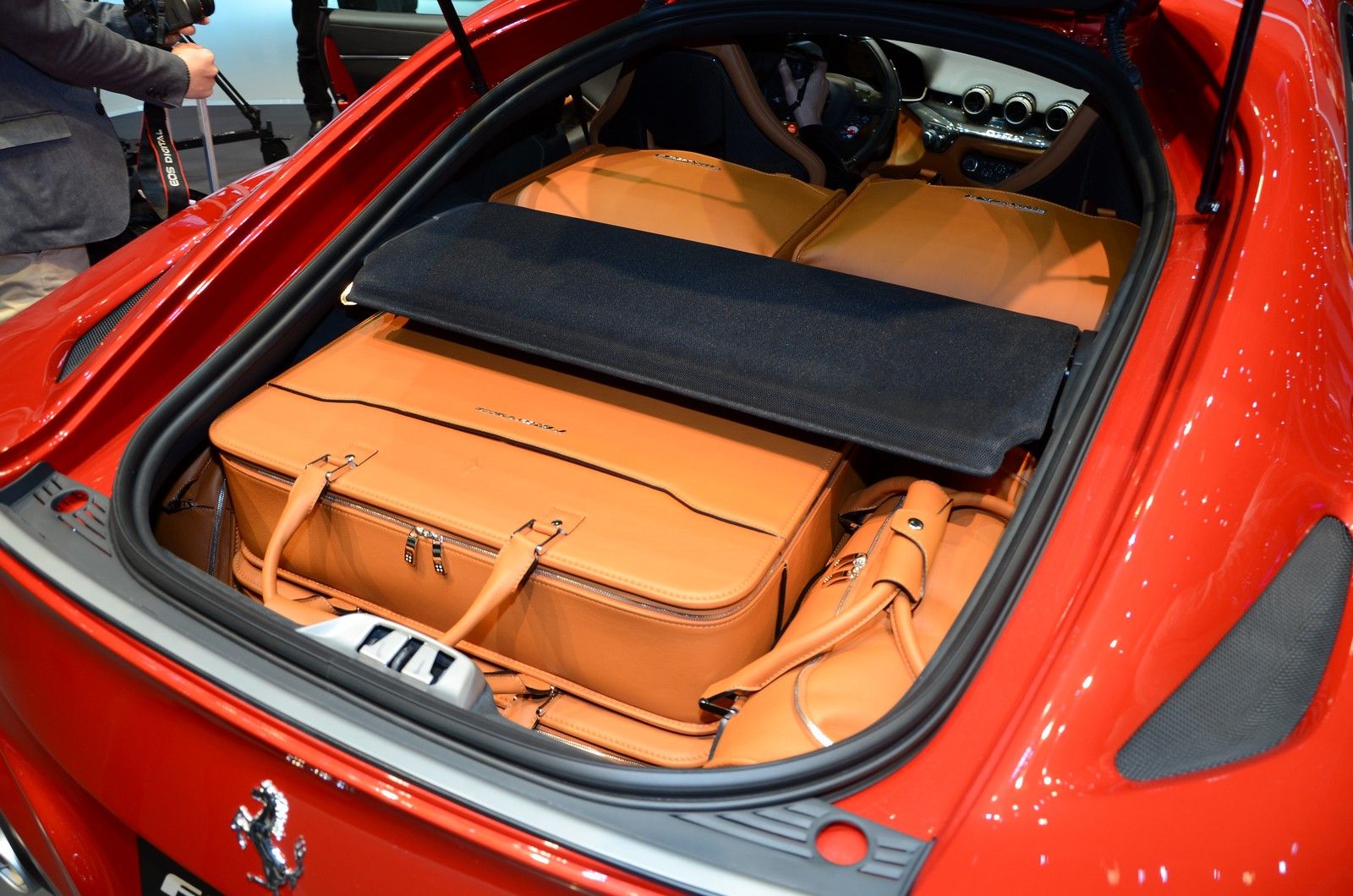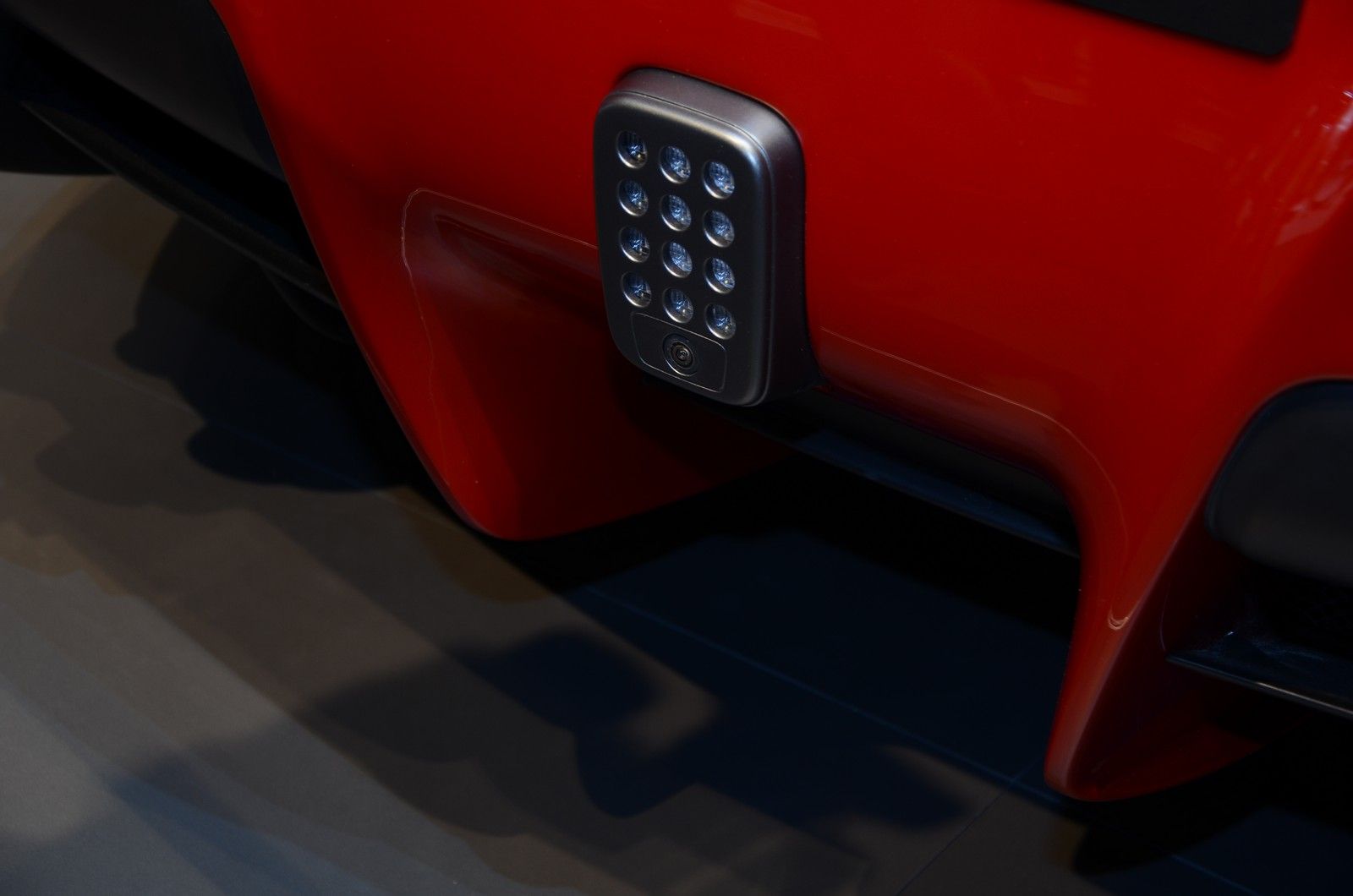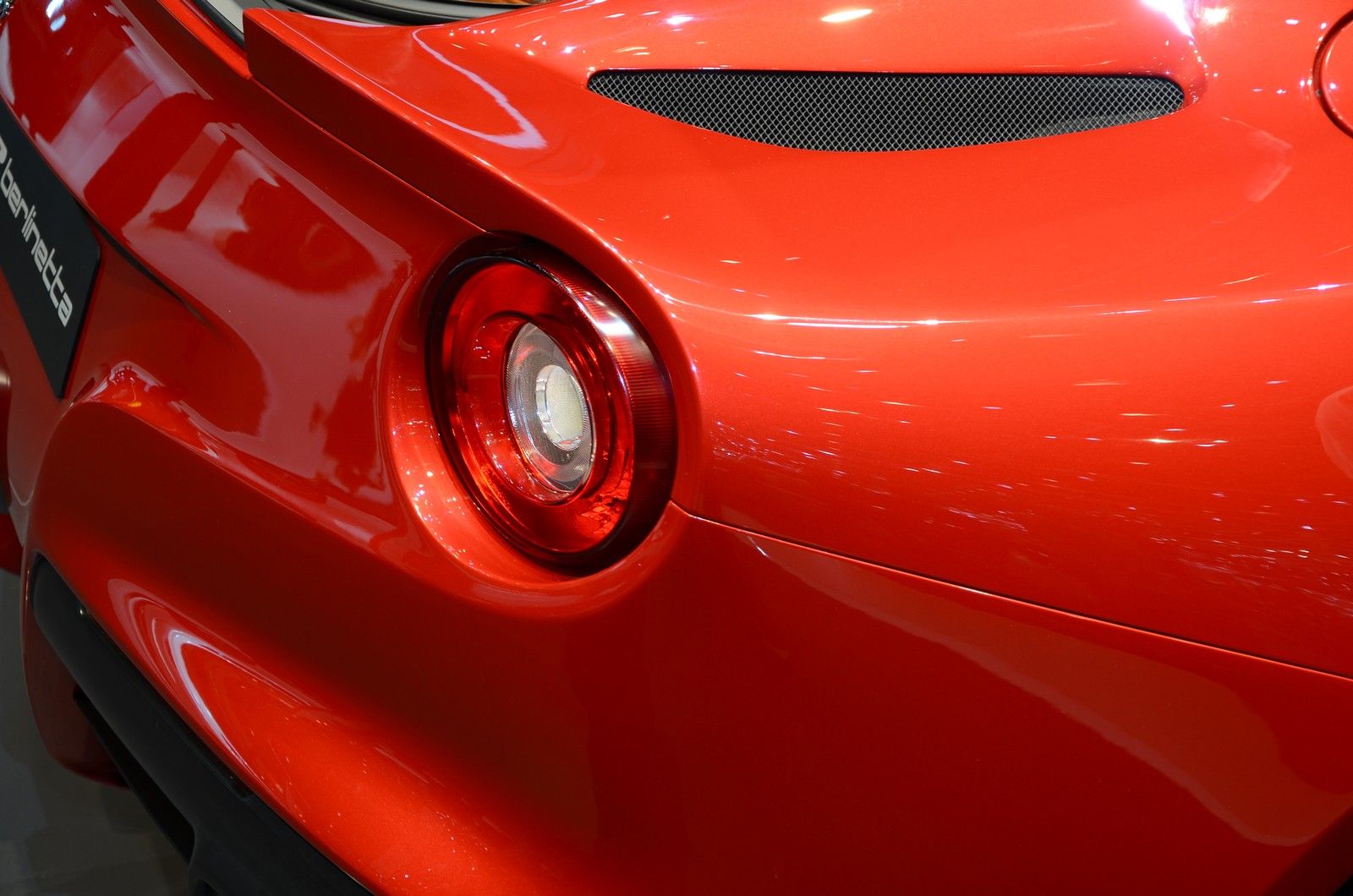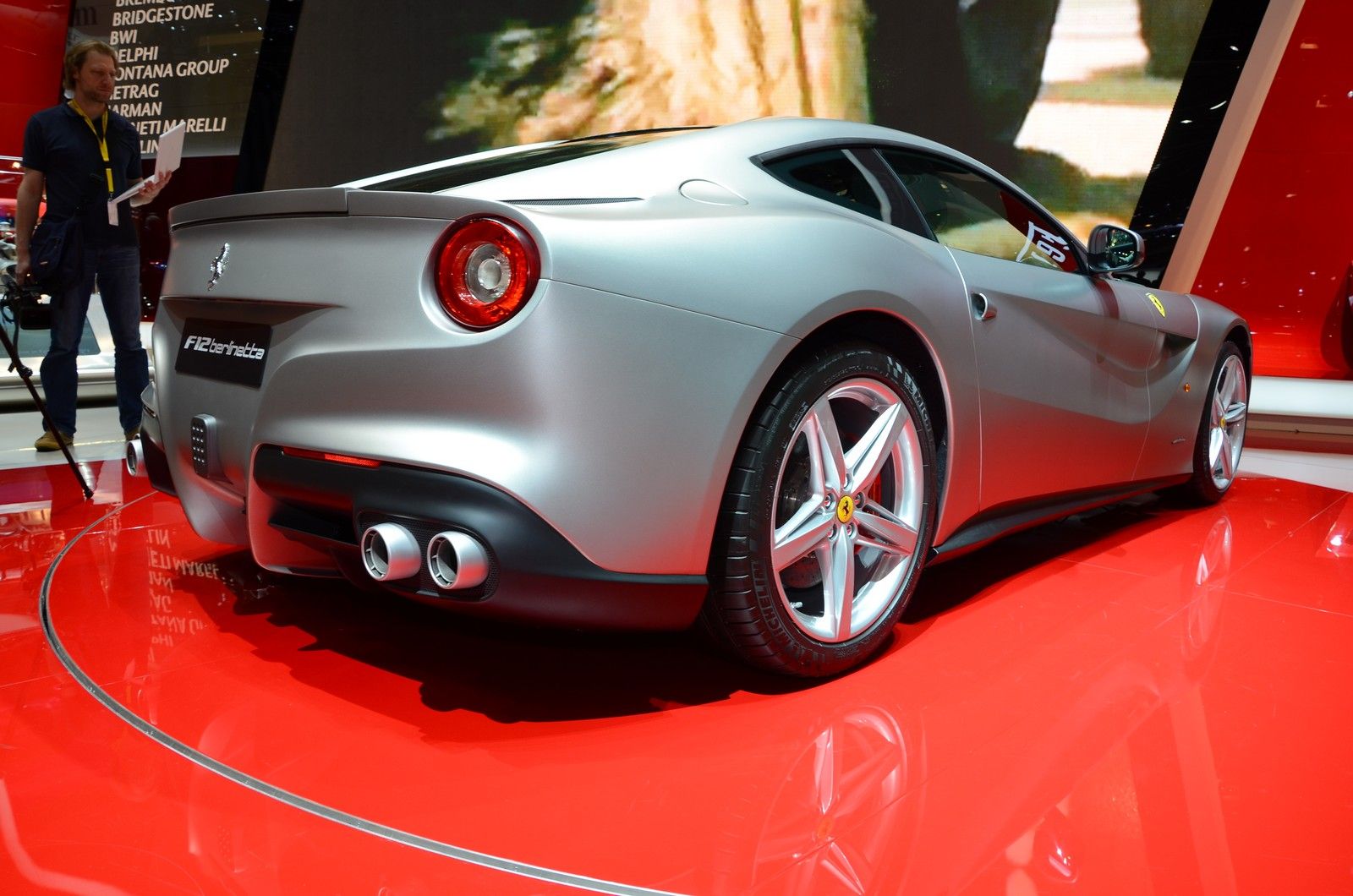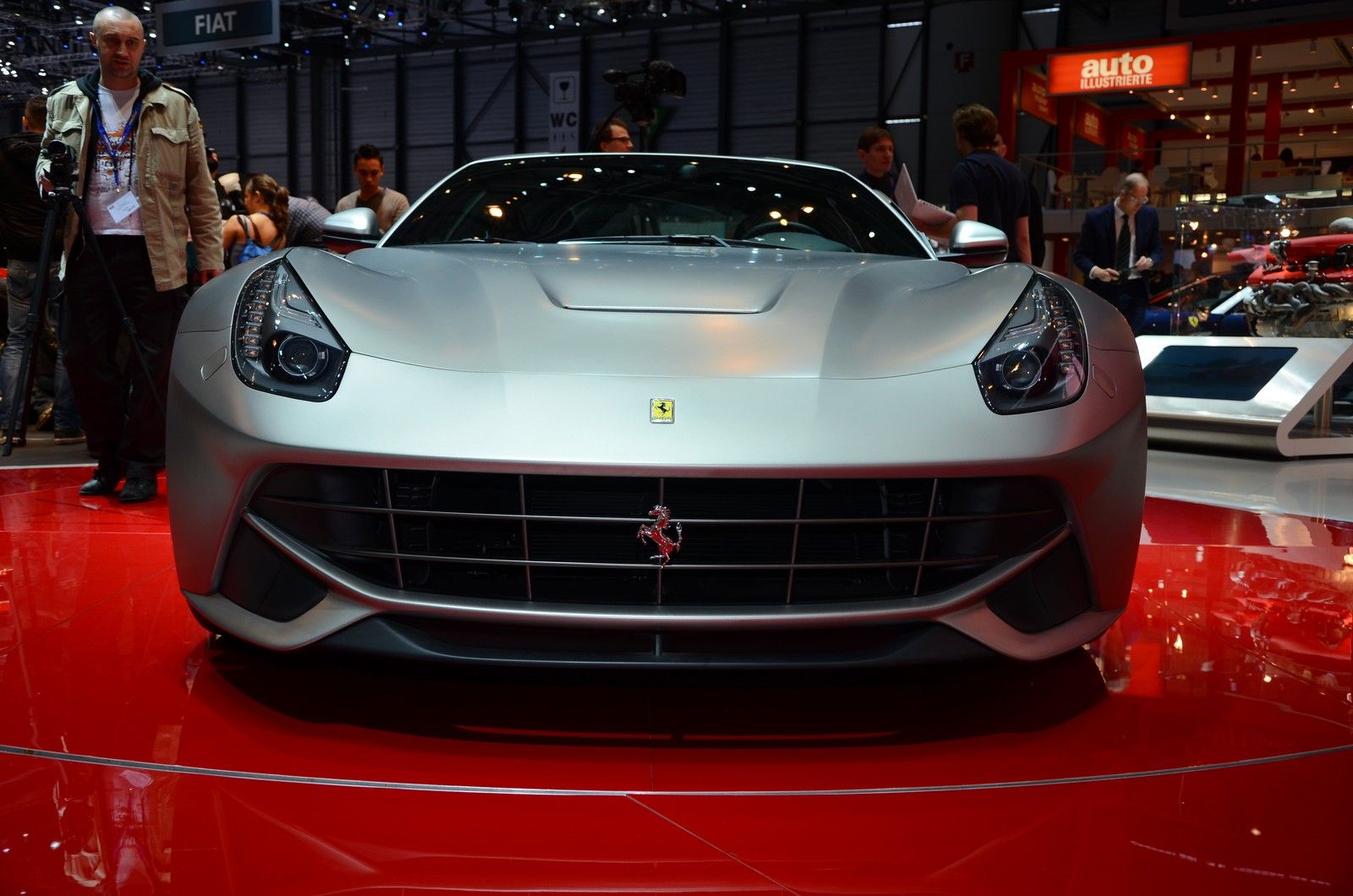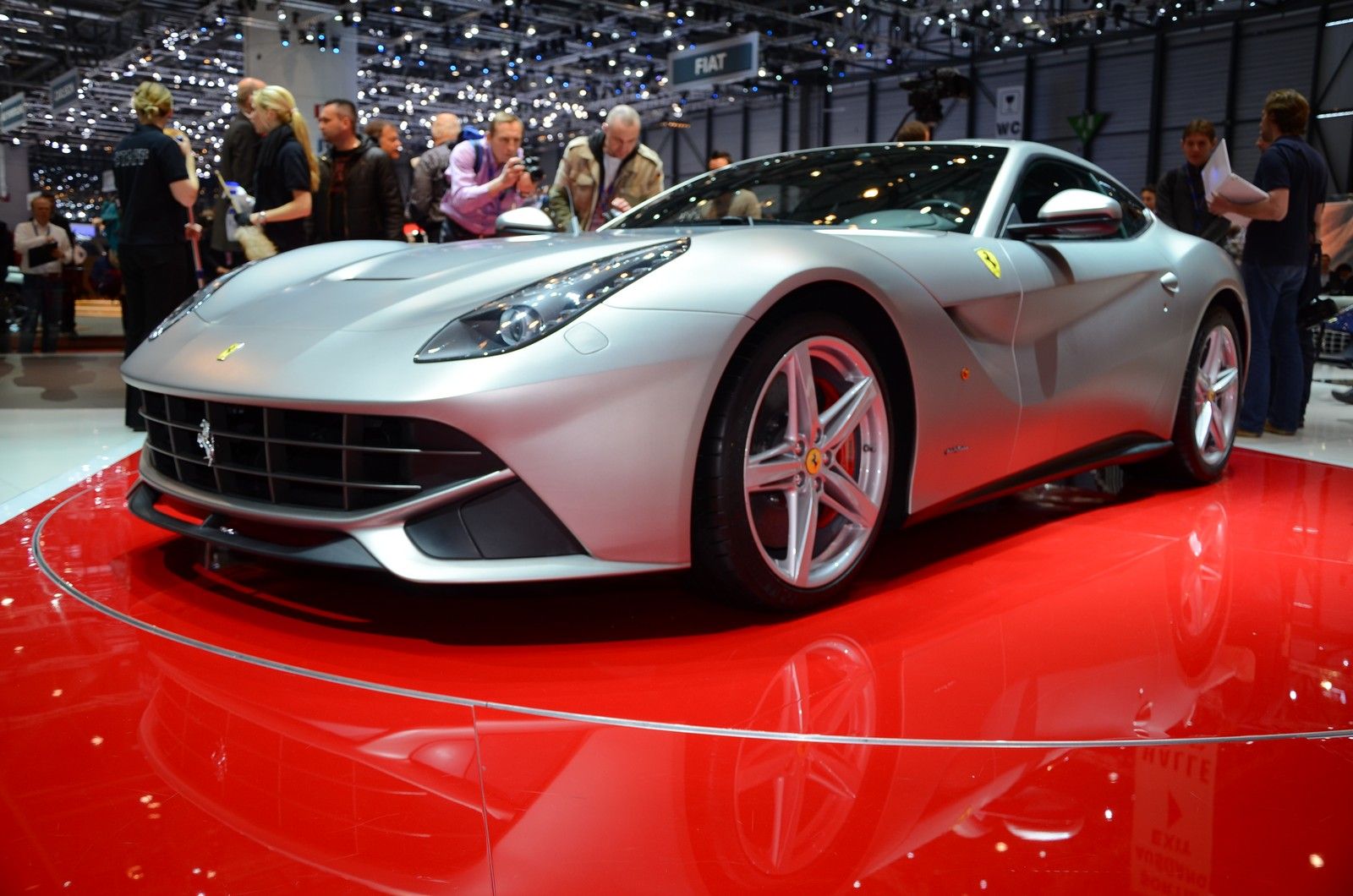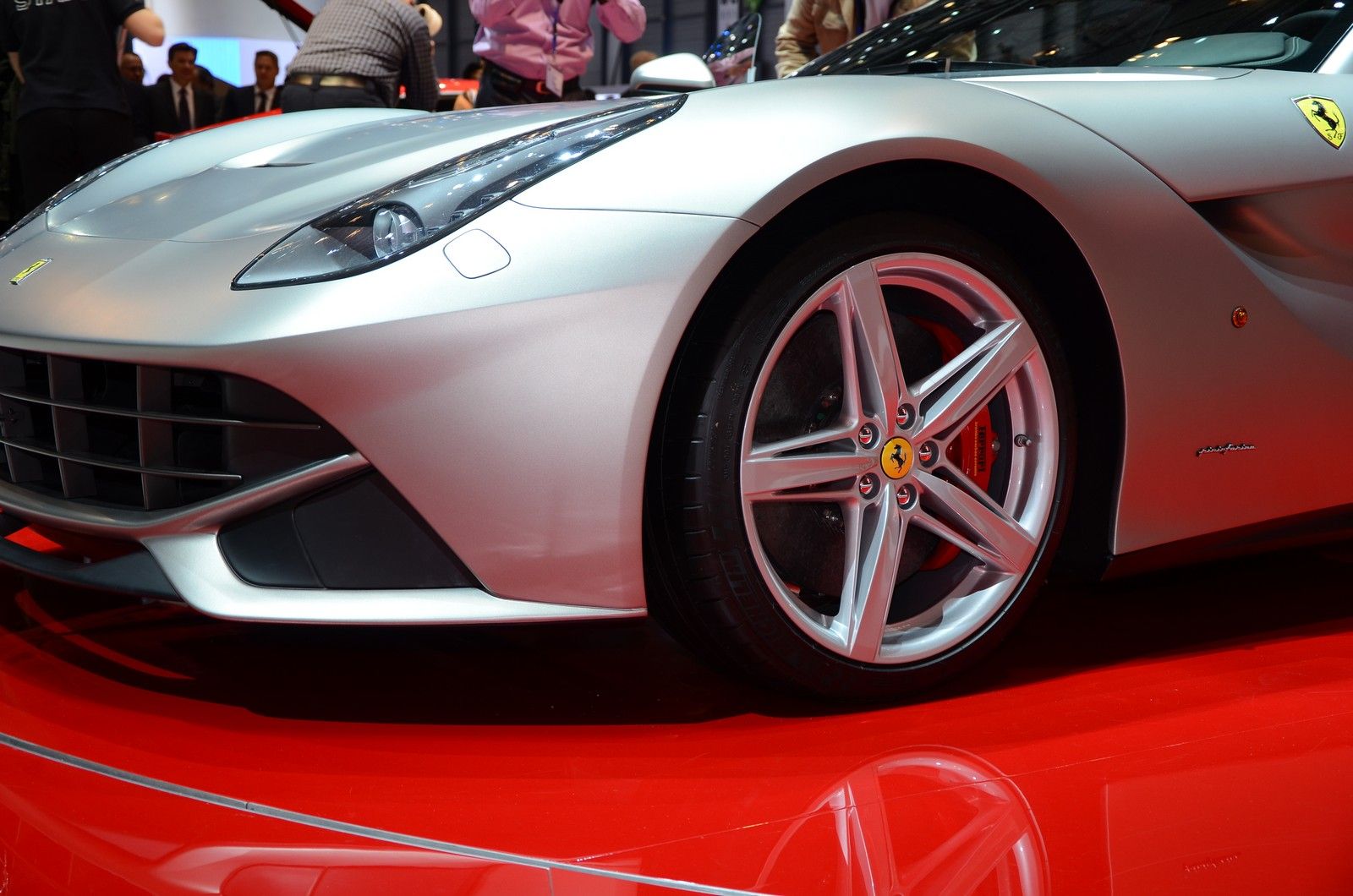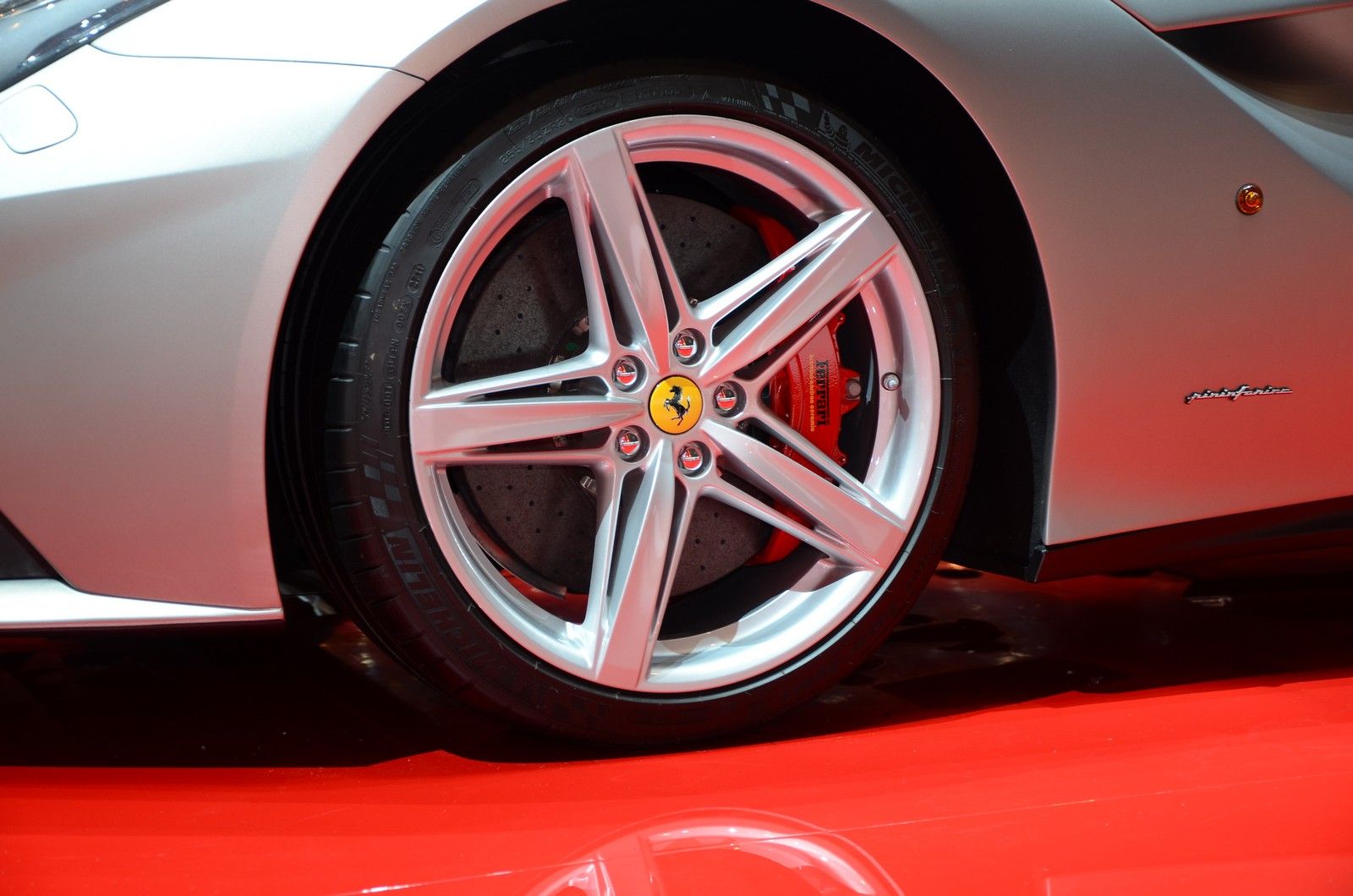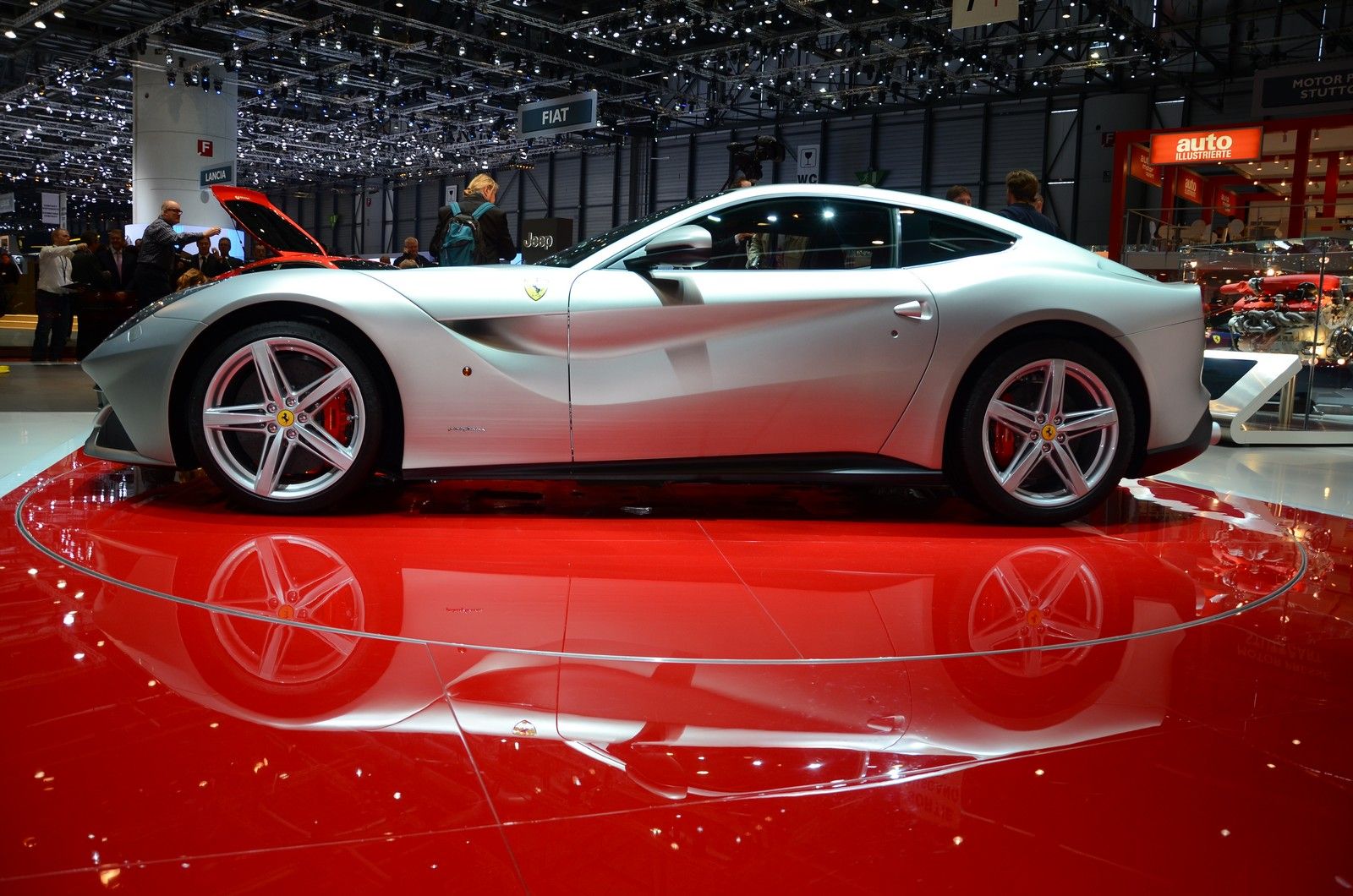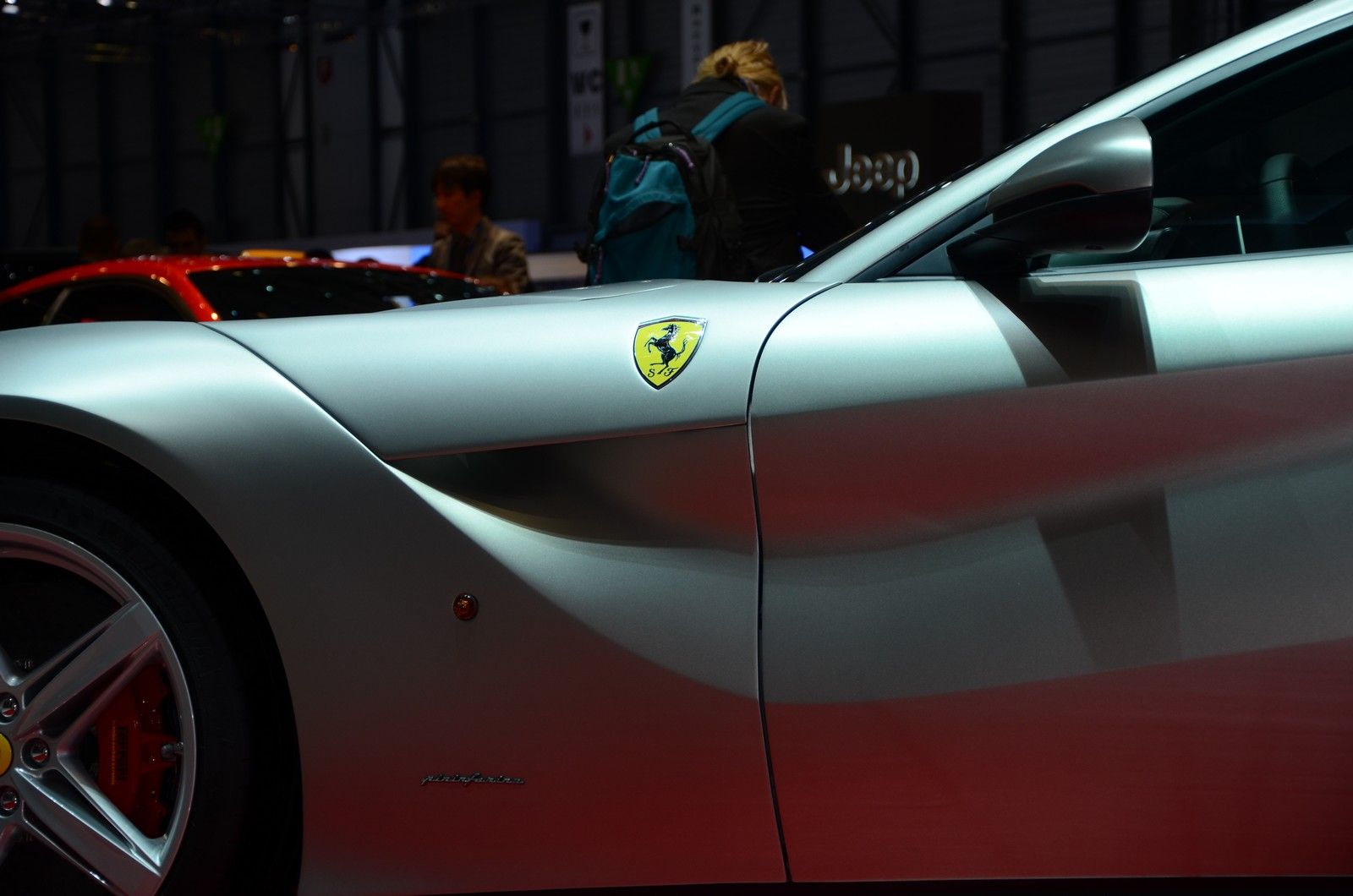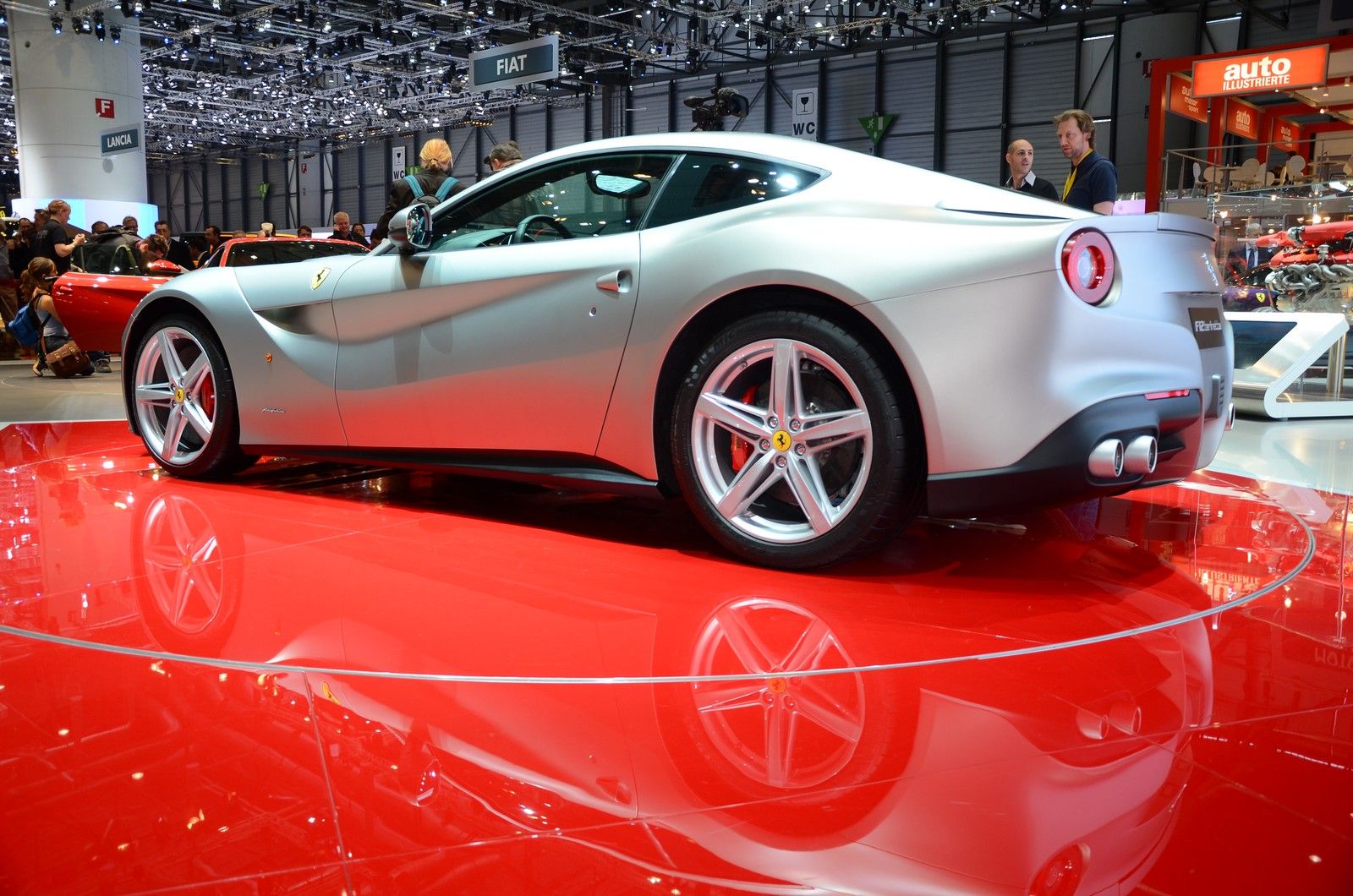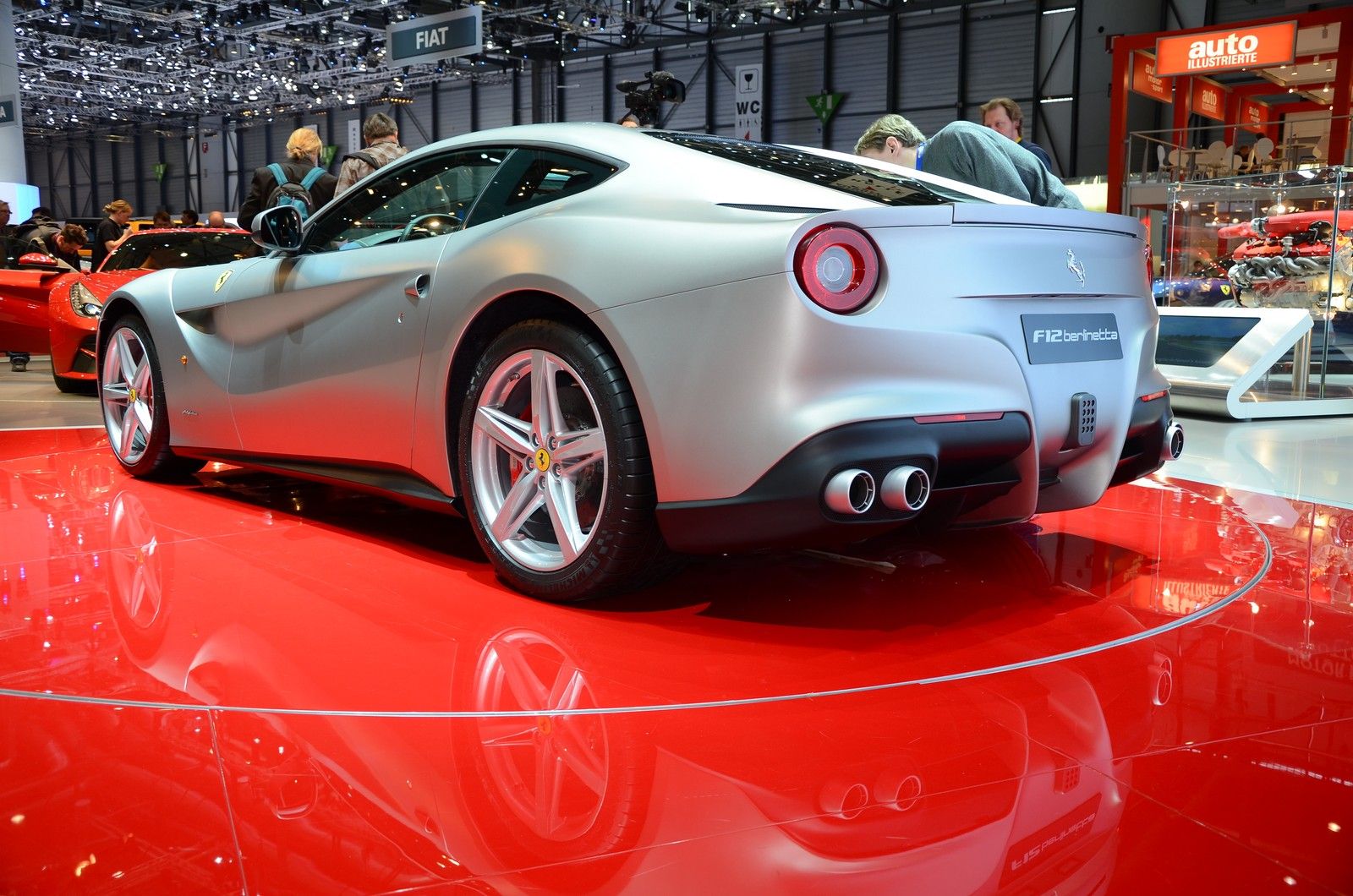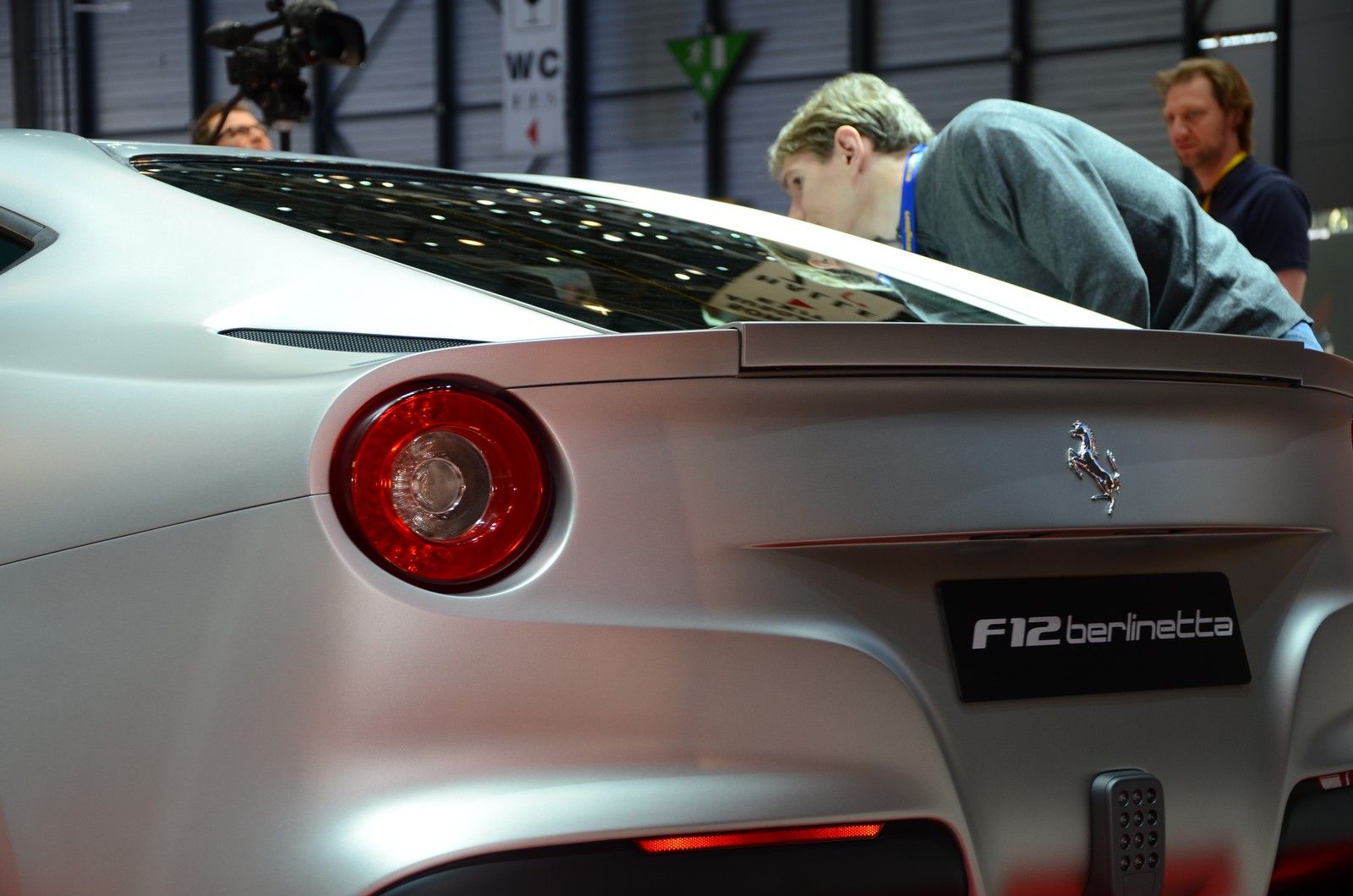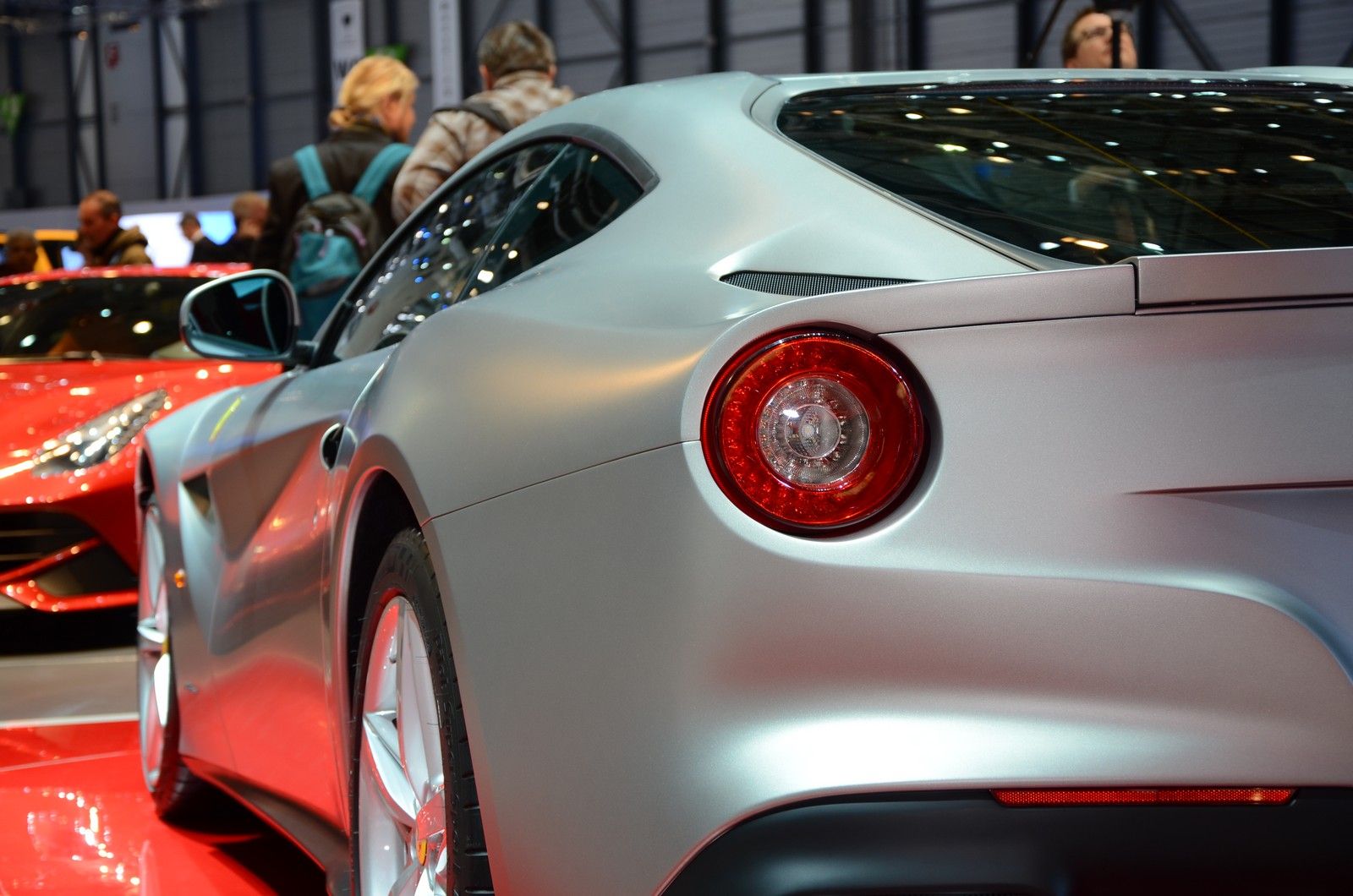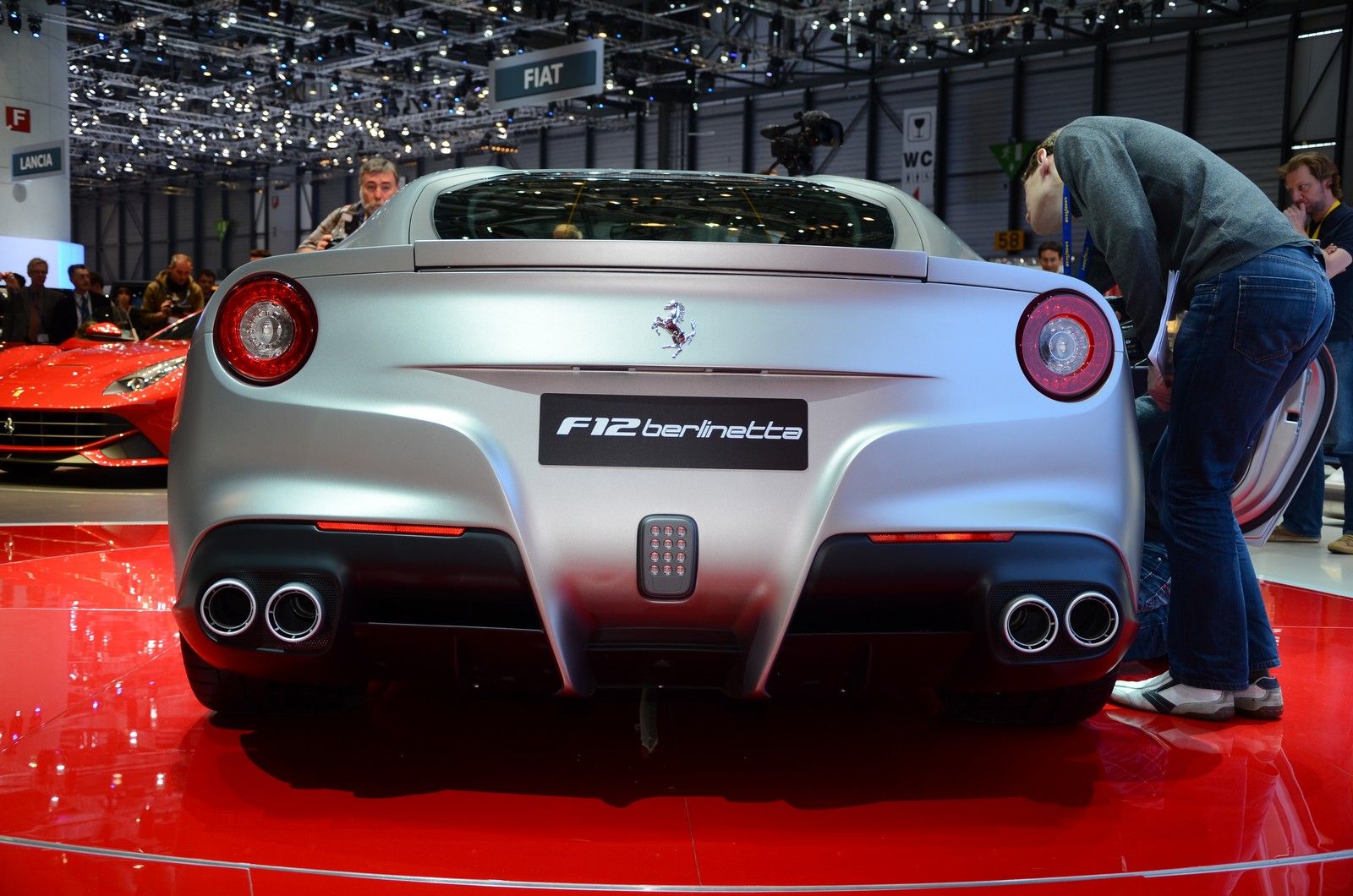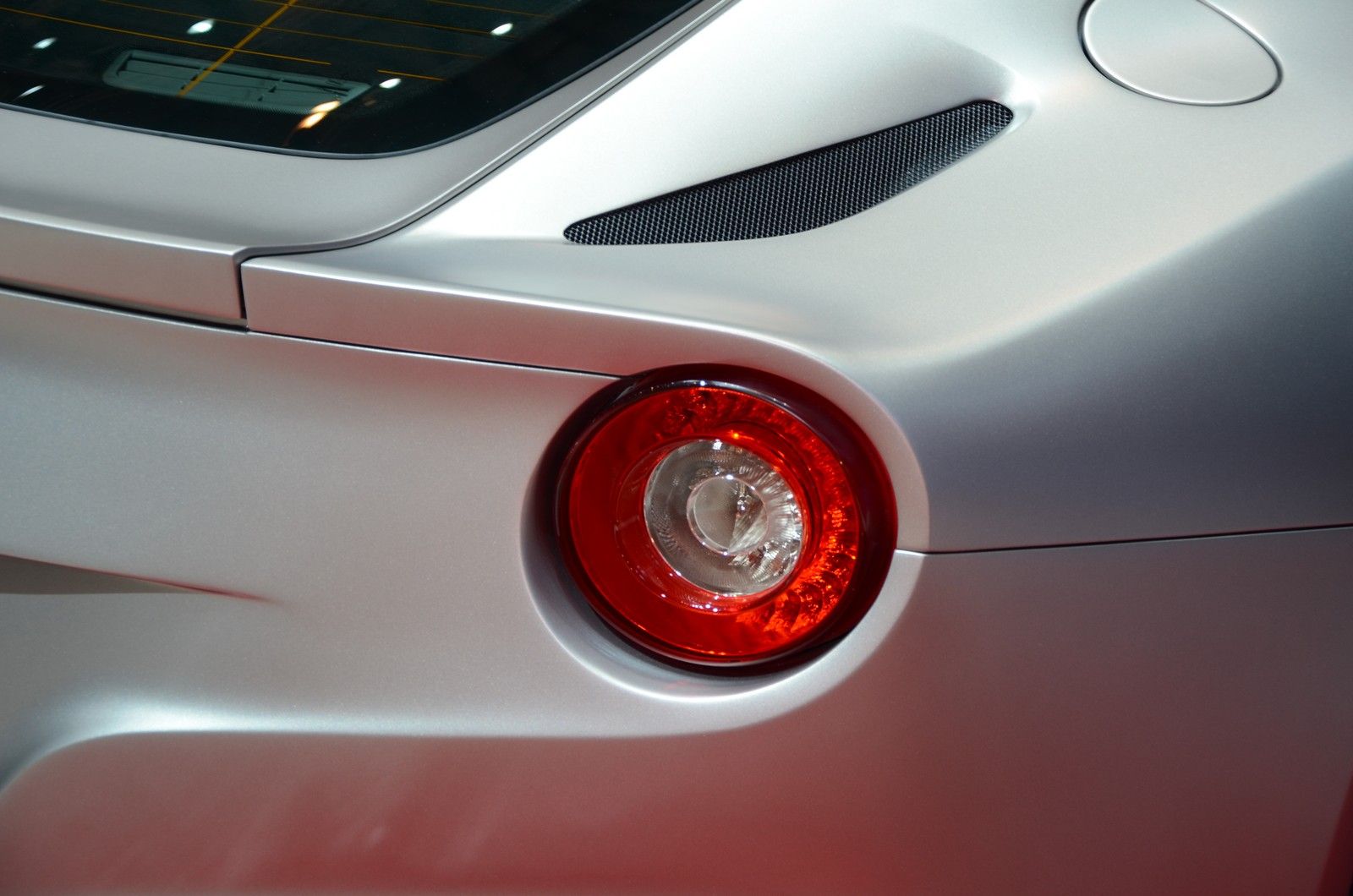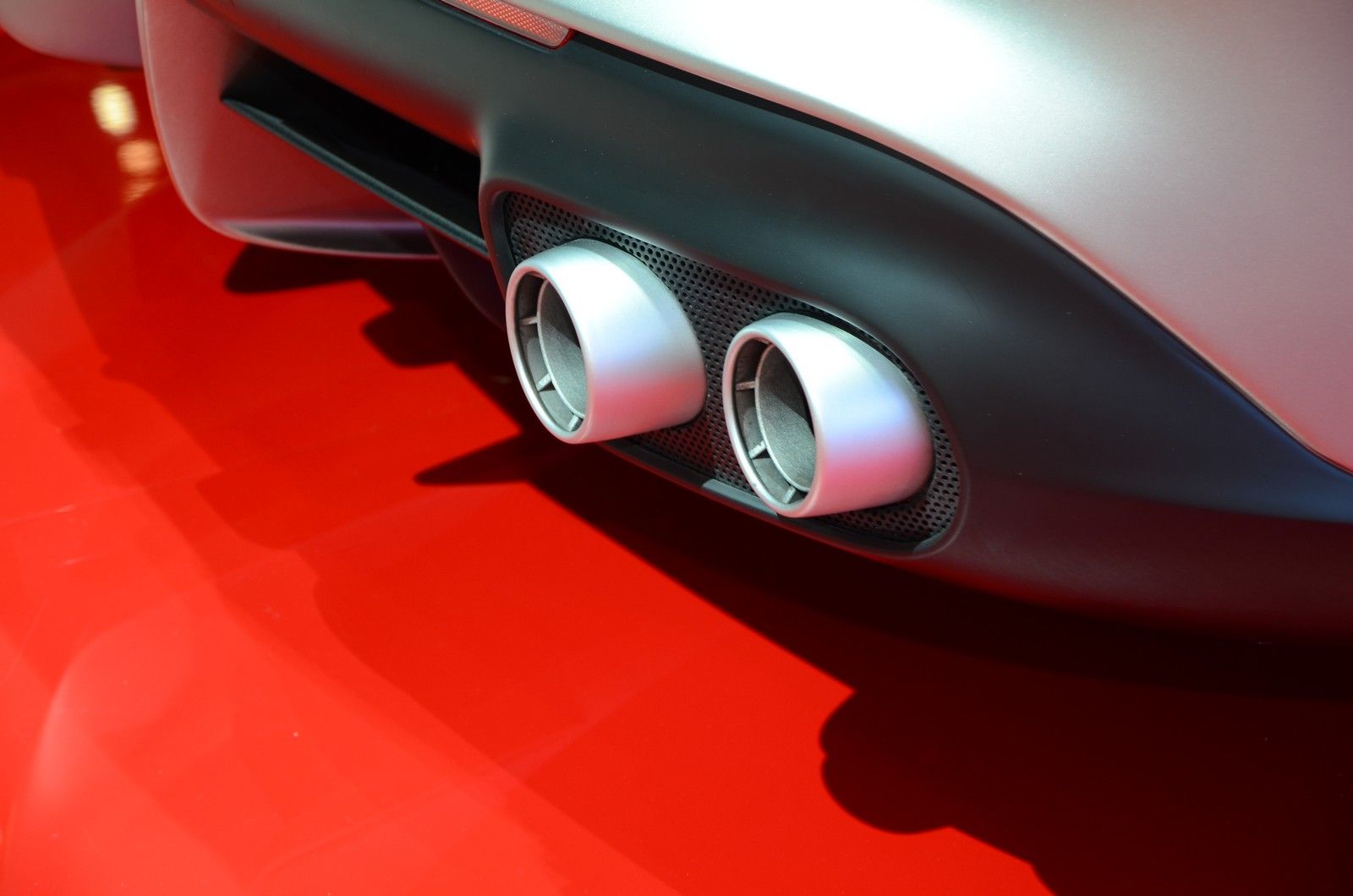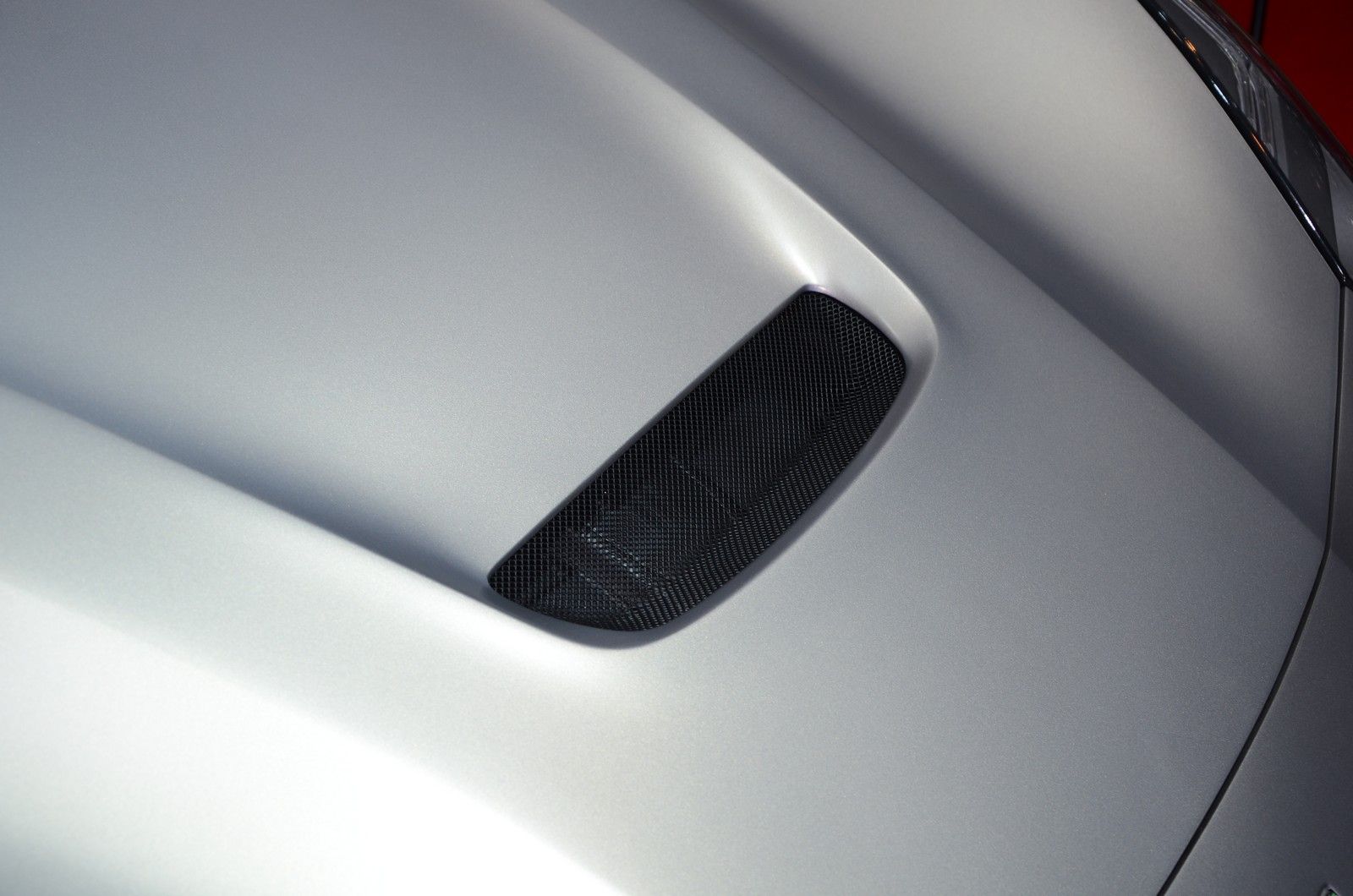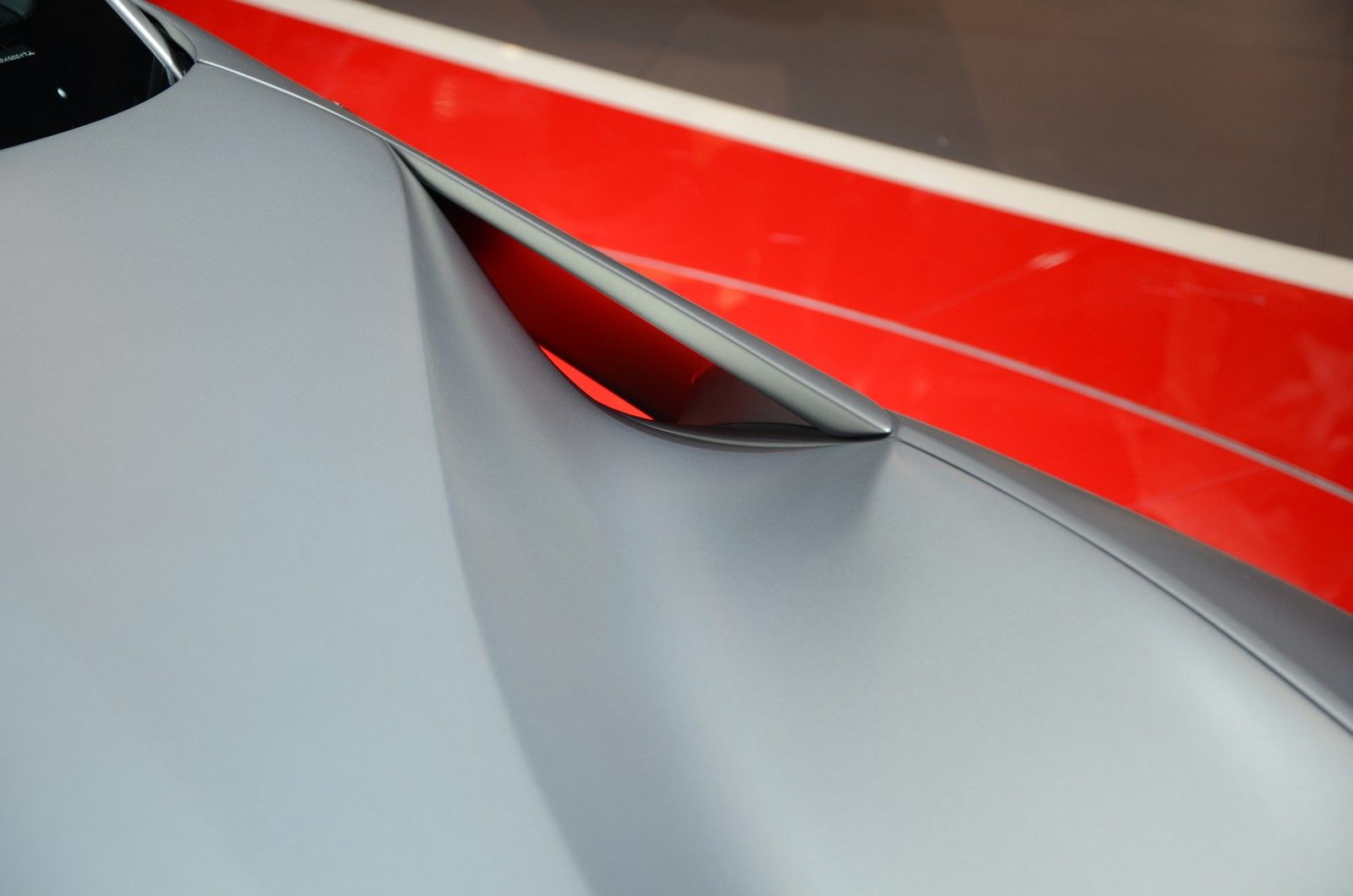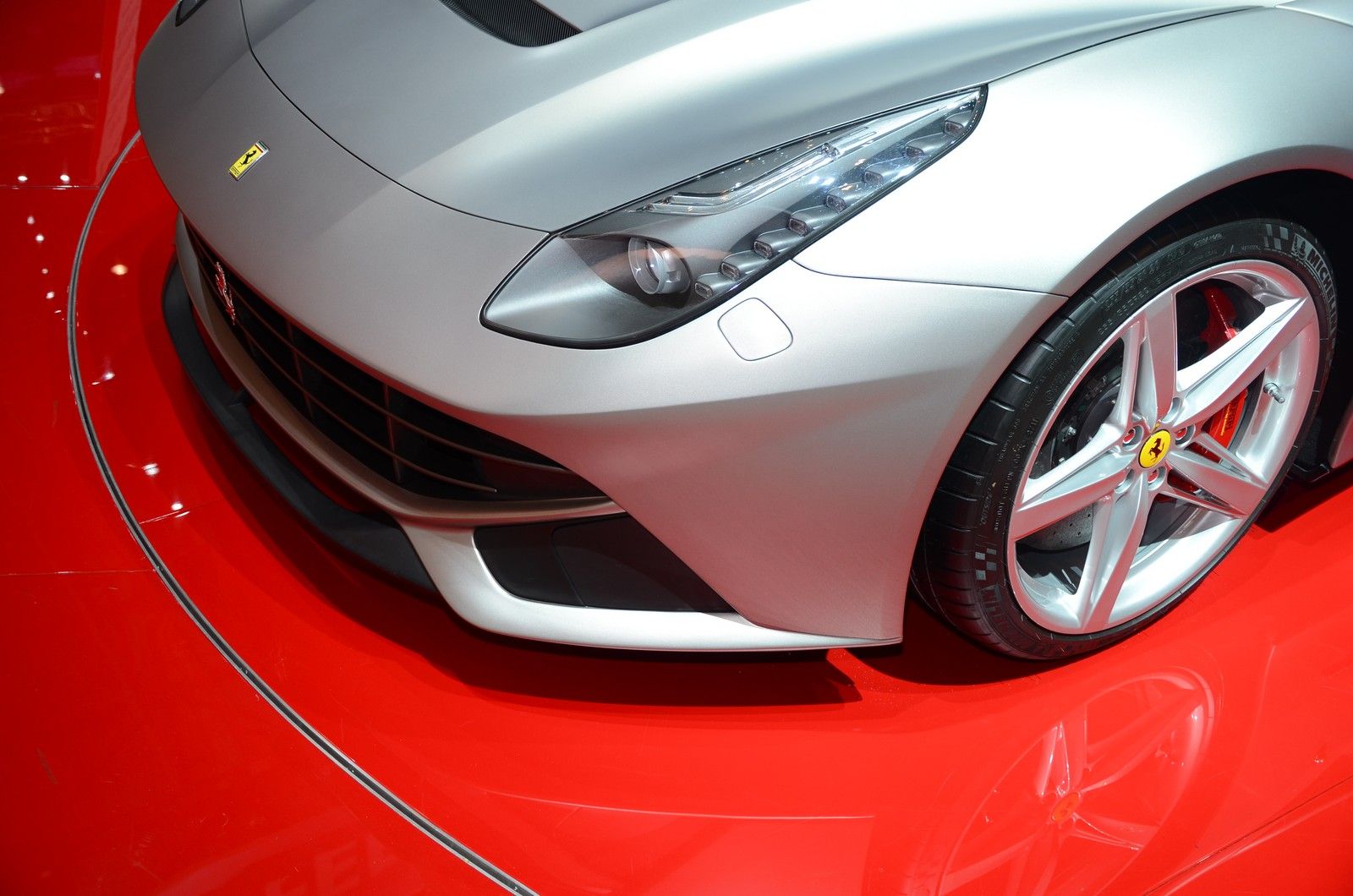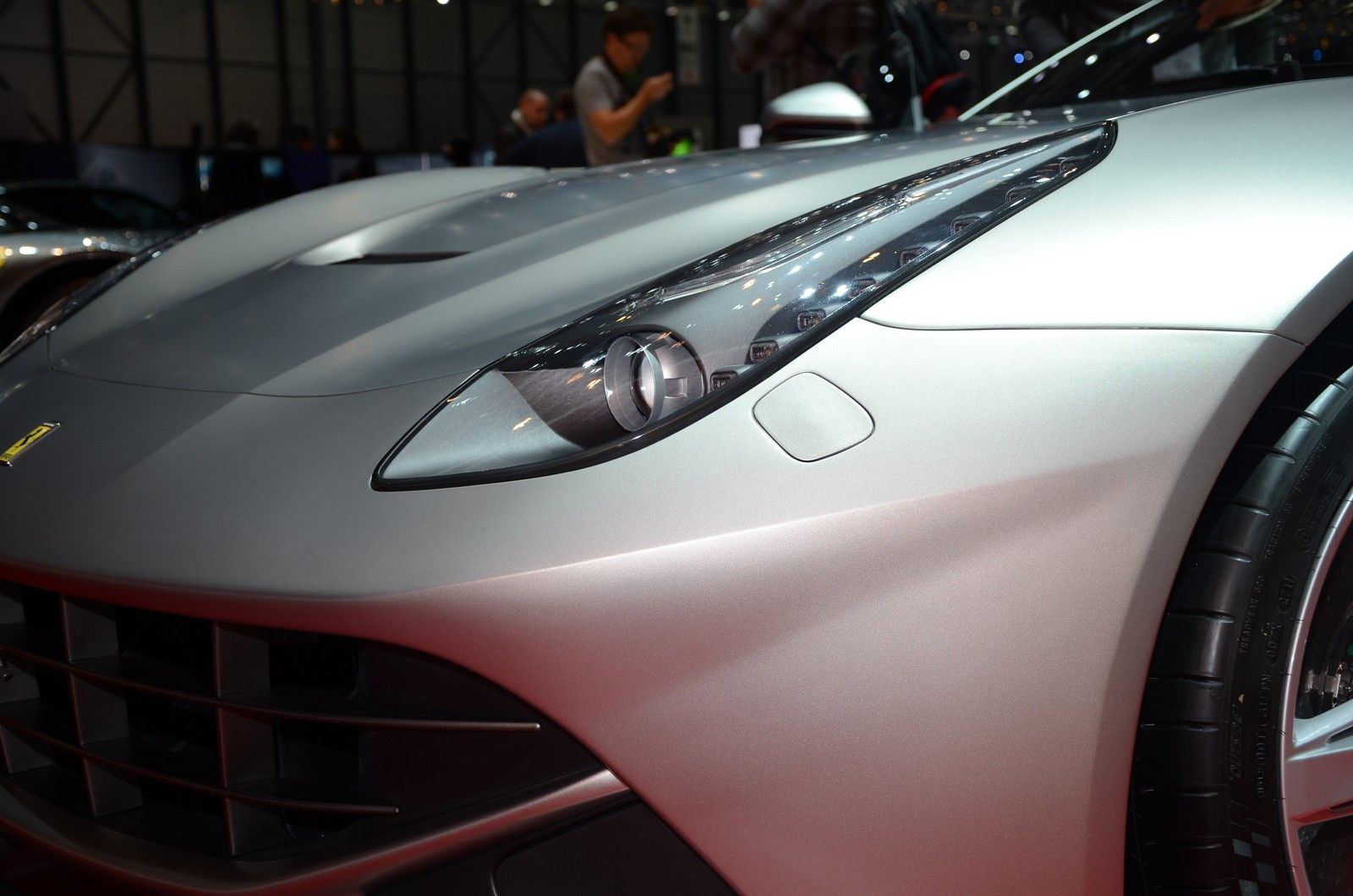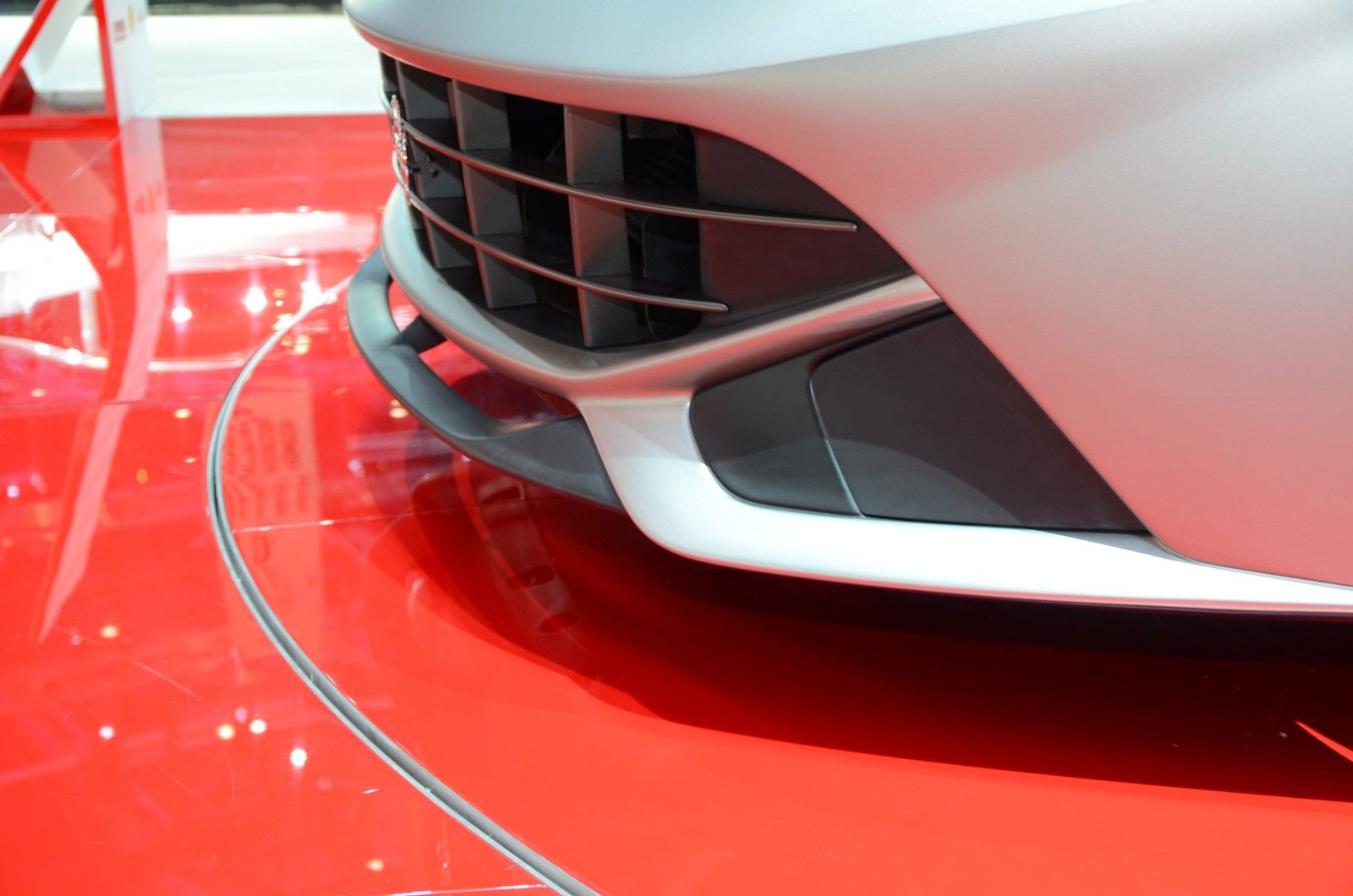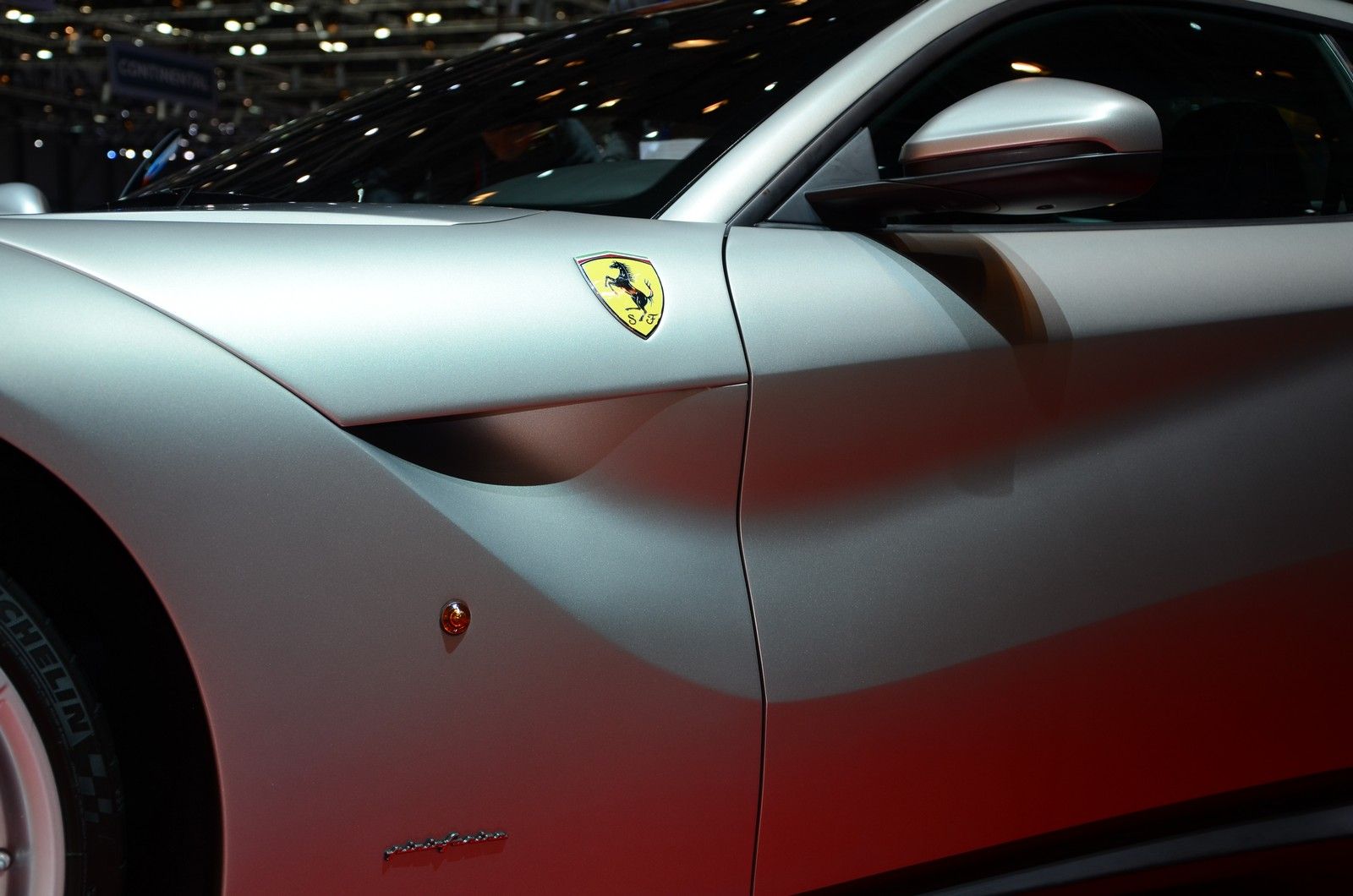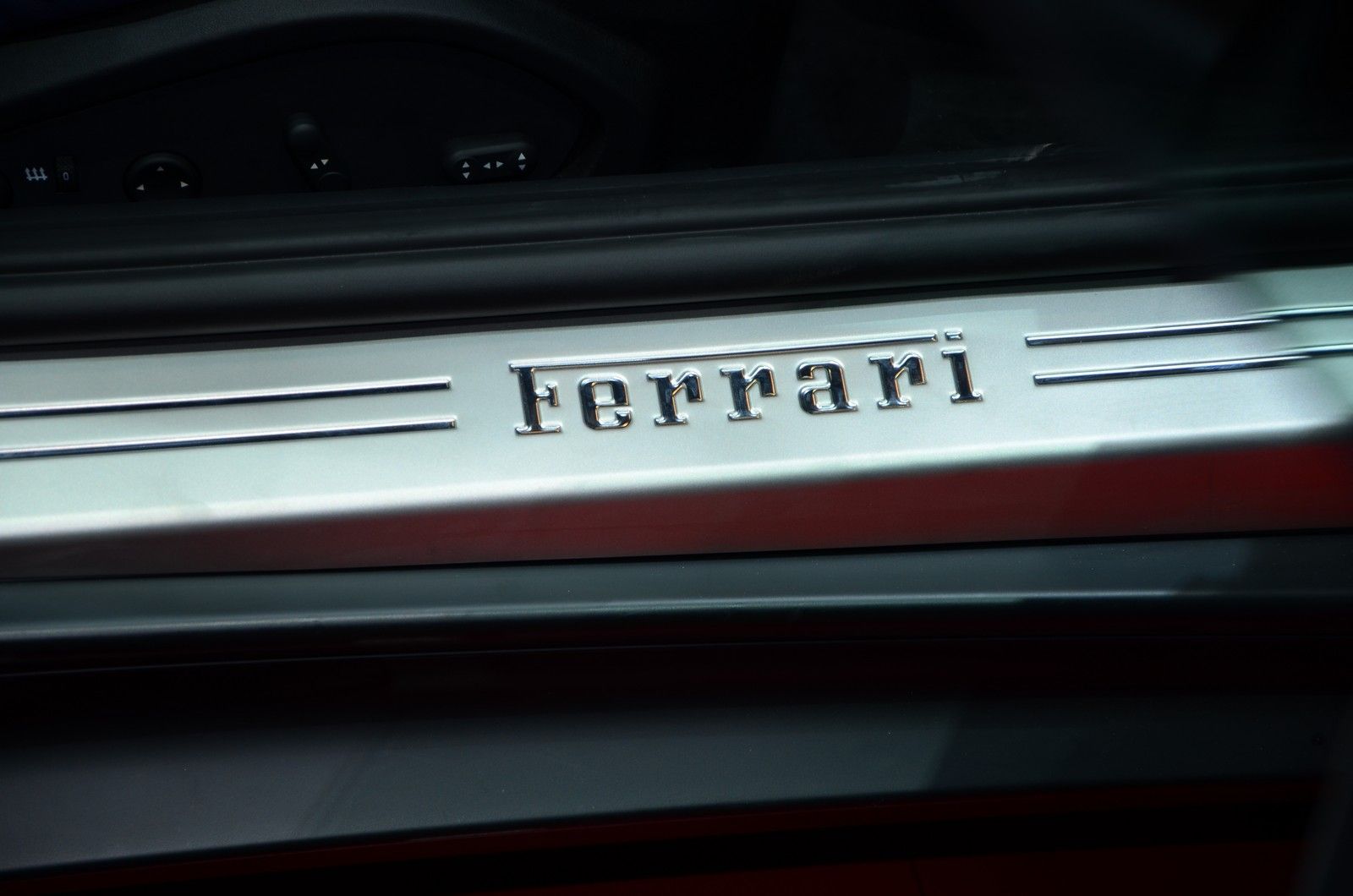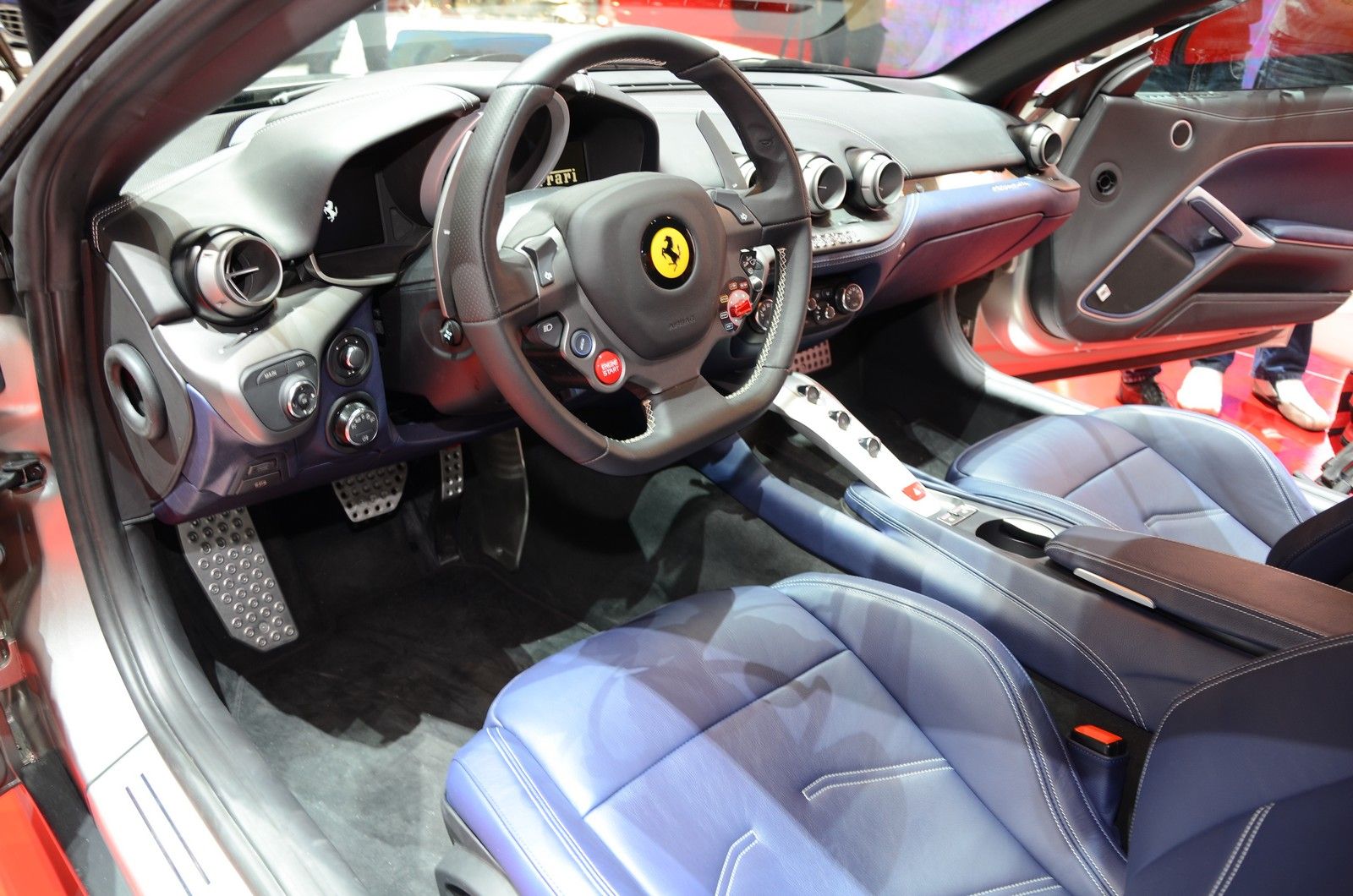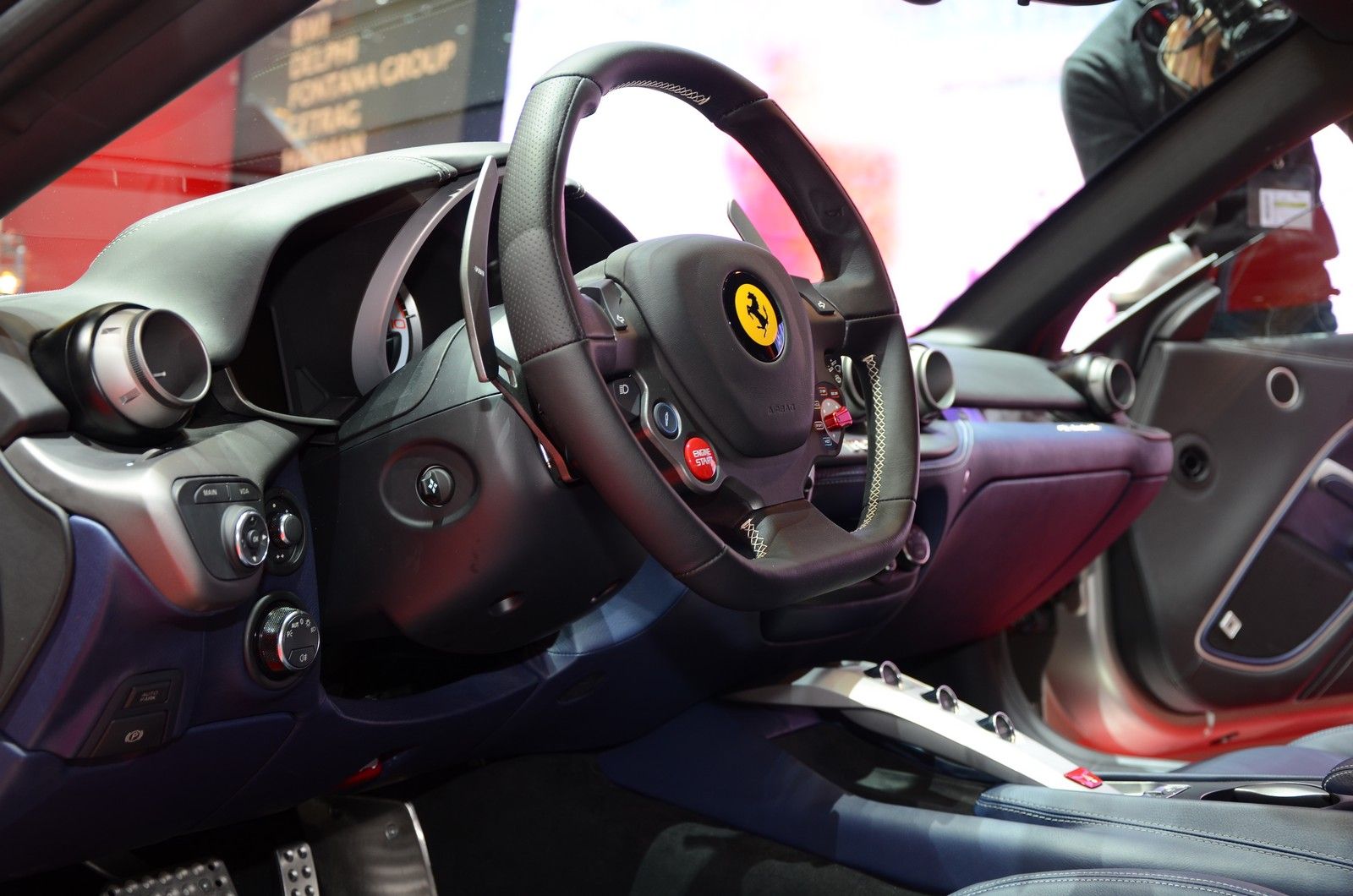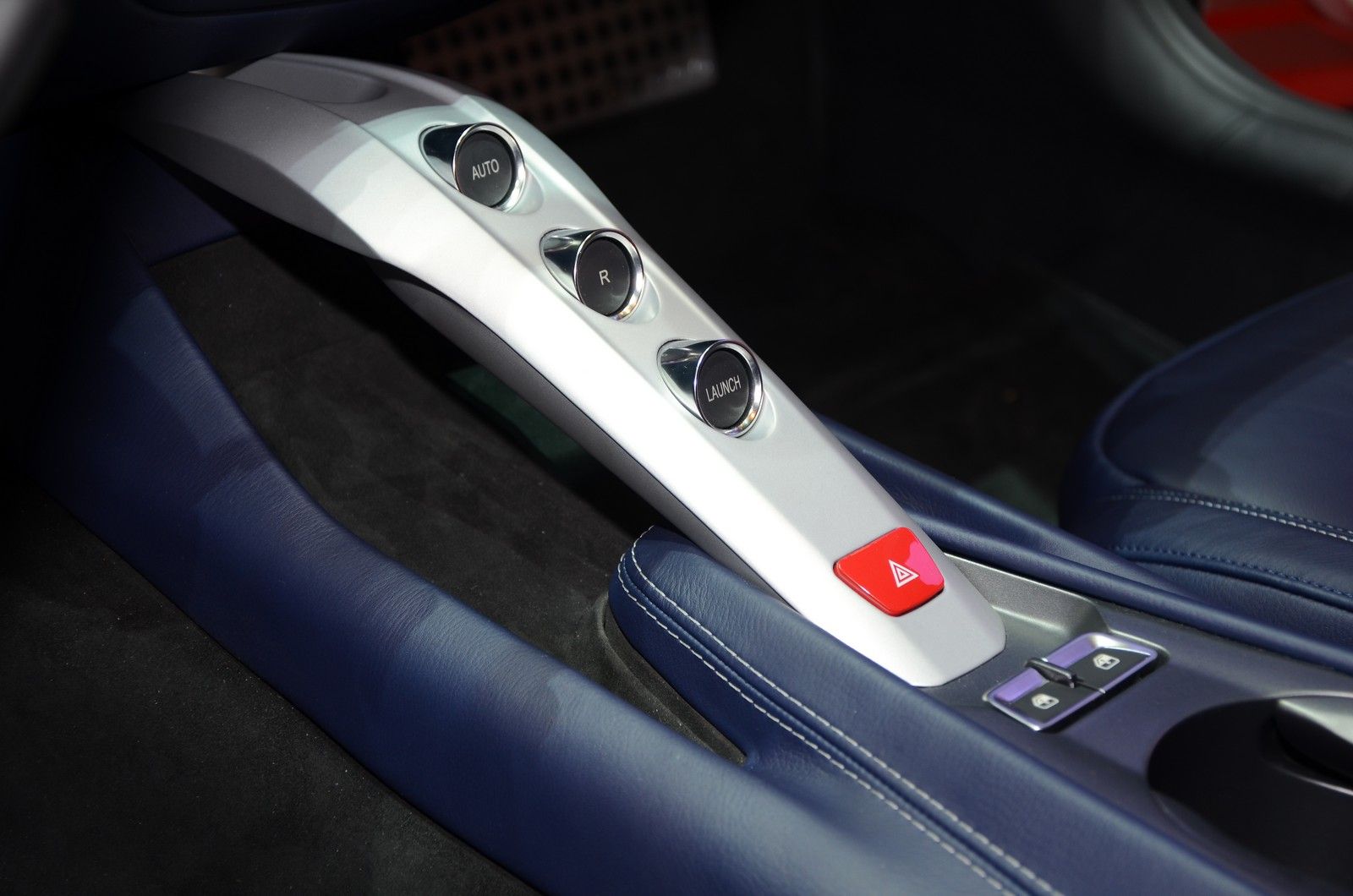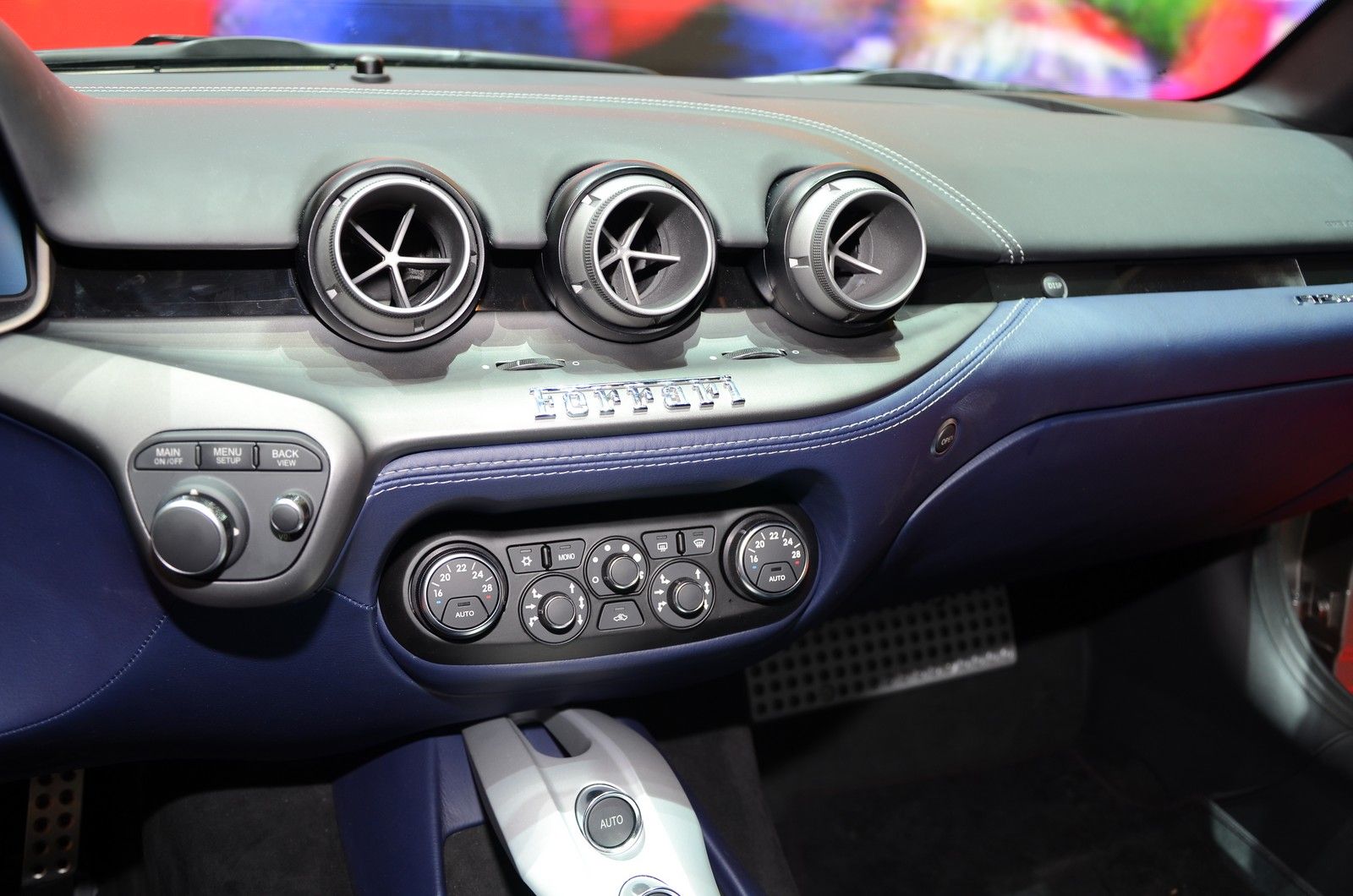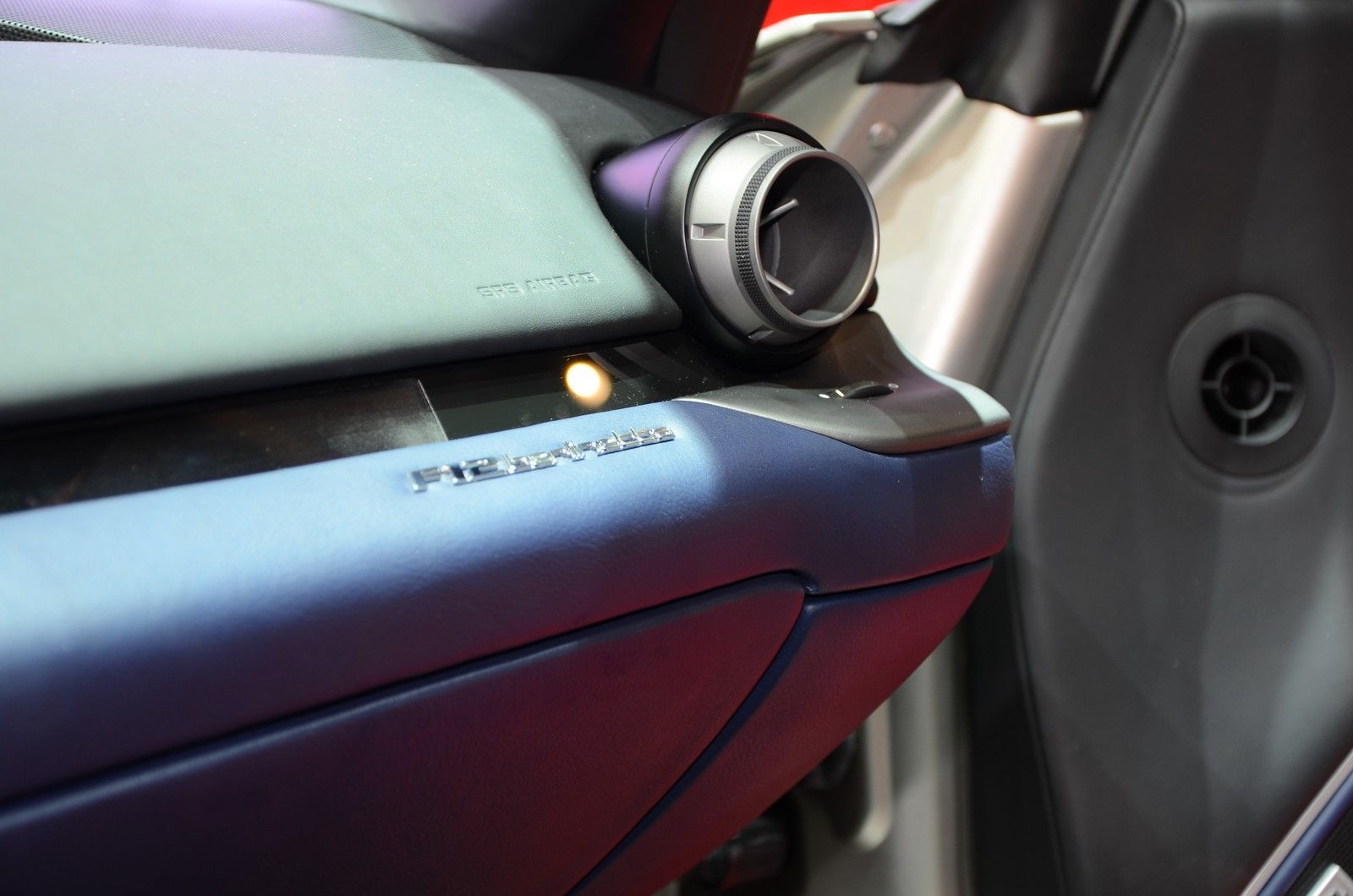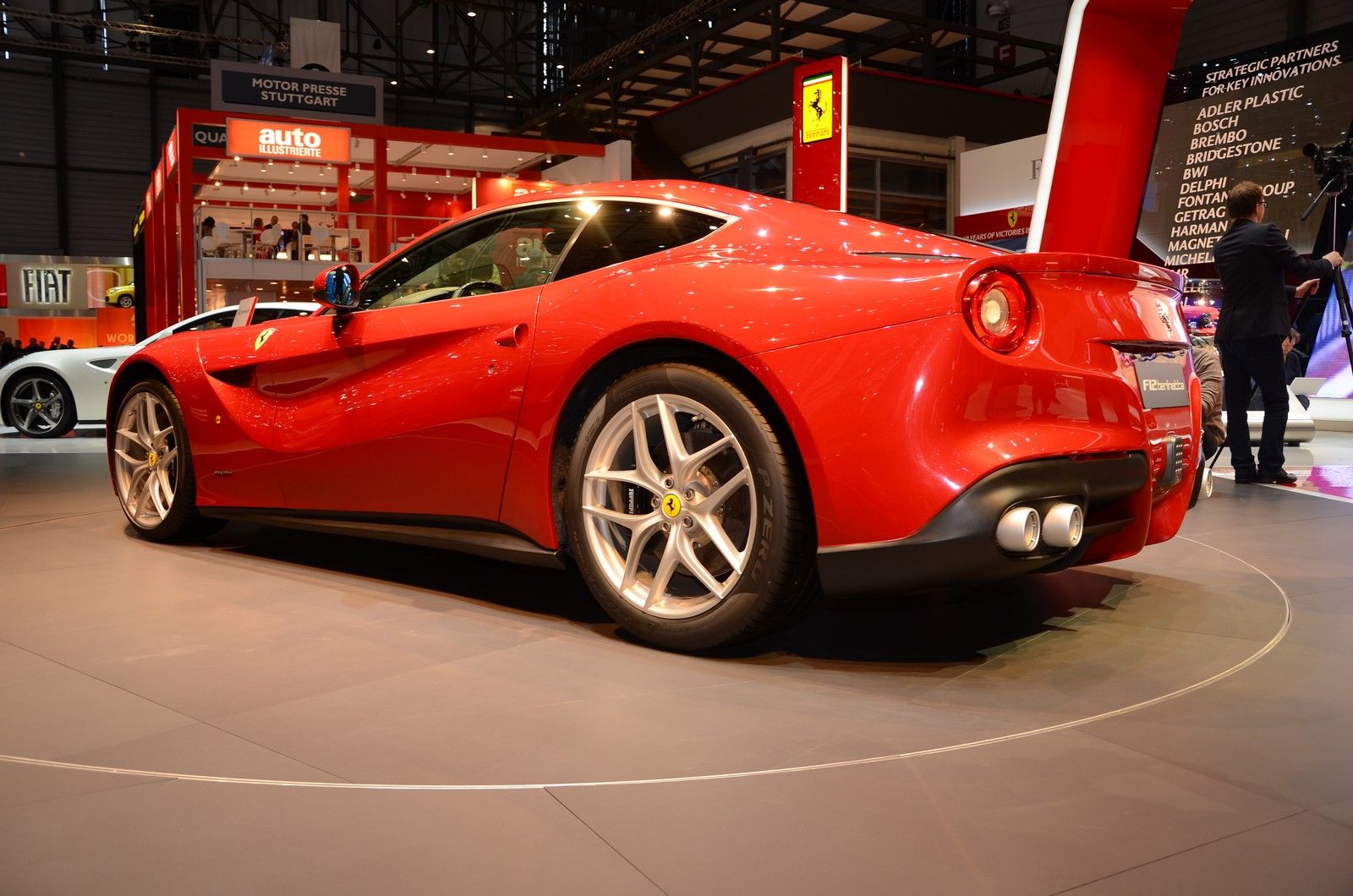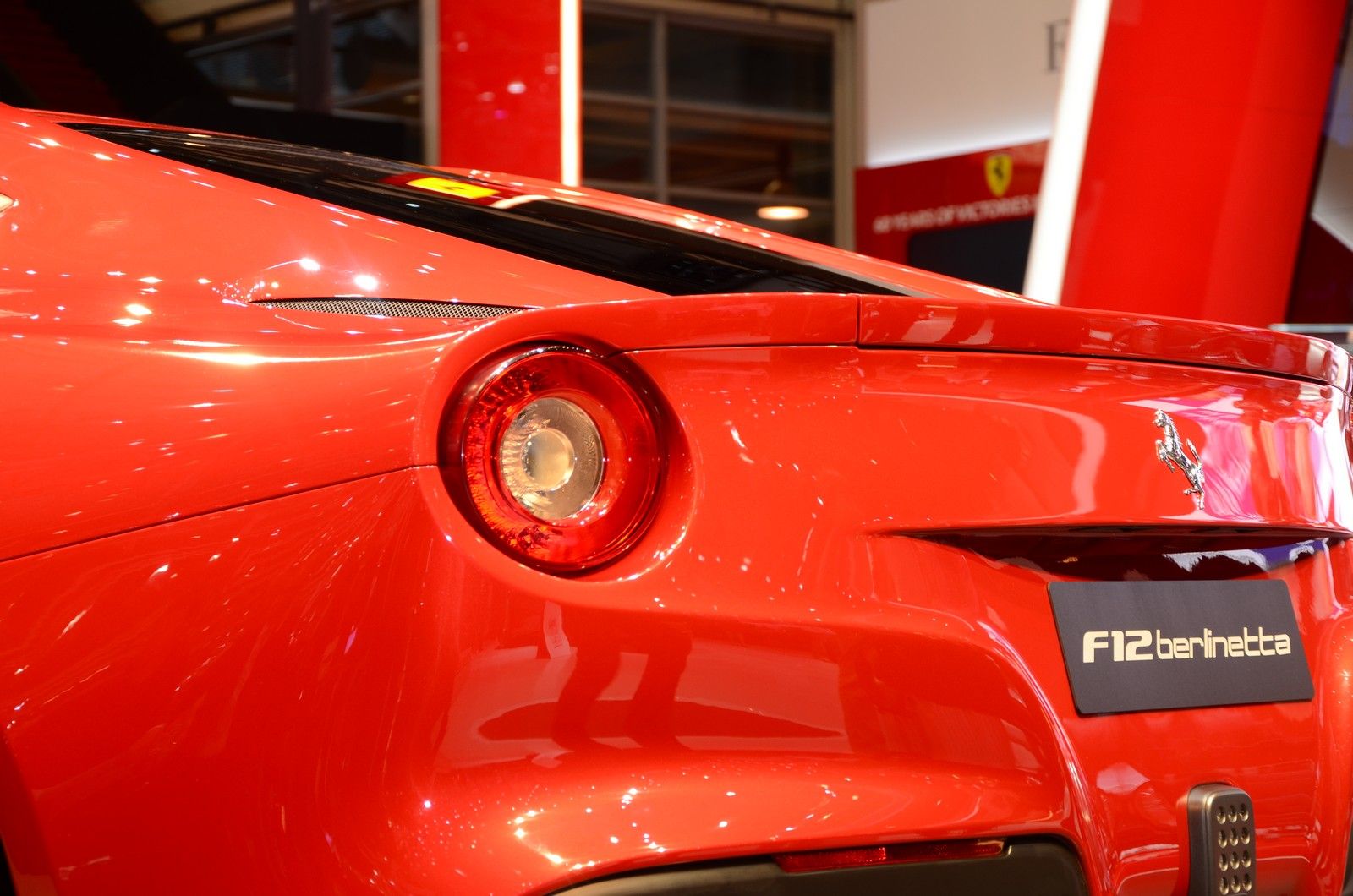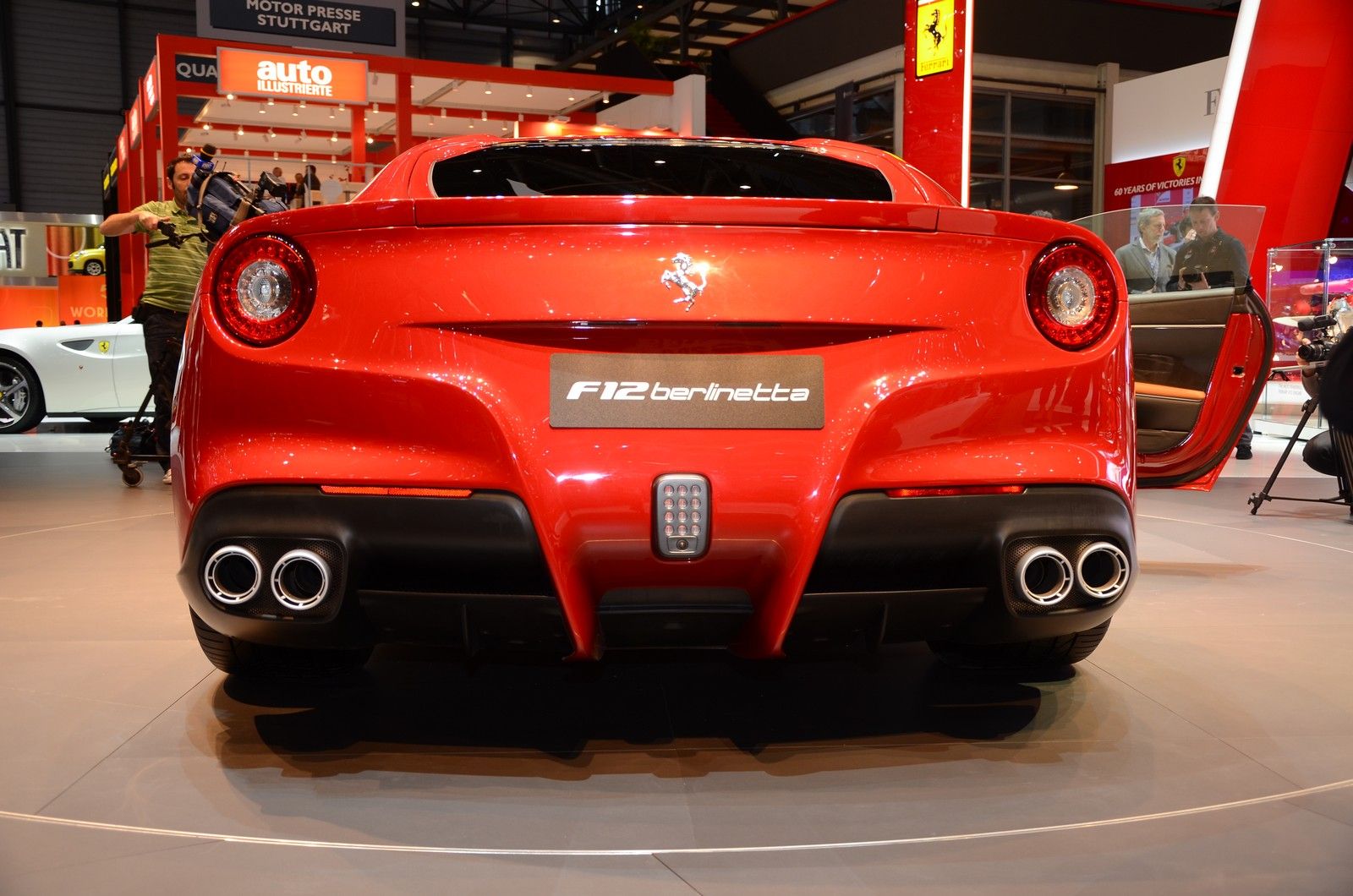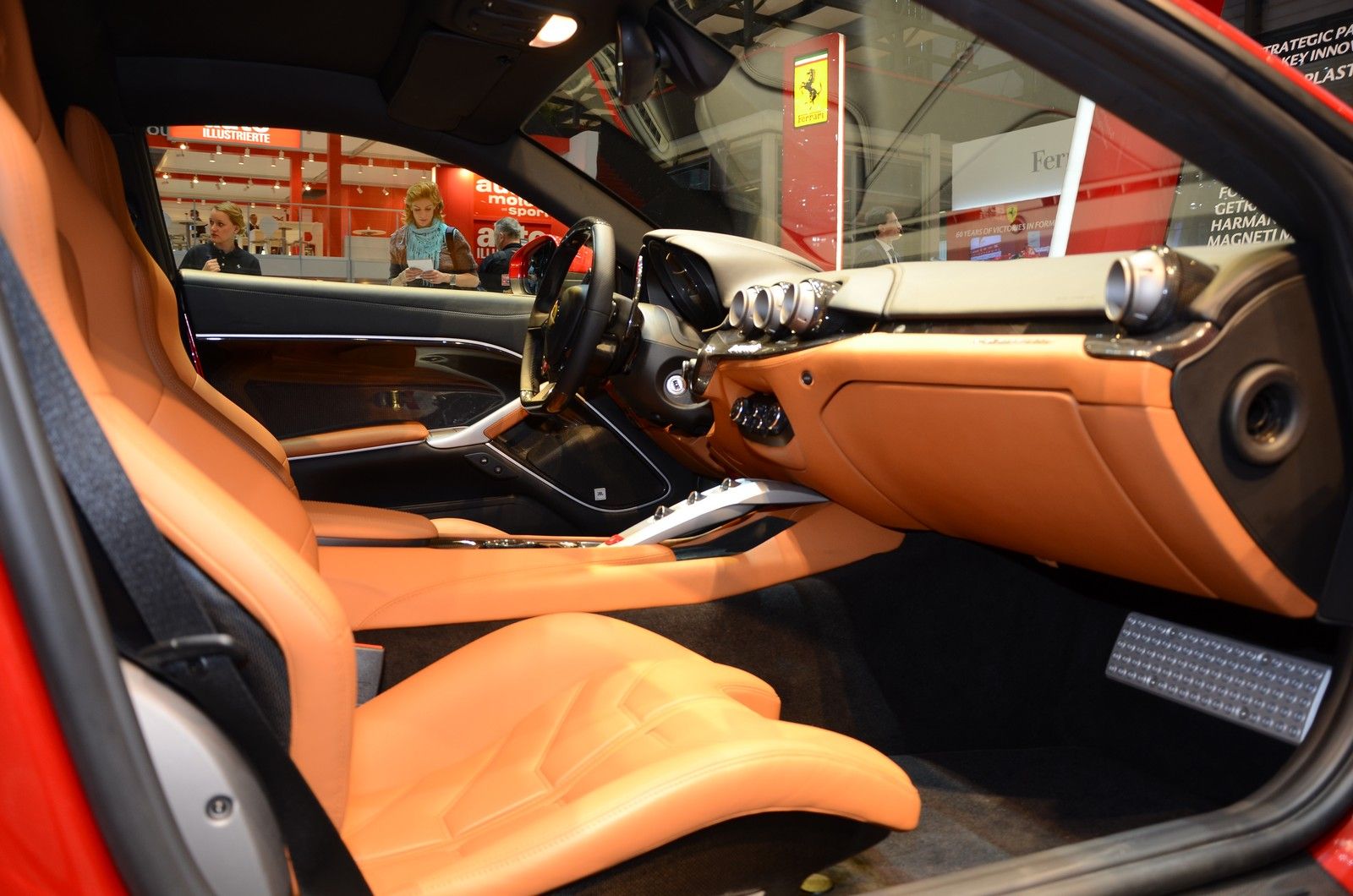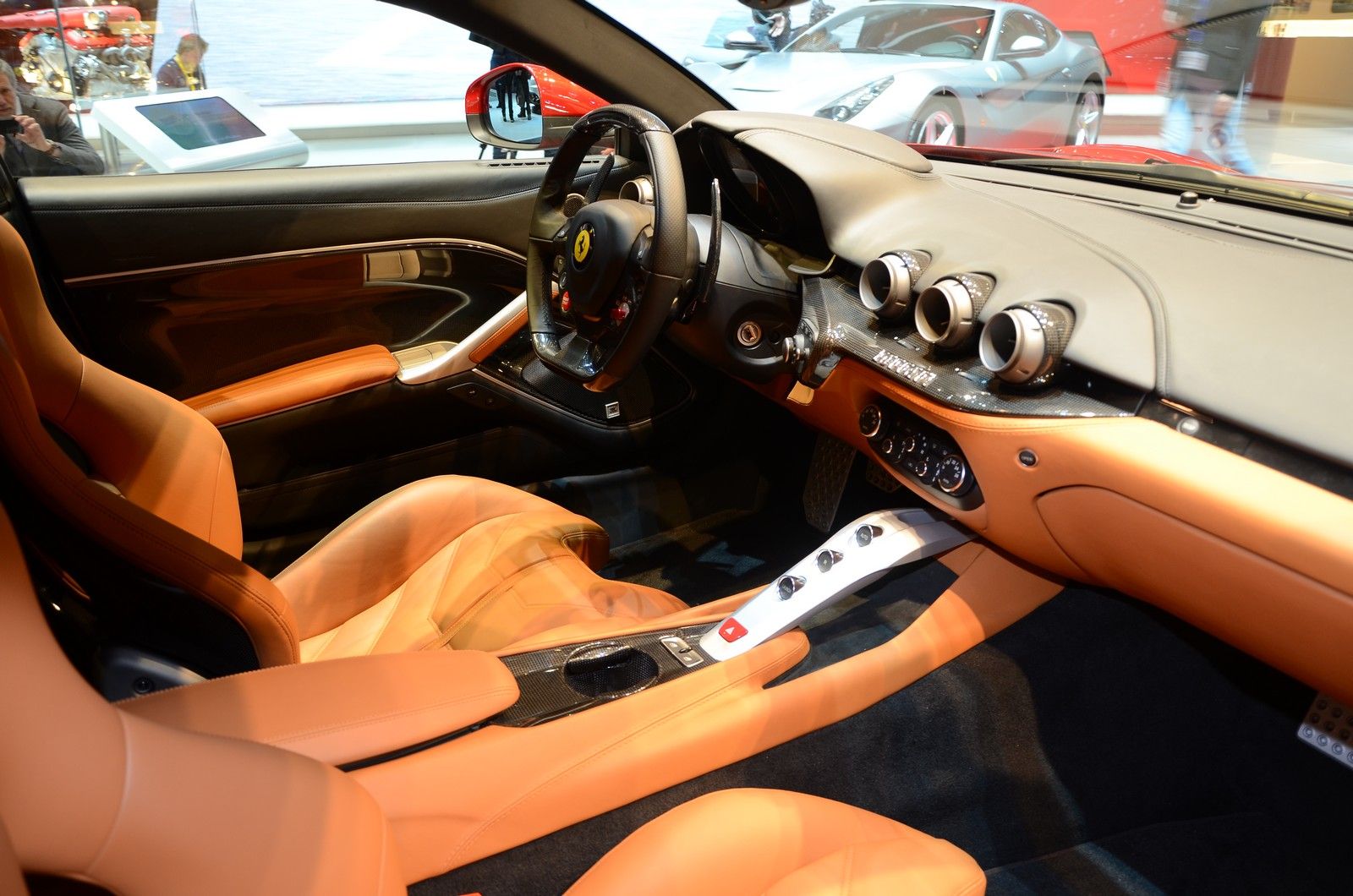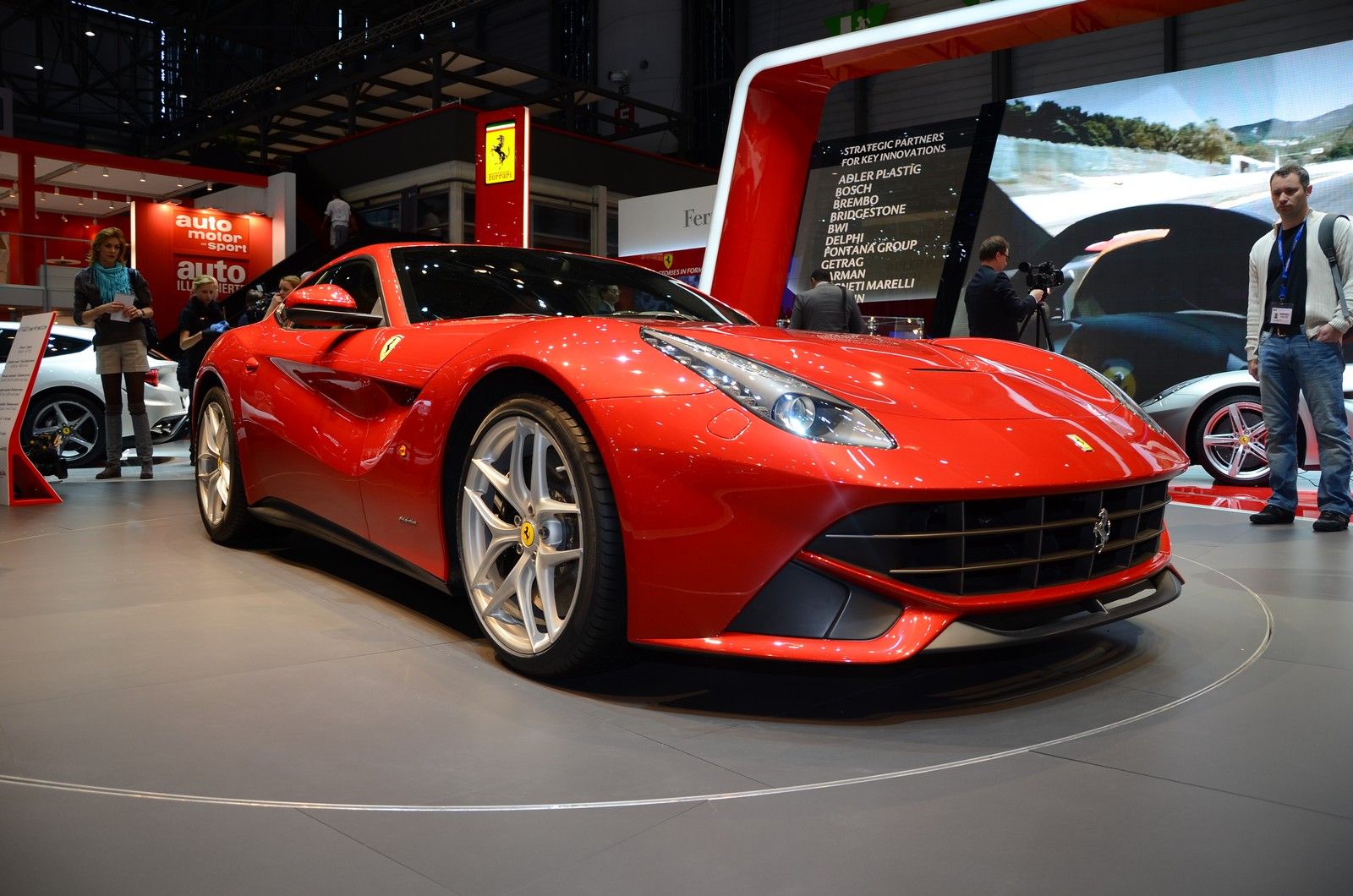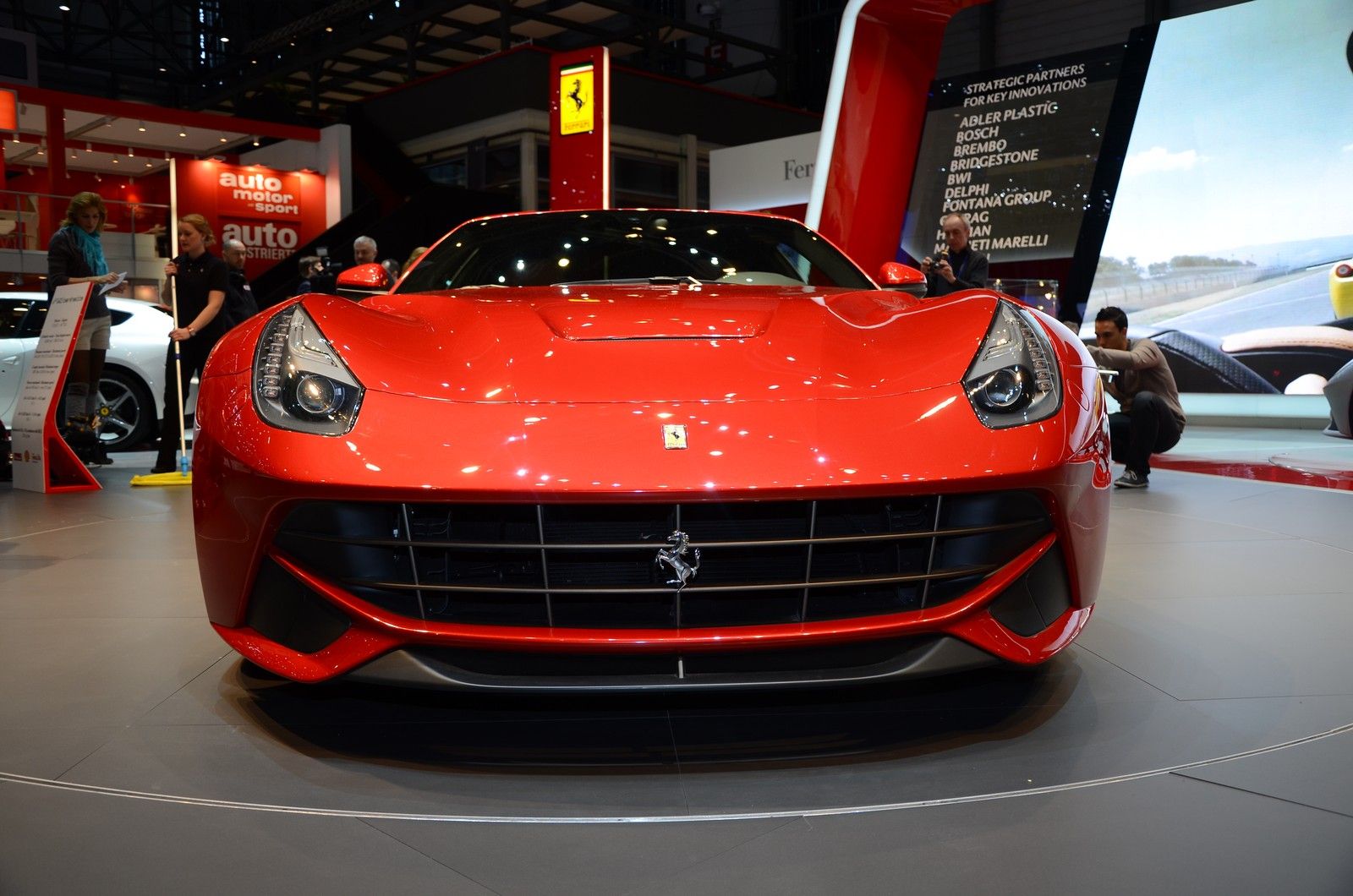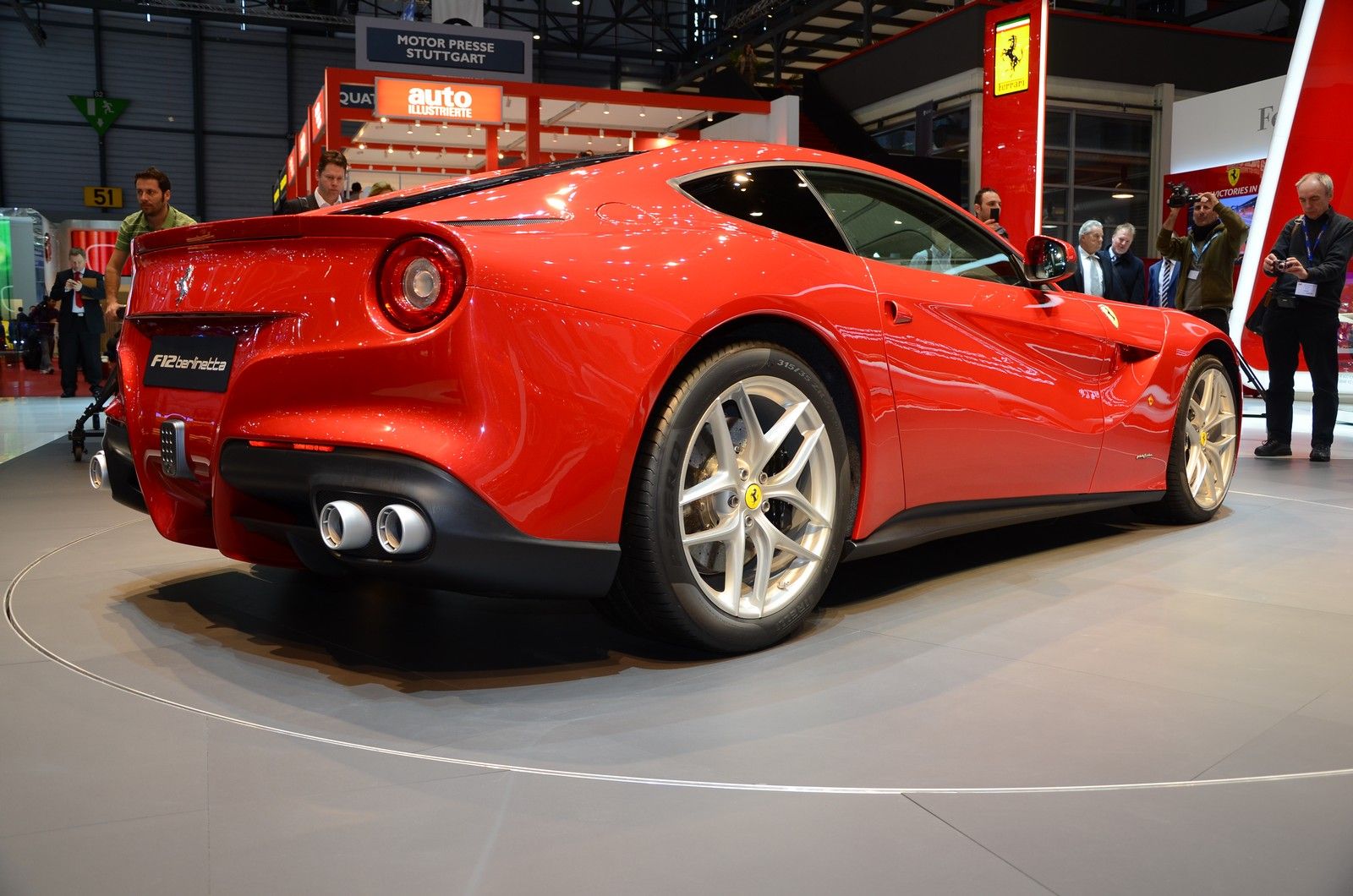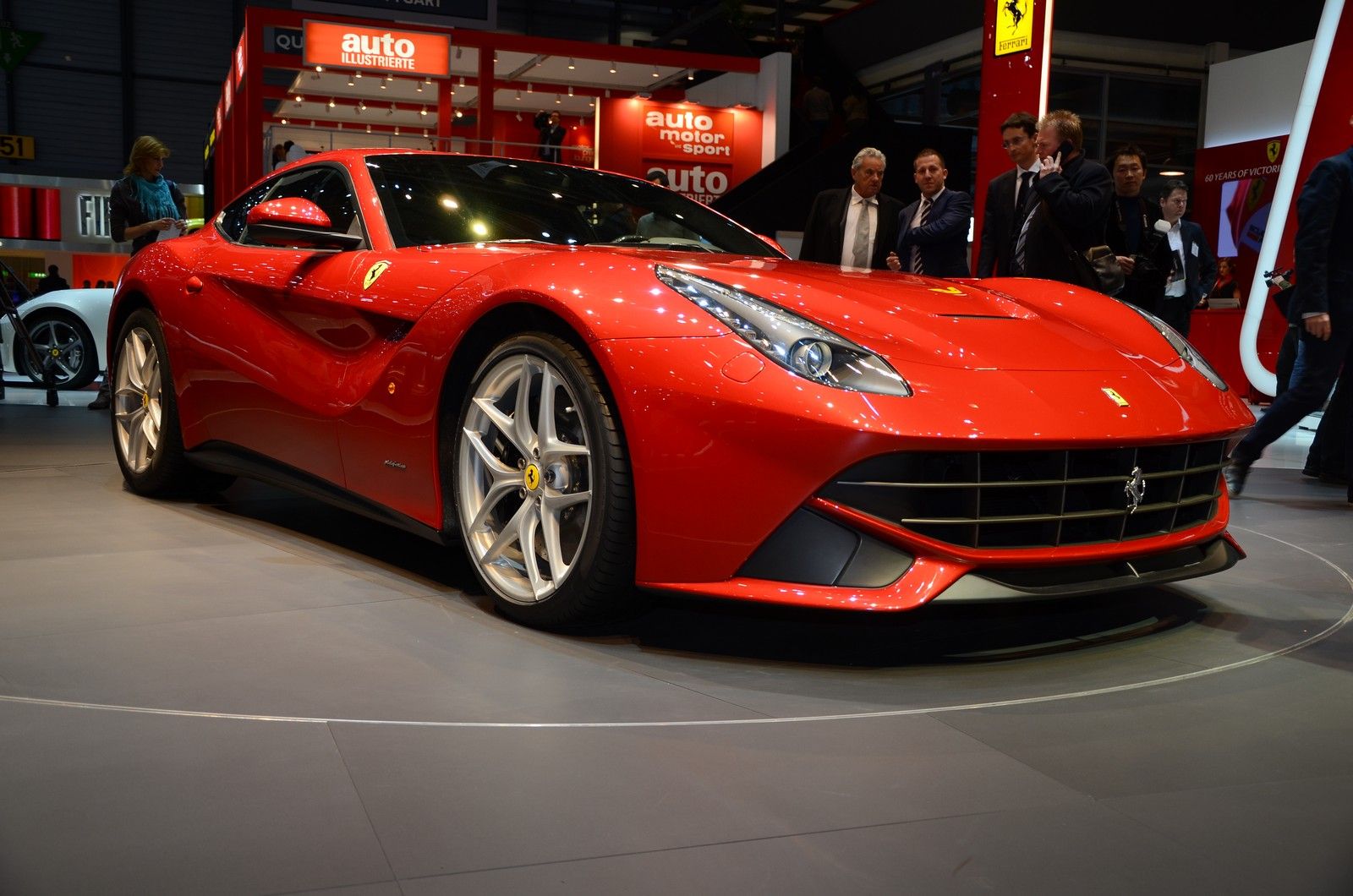When Lamborghini->ke44 released the 700-horsepower Aventador->ke3624 that sprinted to 60 mph in only 2.9 seconds, Ferrari knew it had to step up its game, or it would start losing the supercar supremacy battle very quickly. The aging 599 GTB->ke395 was an awesome car, in its prime, but with its relatively sloth-like 3.7-second sprint to 60, it was no match for the mighty raging bull.
With the Aventador already on the market and selling relatively well, Ferrari took to the drawing board and came up with a machine that it planned to have the power and speed of the Lambo, but the Ferrari plushness that its customers insisted on. This new car ended up being the F12berlinetta, a supercar unlike any that the world has ever seen and power to match its looks.
So, how exactly does the Ferrari F12berlinetta – odd name and all – stand up to the raging bull? We’ll take a deeper look into this plush supercar and see if it has the goods to fend off the bull and take home the title.
Updated 11/14/2014: Ferrari unveiled a new video featuring Kimi Raikkonen behind the wheel of the new F12berlinetta on the Fiorano race track. Enjoy!
Click past the jump to read our full review on the all-new F12berlinetta and see how it stacks up.
2013 Ferrari F12 berlinetta
- Make: Array
- Model: 2013 Ferrari F12 berlinetta
- Engine/Motor: V12
- Horsepower: 740 @ 8500
- Torque: 508 @ 6000
- Transmission: F1 dual-clutch transmission
- [do not use] Vehicle Model: Array
Exterior
We could simply summarize the F12berlinetta’s awesome styling by stating that it’s the 2012 Auto Bild Design Award winner, but that would be the easy way out. Despite its ease of exit, that statement in itself just proves how much time and effort Ferrari put into making the F12berlinetta a car that people are satisfied with even just getting an up-close glimpse at.
Up front, you get this bold combination of style and aggression that is enough to make even the most experienced driver a little uneasy. The thin lower lip leads you up to a sinister looking grin that the lower grille creates which almost looks like it is daring you to hop into the driver’s seat and take it for a spin, if you can handle it. The twin horizontal bras of the grill are intersected by a quintuplet of vertical bars, giving this grin a full set of teeth. Flanking the grille are two air-intake vents that electronically open and close to allow cooling air to flow over the front brakes, as needed.
The projector headlights sit inside lenses that seem to be one with the body, seamlessly flowing rearward to allow air to just slip off of the body, which is evident by the F12berlinetta’s 0.299 drag coefficient. Making up the outer edge of these sleek headlight assemblies is a line of LED lights, giving it a little extra flare.
Though the styling of the F12berlinetta may simply look like a work of art, there is a lot more science behind this artwork than you may know. The stylish and swooping hood actually does more than just catch your eye; it also catches the wind and creates massive down-force. The hood flanks are tall enough to channel air toward the center of the hood, creating this down-force and the air is then channeled through a pair of openings on either edge of the hood, near the windshield. This is a technology that Ferrari calls the Aero Bridge.
As the air escapes from these two vents at the rear of the hood, it is channeled into the valley cut into the doors. The valley then swoops around the car as you approach the rear end of the F12berlinetta.
Helping improve its aerodynamic drag and down-force production, Ferrari faired in the underside of the F12berlinetta – closed the underside off, so it is one smooth piece. This allows the air to flow under the car without creating excessive upward pressure or wind resistance. As the airflow approaches the rear of the fairing, it is redirected upward and out of the vents just in front of the rear wheels. This rush of air creates a large amount of down-force on the rear axle without increasing aerodynamic drag too much.
From that point, the remaining air flows under the center of the faired underside of the F12berlinetta and hits the rear diffuser to create the remaining down-force and reduce drag. In all, the body design of the F12berlinetta creates a total of 123 kg (271 lbs) of down-force without the use of any additional spoilers beyond the rear diffuser. That’s quite an impressive feat to say the least.
The overall focus of the F12berlinetta was to take what Ferrari had built with the 599 GTB and make it better. Ferrari achieved this by dropping 70 kg (154 lbs) of weight from the 599 GTB, mostly from the areas that hang over the edges of the wheelbase. This is exactly why so much focus went into effective use of airflow, as Ferrari didn’t need to add extra weight to the body in the form of spoilers. That knocks off most of the weight right there.
Ferrari also knocked 47 mm (1.85 inches) in length, 63 mm (2.48 inches) in length and 20 mm (0.787 inches) in width from the 599 GTB’s dimensions. In order to meet the aerodynamic needs, you’ll also notice that Ferrari took the 599 GTB’s front glass and raked it rearward at a shallower angle and lowered the roofline significantly. The rear section is also significantly shorter on the F12berlinetta, as it only has 82 mm (3.22 inches) of overhang from the rearmost part of the wheelbase. All of this reduction and 12 different aluminum alloys that make up the body brings the F12berlinetta down to a svelte 1,525 kg (3,362 lbs).
Aerodynamics isn’t all the Ferrari was looking for though, which is noticeable as we approach the backside of the car. This collaboration between Ferrari design and Pininfarina nets us a Kammback-inspired rear end – Kamm is a famed aerodynamicist that used abruptly cut-off rear ends to help with reducing drag – that integrates with the rear spoiler.
Around the back end you also get a unique “T” shape that starts at the center of the lower, rear fascia and wraps around the dual circular LED taillights. Flanking the base of the “T” is a pair of dual exhaust exits, giving the F12berlinetta a total of four exhaust escapes.
Just imagining the thought process and ingenuity that went into designing the F12berlinetta to be both beautiful and functional is mind boggling. As per usual, Ferrari out shined Lamborghini in body form, fit, and function, but there is more to a supercar than just its looks, so let’s continue onto the interior.
Exterior Dimensions:
|
Length |
181.1 inches |
|
Width |
76.5 inches |
|
Height |
50.1 inches |
|
Wheelbase |
107.1 inches |
|
Front Track |
65.6 inches |
|
Rear Track |
63.7 inches |
|
Curb Weight |
3,593 lbs |
|
Weight Distribution |
46% Front/54% Rear |
Interior
While the interior was not quite as carefully crafted as its exterior, the F12berlinettta’s interior certainly received some attention. The overall volume of the interior was reduced to help enhance the F12berlinetta’s, but the usage of the space has been optimized. Ferrari managed to find a way to marry sporty and comfort inside the F12berlinetta’s cabin.
Unlike the overwhelming interior of the Aventador, the F12berlinetta gives you a clean look and feel that takes you into the world of racing where only the important buttons and gauges are displayed. The steering wheel is devoid of buttons that are unnecessary and the paddle shifters are in the perfect position behind the wheel to make shifting through the gears a seamless venture.
Even the air vents underwent some serious designing, as they are elegantly crafted from carbon fiber and aluminum alloy, giving the interior a little something extra that you may be missing in other supercars. The center console or center tunnel as Ferrari calls it, is not very overwhelming and has only the necessary components attached to it, like the gear selector, and hazard warning buttons.
The simplistic F12berlinetta interior continues to the door panel where everything just seems to flow with absoluter perfection. The armrest, door handle, tweeter, speaker, airbag and leather pocket all fluidly travel together along the panel, making it look as if they are all one piece. You can opt for your own addition to the door panels by adding in special touches, like aluminum borders underlining the panel’s already stellar lines.
The steering wheel looks as if it belongs in an art museum, as Ferrari managed to capture the essence of a racing steering wheel with the elegance of a luxury car. The focal point of the wheel is to give the driver perfect hand position, allowing for optimal grip, but it also features just enough control buttons to handle some of the car’s more important features. On the right side of the wheel, you have all of your technical goody controls, like the controls for the TFT infotainment screen, satellite navigation, stereo with Bluetooth streaming, and voice-activated audio controls. On the left side, you get all of you get-up-and-go controls, as it handles the Vehicle Dynamic Assistance functions, like: car status, potential performance, changing between RACE, CT-off and ESC-off modes, and other features.
The seats were carefully designed to offer maximum comfort while using minimal padding to make the most efficient use of the reduced cabin space in the F12berlinetta. The seats have great lateral support, and keep you stuck into place while you caress the corners in this machine. In addition to their support, integrated headrests give you more support and a sportier feel as you drive. Even with its reduced space, a person up to 6’4” can sit in the cabin comfortably and it holds up to 500 liters (17.65 cubic-feet) of luggage with its rear bench folded down.
The delicate ballet of mixing beauty and sport is a thing rarely achieved, but Ferrari did so with the F12berlinetta’s cockpit. It has the cleanliness that we all desire, but the options and controls that the modern age requires. What an impressive piece of machinery this car is becoming.
Engine and Drivetrain
Okay, while the F12berlinetta is a gorgeous piece of art inside and out, we need to have a look at what makes a supercar really super. In other words, we need to see what’s moving this machine. Under the hood, you have a 6,262 cc, 65-degree V-12 engine fed by a 200-bar (2,900 psi) direct-injection system. Putting that into perspective, the direct injection system in the F12berlinetta produces 57 times the pressure of your standard fuel-injection system.
This allows this naturally-aspirated engine to pump out 740 CV (729 horsepower) at 8,250 rpm, which equals out to 118 CV (116 horsepower) per liter. Horsepower is not the only thing that you need to take into account when looking at a supercar, as torque is what gets this beast moving in the first place and the F12berlinetta has plenty. It produces a face-shifting 690 Nm (508 pound-feet) of torque at 6,000 rpm and 552 Nm (406 pound-feet) of that is available from 2,500 rpm.
Ferrari balanced out the F12berlinetta’s engine perfectly and kept its rolling resistance low, so that it can reach its peak engine speeds in rapid for. This is an oft-overlooked benefit, as what’s the point of having massive amounts of horsepower, when you can barely get the heavy engine components spinning fast enough to reach the peak power?
To boot, Ferrari also put an added focus on fuel economy and emissions, by increasing the V-12’s combined fuel economy to 15 liters per 100 km (15 mpg) and bringing its emissions down to 350 grams per kilometer. While neither specification is stellar when compared to the average cars of the world, those are very impressive in the supercar world.
This masterfully crafted engine connects to an F1-style transmission, which tosses power to the rear wheels. This transmission is a dual-clutch variety that instantaneously switches gears, thus eliminating the need for you to row your own gears.
This dual-clutch 7-speed transmission is specially tuned to handle the engine’s power and driving characteristics. To add a little extra to the pot, Ferrari added in its electronic E-diff which helps reduce the overall weight of the driveline.
This perfect marriage of power and efficiency is enough to get the F12berlinetta to 100 km/h (62 mph) in just 3.1 seconds, dropping it in at 60 mph in just about 3 seconds flat. It can also reach 200 km/h (124 mph) in only 8.5 seconds. It also gives the F12 a top speed of over 211 mph.
Overall, we have some real impressive numbers from the F12berlinetta, but we need to get a good look at the platform this stellar car rides on to make sure it can actually handle all of this power.
Engine and Drivetrain Specs:
|
Engine |
6,262 cc V-12 with direct injection |
|
Horsepower |
729 horsepower at 8,250 rpm |
|
Torque |
508 pound-feet at 6,000 rpm |
|
Maximum Engine Speed |
8,700 rpm |
|
0 to 100 km/h (62 mph) |
3.1 seconds |
|
0 to 200 km/h (124 mph) |
8.5 seconds |
|
Top Speed |
Over 211 mph |
|
Transmission |
F1 7-speed dual-clutch with E-diff 3 |
|
Fuel Economy |
15 liters per 100 km (15 mph) combined |
|
Emissions |
350 grams per km |
Suspension and Chassis
So we know that the F12berlinetta can go fast, looks sexy, and is a relatively comfortable car, but how does it handle? Being a front-engine, rear-drive car immediately puts the F12berlinetta at a disadvantage, but Ferrari worked hard to overcome that downfall. Its traditional double-wishbone suspension with lower L-arm is pretty common in the supercar world, and the multi-link suspension on the rear is common throughout the automotive world. Where Ferrari made its mark is in its new SCM-E magnetetorheological dampers.
This SCM-E system uses fluid that is altered by an electronically controlled magnetic field inside its bump damper. This allows the F12berlinetta to quickly adjust the dampers for the specific situation you are in. If you are driving at slow speeds and encountering a lot of bumps, the dampers soften, allowing you to have a more comfortable ride. If you suddenly have to make a quick maneuver or are driving at a high rate of speed, the dampers stiffen, giving you quicker response.
With its lighter body and shorter wheelbase, you can also come into a turn much faster than its heavier predecessor and exit out of the turn at heavier throttle. To help you in the twist, Ferrari also fitted the F12berlinetta with an E-Diff, F1-Trac traction control, electronic stability control, yaw control, ABS, EBD, and 255/35ZR20 tires on the front and 315/35ZR20 tires on the rear. You can even switch over to 305/35ZR20 tires in the winter time and add on a set of chains – yeah, a Ferrari with snow chains, what an image.
The F12berlinetta also boasts an all-new carbon-ceramic braking system (CCM3). This includes all new material mix on the rear ads and an electronically controlled cooling system for the fronts. The front rotors measure in at 15.7 inches and the rears measure in at 14.2 inches, giving the F12berlinetta a 131-meter (429 foot) stopping distance from 200 km/h (124 mph), a 7-meter stopping advantage over the 599 GTB.
Lastly, Ferrari worked on making the entire structure of the F12berlinetta 20 percent stronger and rigid than the 599 GTB, using its careful blends of aluminum alloys – some of which are being used on a car for the first time ever. This helps keep the body from twisting in the corner, keeping it firmly planted on the road.
Overall, this Ferrari is built like a racecar with street car comfort, and the suspension certainly ties it all together. We are still awaiting some official testing results on the slalom and the skid pad, but we are certain it will perform admirably.
Handling Specifications:
|
Tires |
255/35ZR20 front, 315/35ZR20 rear |
|
Brakes |
4-wheel carbon-ceramic system w/ 15.7-inch front rotors and 14.2-inch rear rotors |
|
Front Suspension |
Double-wishbone suspension with lower L-arm |
|
Rear Suspension |
Multi-link |
|
Traction Control |
F1 Trac |
|
Dampers |
SCM-E magnetetorheological |
|
200 km/h (124 mph) to 0 distance |
131 meters (429 feet) |
|
Chassis and Body Construction |
12 Aluminum-alloy mix |
Price and Release Date
If you haven’t noticed yet, there is not an abundance of F12berlinettas on the road yet and this is because it is not due to hit showrooms until Fall 2012. This supercar will boast a price that eliminates 99 percent of the world from owning one. According to the word out of Italy, the F12berlinetta will come in at €274,000 ($359,186 at current exchange rates). We’re not too sure if the F12berlinetta will hit U.S. showrooms at that price, but we’ll likely see a slight increase closer to the $370,000 mark.
Pricing:
|
Overseas Pricing |
€274,000 |
|
Anticipated U.S. Pricing |
$370,000 |
|
Official U.S. Pricing |
TBD |
Taking the Bull by the Horns
Okay, you can match Ferraris against Jaguars->ke39, Maseratis->ke51, Mercedes->ke187, Aston Martins->ke13, and many others, but it has one hardened nemesis and that is Lamborghini. The thing is that the two companies have really taken the supercar world from two completely different directions. Ferrari has taken the more refined route and loses a little in the performance area. Lambo, on the other hand, tends to focus on its cars’ performance first, then fits in whatever comfort features it can squeeze in.
So let’s have at it and see how the F12berlinetta matches up to the raging bull. Let’s start with the Lamborghini’s strengths. It features a 6.5-liter V-12 engine that pumps out an impressive 700 ponies and 507 pound-feet of twist without the aid of any forced induction. This V-12 engine features a much lower compression ratio than the Ferrari (11.8-to-1 vs. 13.5-to-1), which makes it a little less high-strung of an engine and can – we stress on the word “can” – help the engine last longer between overhauls. Remember, though, these are essentially F1 engines in street machines, so you’re bound relatively frequent tweaking.
The bull’s heart pumps its horsepower-laden blood through a 7-speed dual-clutch ISR transmission, which changes its shifting according to the drive mode selection. The power in the Aventador travels to all four wheels, unlike the Ferrari’s rear-wheel-drive system. This is likely the reason that the Aventador gives up 29 ponies, but still hits 100 km/h (62 mph) a few ticks quicker than the Ferrari, at 2.9 seconds.
Engine and Drivetrain Comparison:
|
Spec |
Lamborghini Aventador |
Ferrari F12berlinetta |
Advantage |
|
Engine |
6,498 cc V-12 with MPI |
6,262 cc V-12 with direct injection |
N/A |
|
Horsepower |
700 horsepower at 8,250 rpm |
729 horsepower at 8,250 rpm |
F12berlinetta |
|
Torque |
507 pound-feet at 5,500 rpm |
508 pound-feet at 6,000 rpm |
F12berlinetta |
|
0 to 100 km/h (62 mph) |
2.9 seconds |
3.1 seconds |
Aventador |
|
Top Speed |
217 mph |
“Over 211 mph” |
Aventador |
|
Transmission |
7-speed dual-clutch ISR transmission |
F1 7-speed dual-clutch with E-diff 3 |
F12berlinetta |
|
Fuel Economy |
17.2 liters per 100 km (13.7 mpg) combined |
15 liters per 100 km (15 mpg) combined |
F12berlinetta |
|
Emissions |
398 grams per km |
350 grams per km |
F12berlinetta |
In the handling department, the Aventador starts off with a carbon–fiber monocoque with aluminum front and rear frames. Though we like the creative use of carbon fiber for performance, we prefer the aluminum blend that Ferrari uses, as it is a healthier balance of sport and comfort. To keep things lightweight, the body is a slick mixture of aluminum, carbon fiber and SMC, which shows a lot more creativity that Ferrari’s all-aluminum construction. Getting down to brass tax, however, the Lamborghini has a dry weight of 3,472 lbs, which is 110 lbs more than the F12berlinetta.
The Aventador has a slightly more advanced suspension design, using front and rear horizontal mono-tube shocks with a pushrod system, but it lacks the magnetic adjustments that the Ferrari makes, which takes the Ferrari’s older setup a step farther than Lambo’s more modern shock setup. Lamborghini makes up with this by using varying characteristics in its braking and steering systems to match up with the drive mode you select.
A set of Pirelli 255/35ZR19 tires grace the front wheels as a set of 335/30ZR20 Pirellis embrace the rear rims. This gives the Lamborghini about 20 mm (0.78 inches) more rubber on the rear end, which may not seem like much, but you’ll notice the difference when coming out of the apex of a turn.
The Aventador boasts carbon-ceramic brakes, just like the Ferrari, and it has 6-piston calipers squeezing the fronts and 4-pot calipers on the rears. The front rotors measure in at 400 mm (15.74 inches) on the front and 380 mm (11.81 inches) on the rear, which is basically a push on the front end between the prancing horse and the raging bull, but the Ferrari comes up big on the rear end with nearly 2.5-inch larger rotors.
Handling Comparison:
|
Spec |
Lamborghini Aventador |
Ferrari F12berlinetta |
Advantage |
|
Engine |
Front and rear horizontal mono-tube shocks with a pushrod system |
Double-wishbone suspension with lower L-arm and SCM-E magnetetorheological dampers |
F12berlinetta |
|
Tires |
255/35ZR19 front, 335/30ZR20 rear |
255/35ZR20 front, 315/35ZR20 rear |
Aventador |
|
Horsepower |
Carbon–fiber monocoque with aluminum front and rear frames |
12 Aluminum-alloy mix |
F12berlinetta |
|
Torque |
Aluminum, carbon fiber and SMC mix |
12 aluminum alloys |
Aventador |
|
0 to 100 km/h (62 mph) |
3,472 lbs (dry) |
3,362 lbs (dry) |
F12berlinetta |
In terms of style, we will not be shy in saying that the Ferrari blows the Lamborghini away, in our opinion. However, the styling area is very subjective and what you may see as awesome looking we may see as flat-out ugly. First off, the F12berlinetta makes great use of its body lines to develop down-force, while the Lamborghini focuses on spoilers and diffusers to get its down-force.
The F12berlinetta is also downright more stylish than the Aventador, in our opinion. Sure, the Aventador gives you that in-your-face body style, but we like a little elegance with our get-the-@#$%-out-of-our-way look and the F12 delivers that.
On the inside, there is no way anyone can argue that the Aventador is not a complete mess. That sea of black that makes up the dashboard and the big grey center console with enough complicated buttons to control the Curiosity Rover is a real turn off. To boot, the steering wheel is just a little bit too fat and its cargo-hauling capabilities are non-existent and we want to be able to go somewhere in our supercar without having to buy a whole new wardrobe at our destination only to donate it to the Goodwill when we head home. The Lamborghini does have one good thing going for it, and that is the fact that its cabin is deceptively large.
In pricing, we’re talking about a difference that will likely be next to nothing. The average buyer of these types of cars probably loses the roughly $10K difference between the two in the cushions of his couch. So the pricing difference should really bear no validity in the decision. This could all come to a big change should Ferrari decide to jack up the F12berlinetta's anticipated price tag.
So, we have to make a choice here and to avoid getting everyone on both sides in a tizzy over our choice we will leave it at this; if you want a more refined ride that you can actually drive places other than the race track and to the local movie premier, get yourself the F12berlinetta. If you already have that big, cushy car to hit up the premiers in, and just want a toy to play with, get the Aventador.
Our personal choice would be the F12berlinetta, as we want to have our cake and eat it too…


